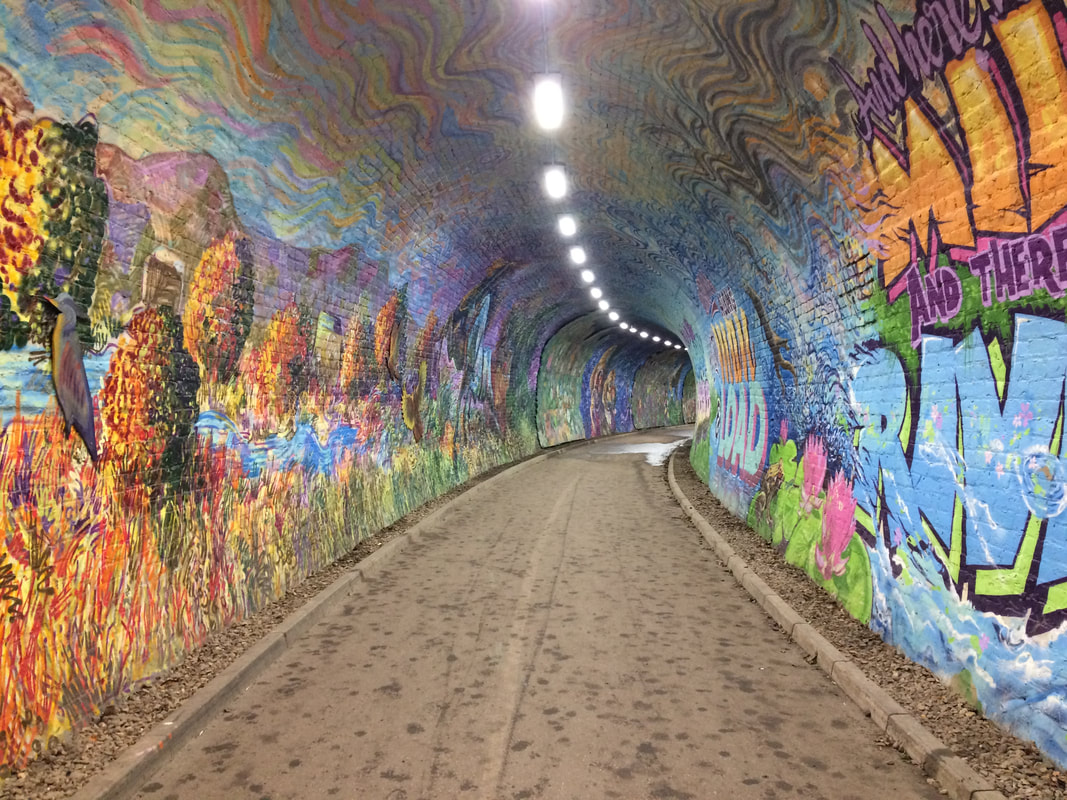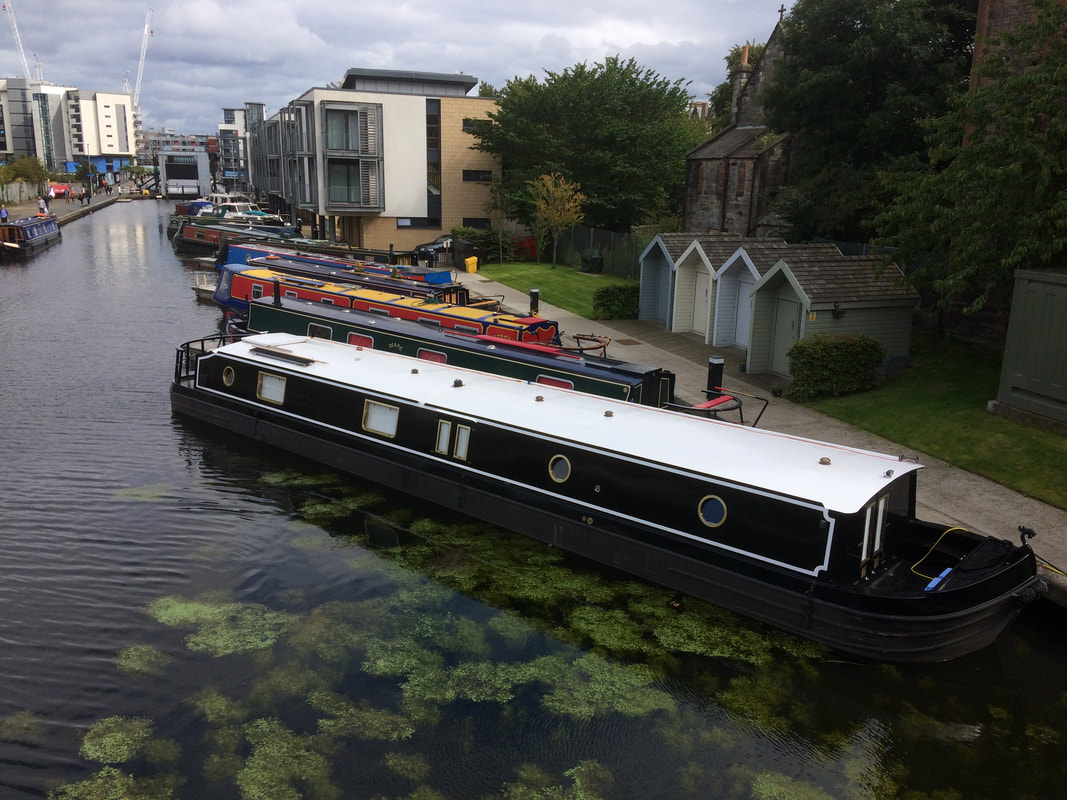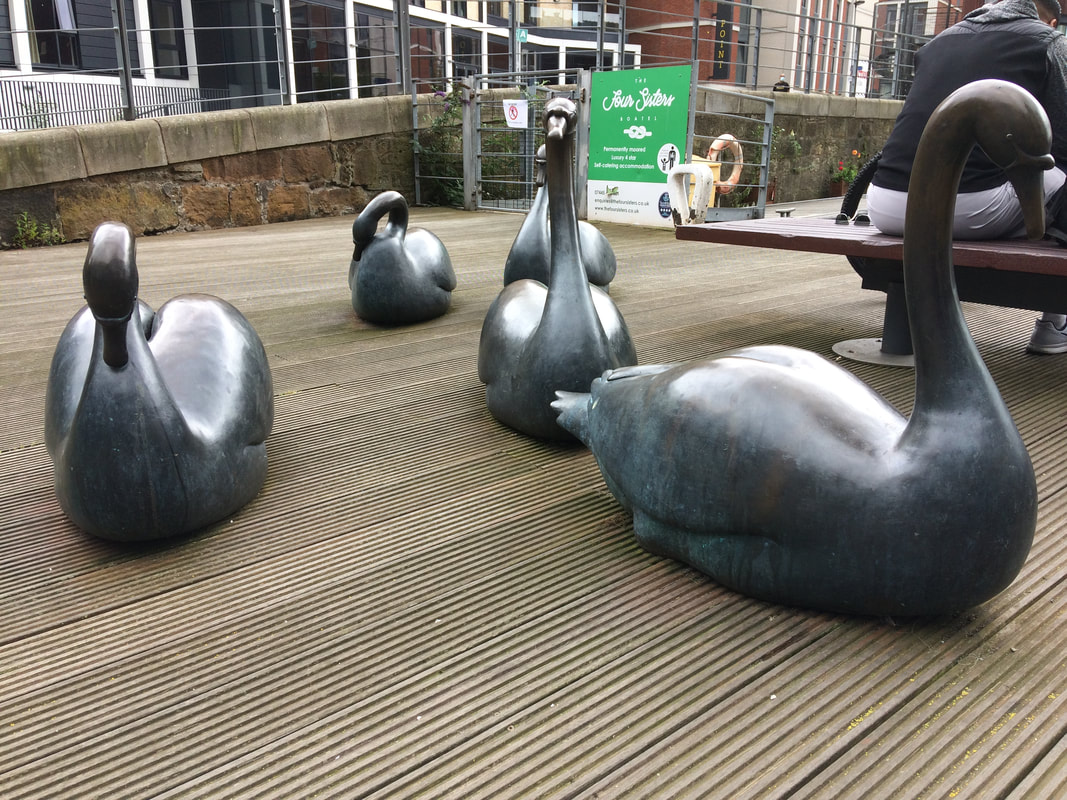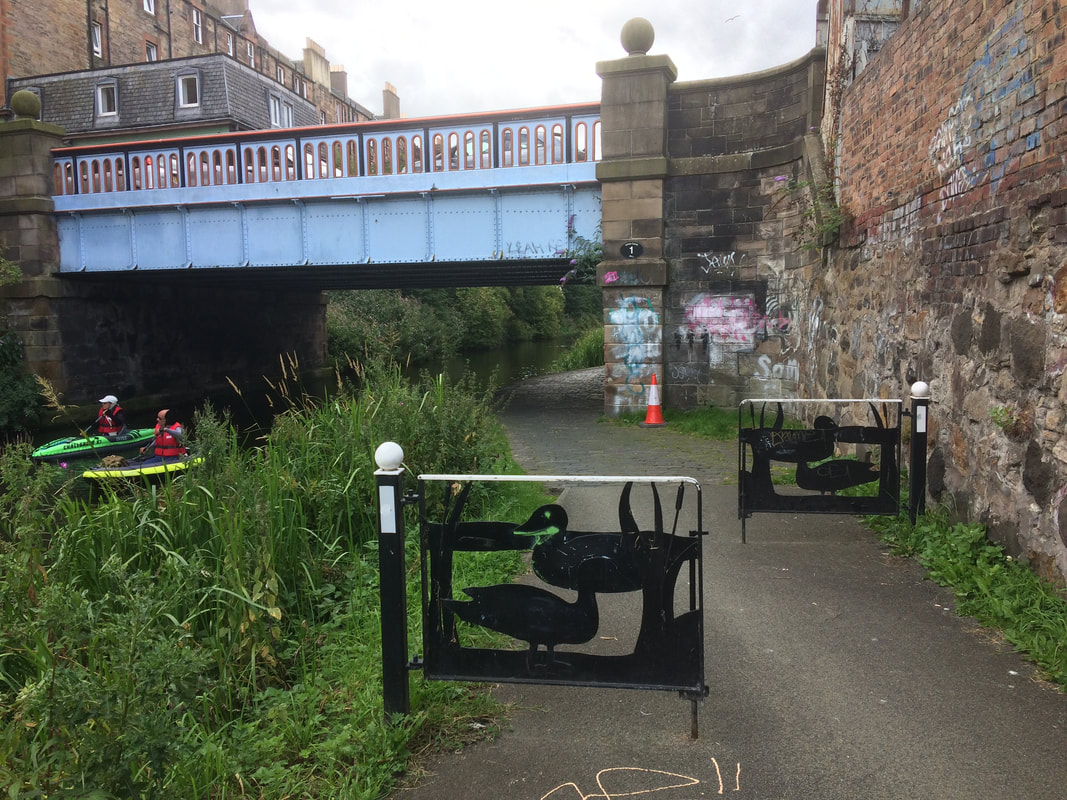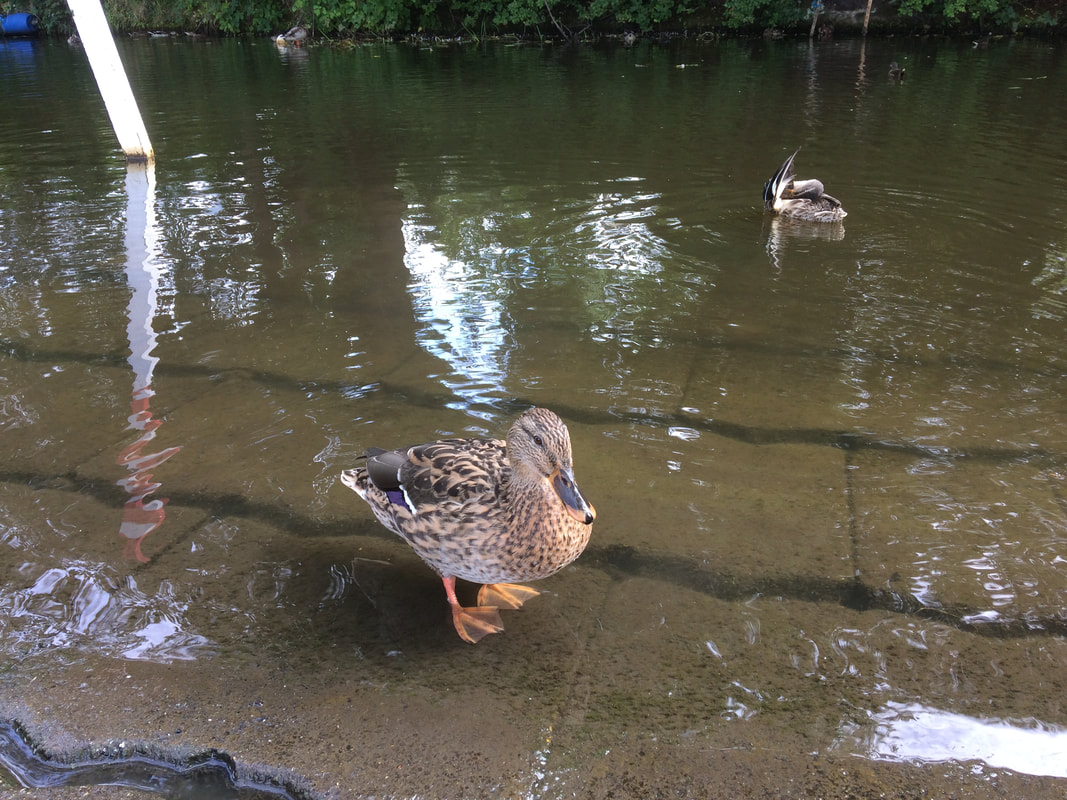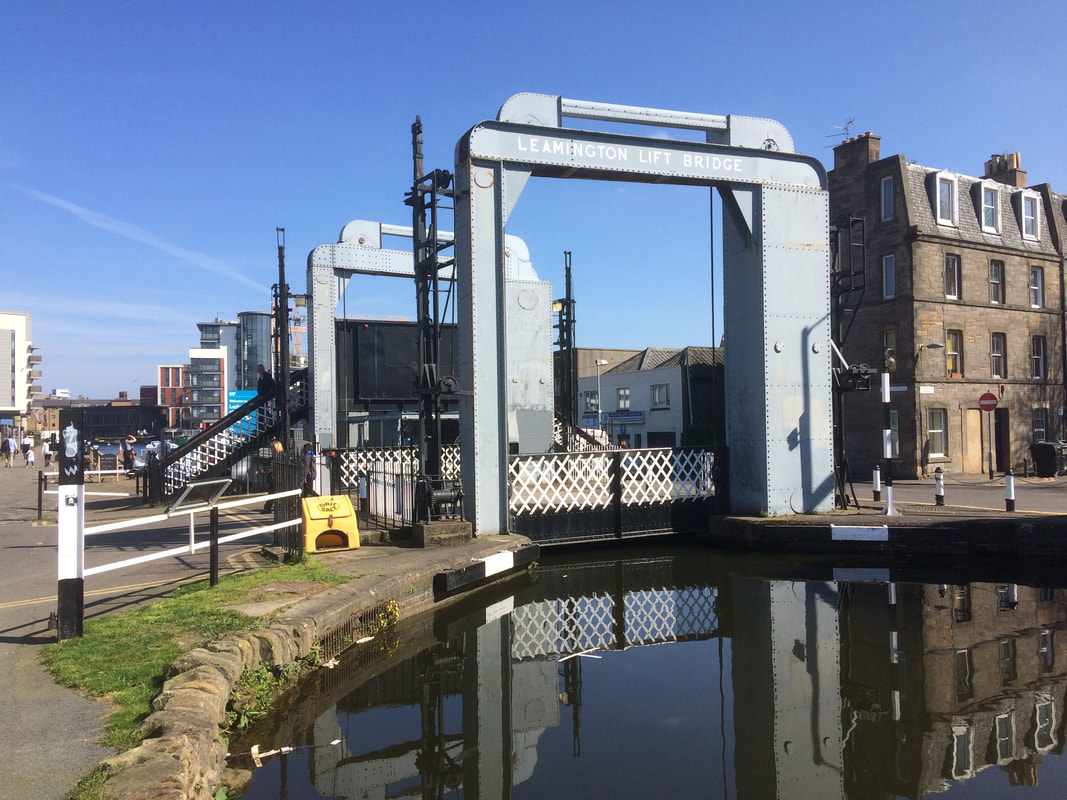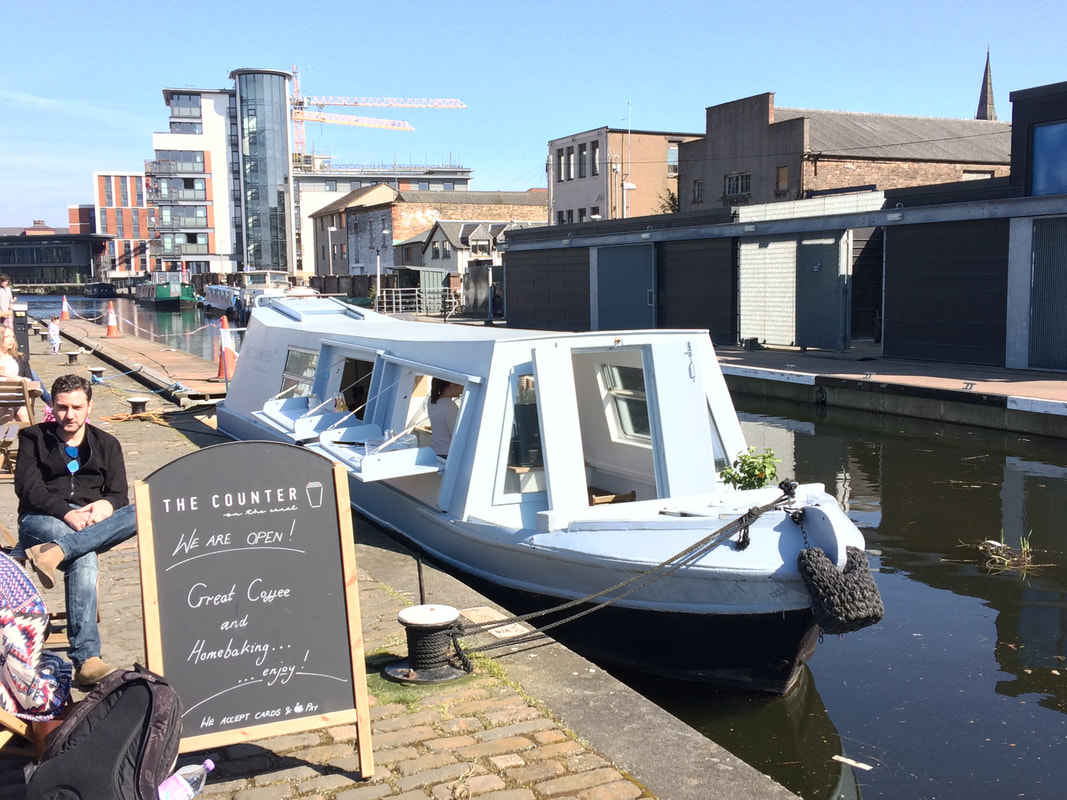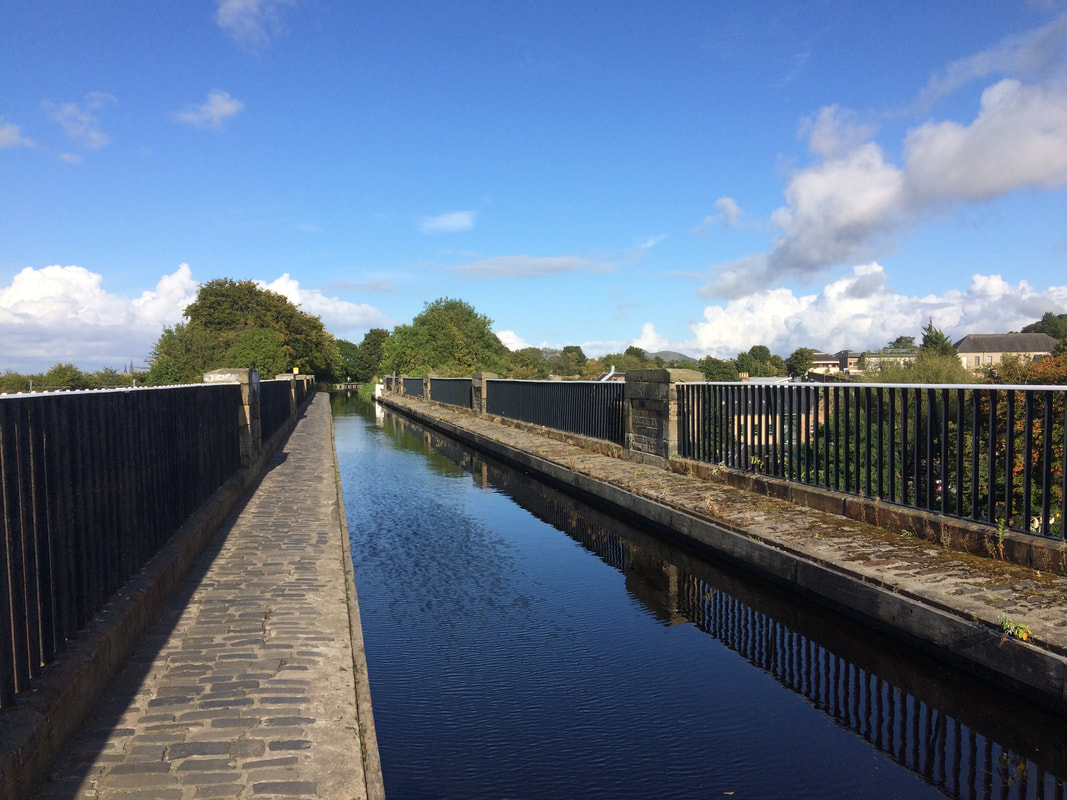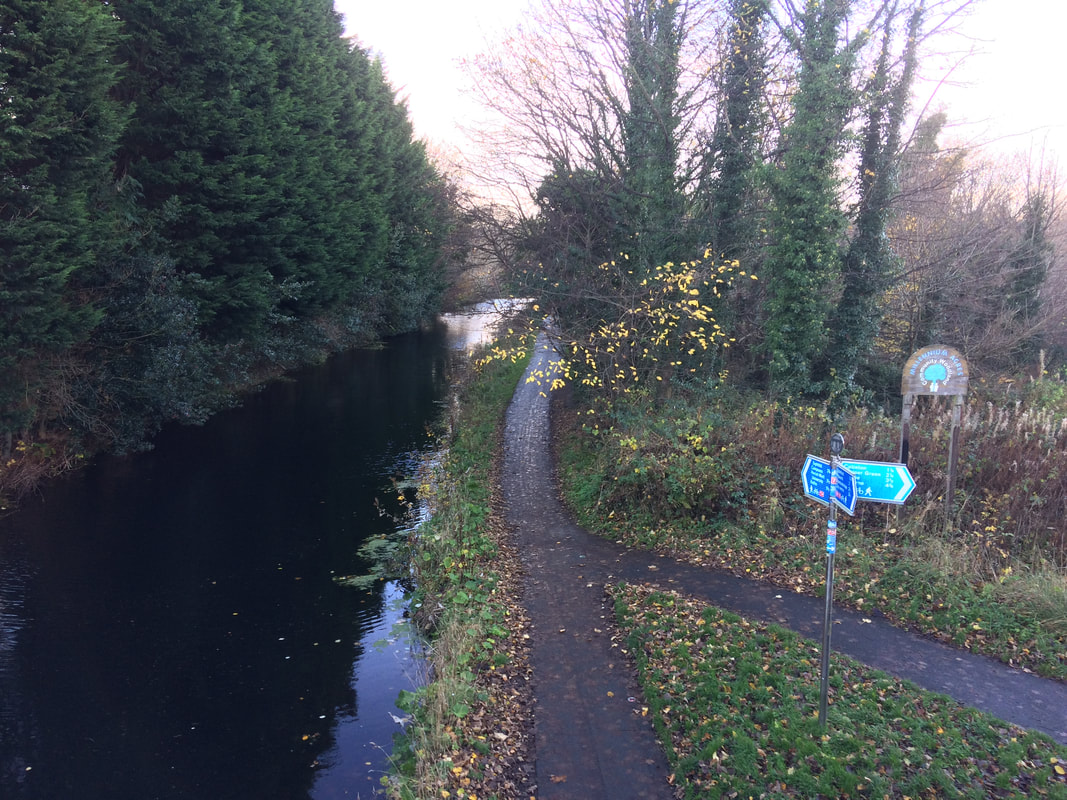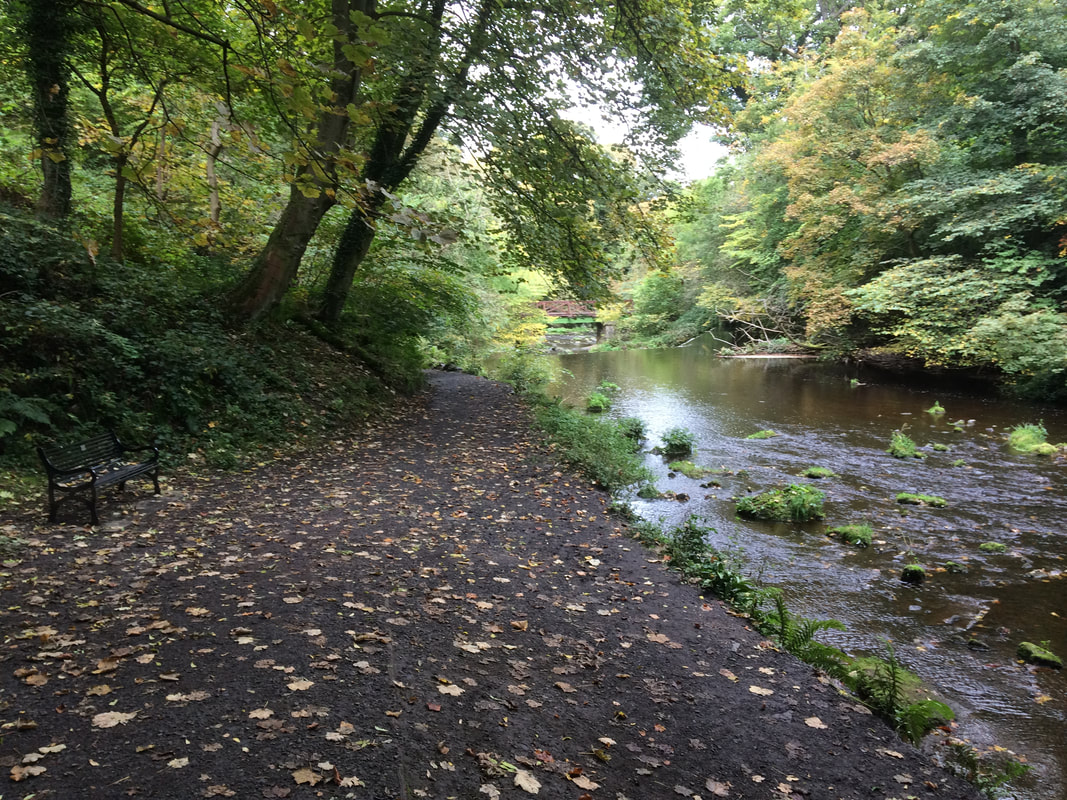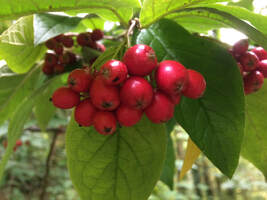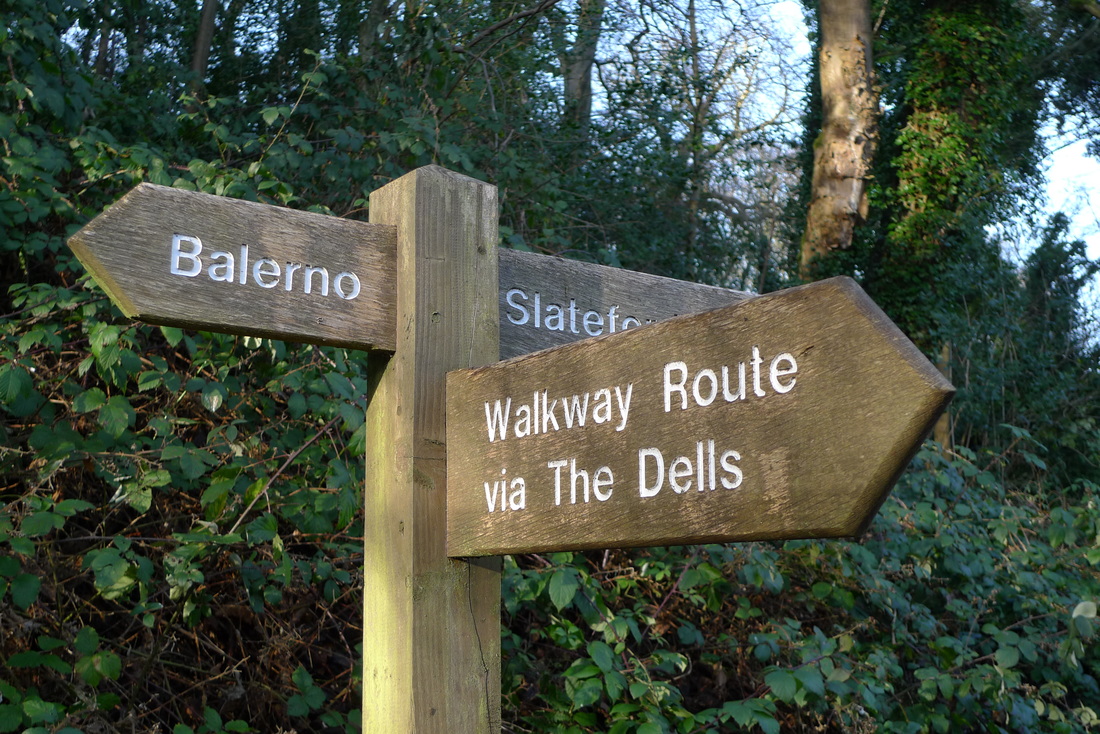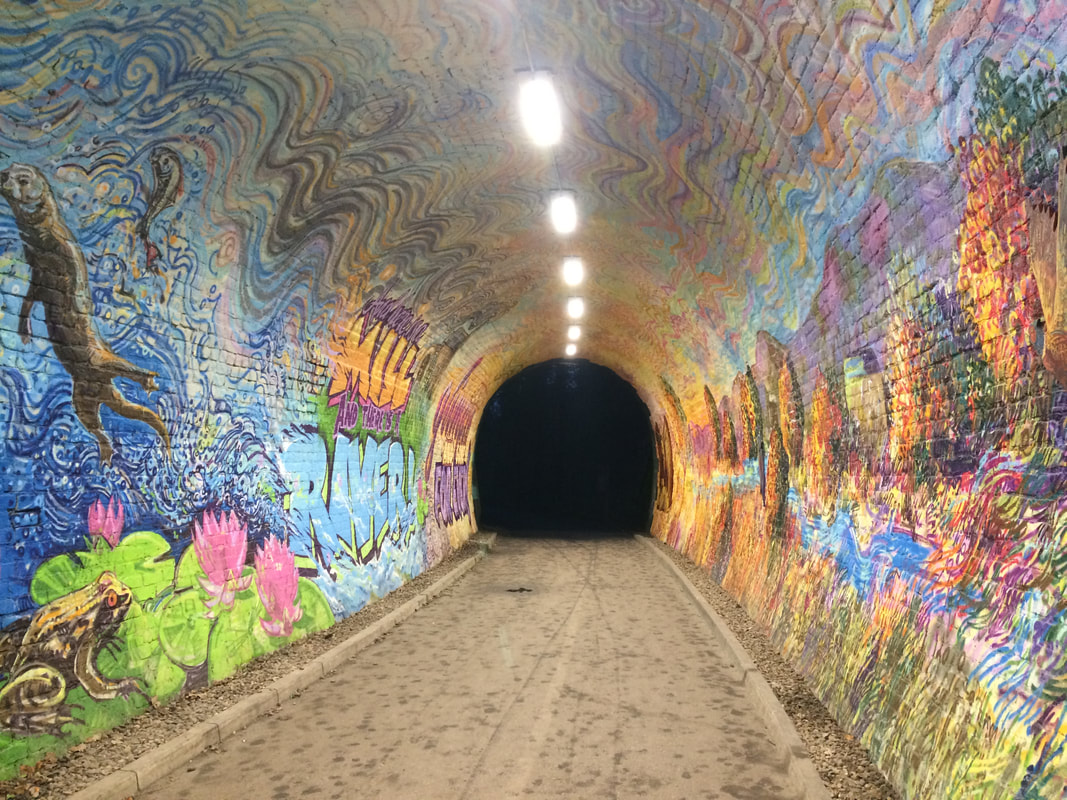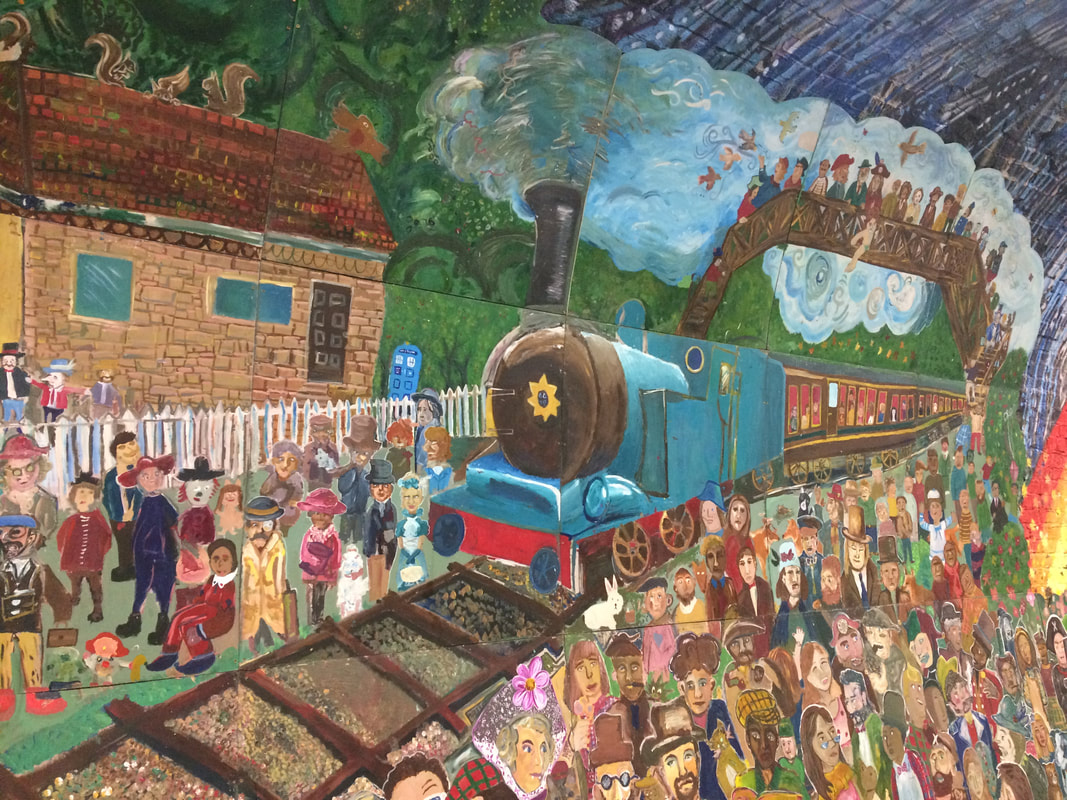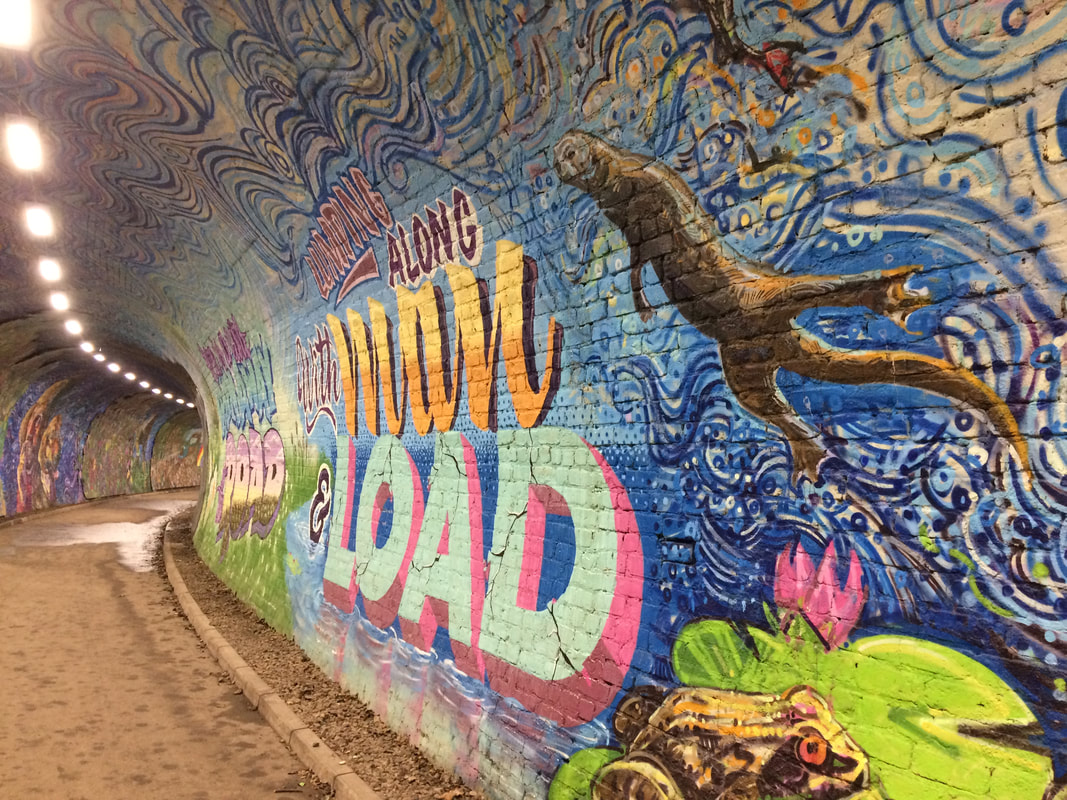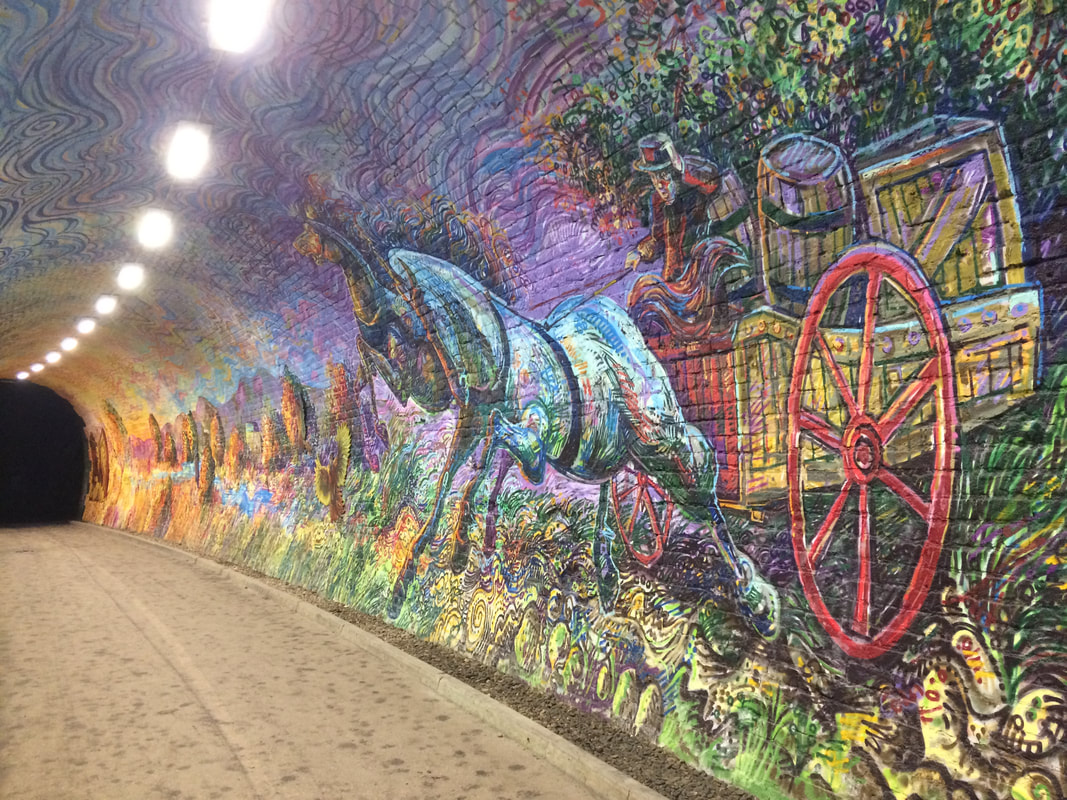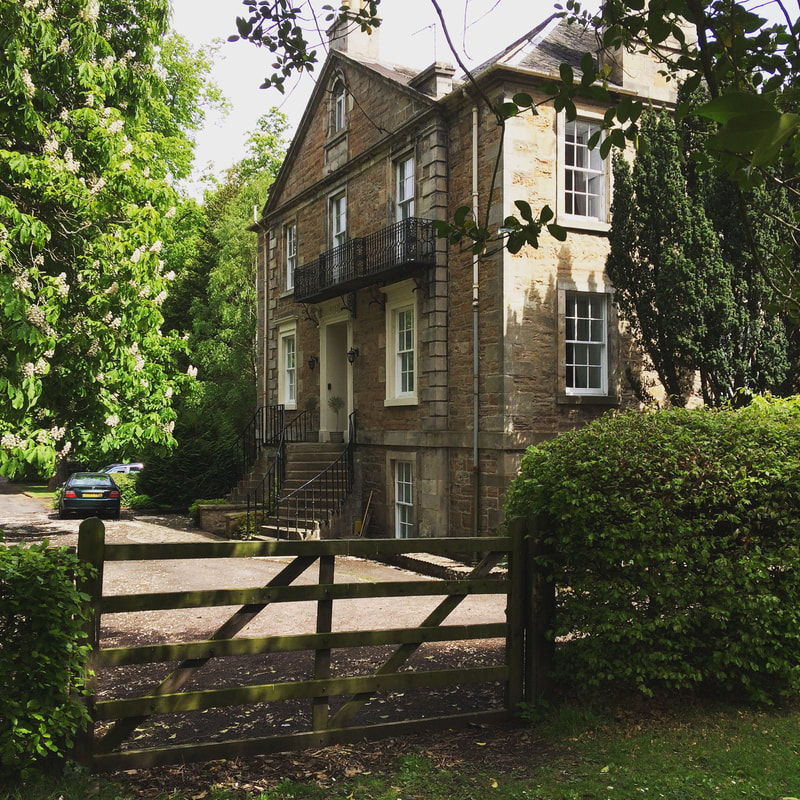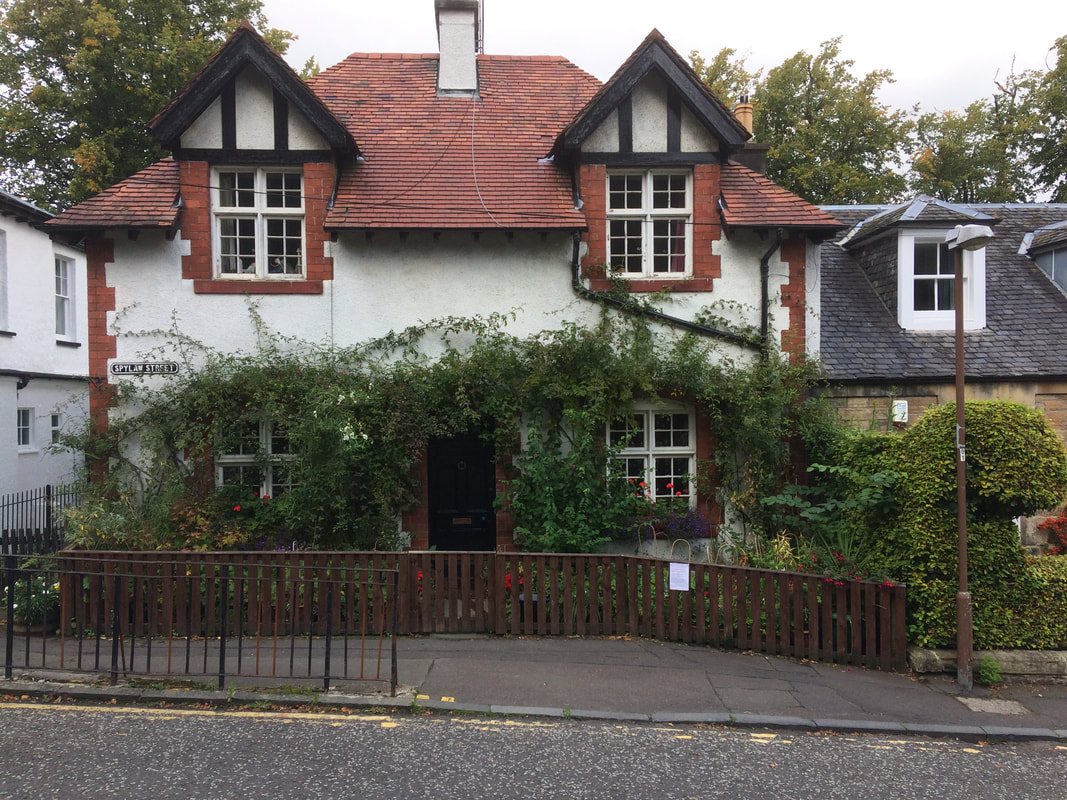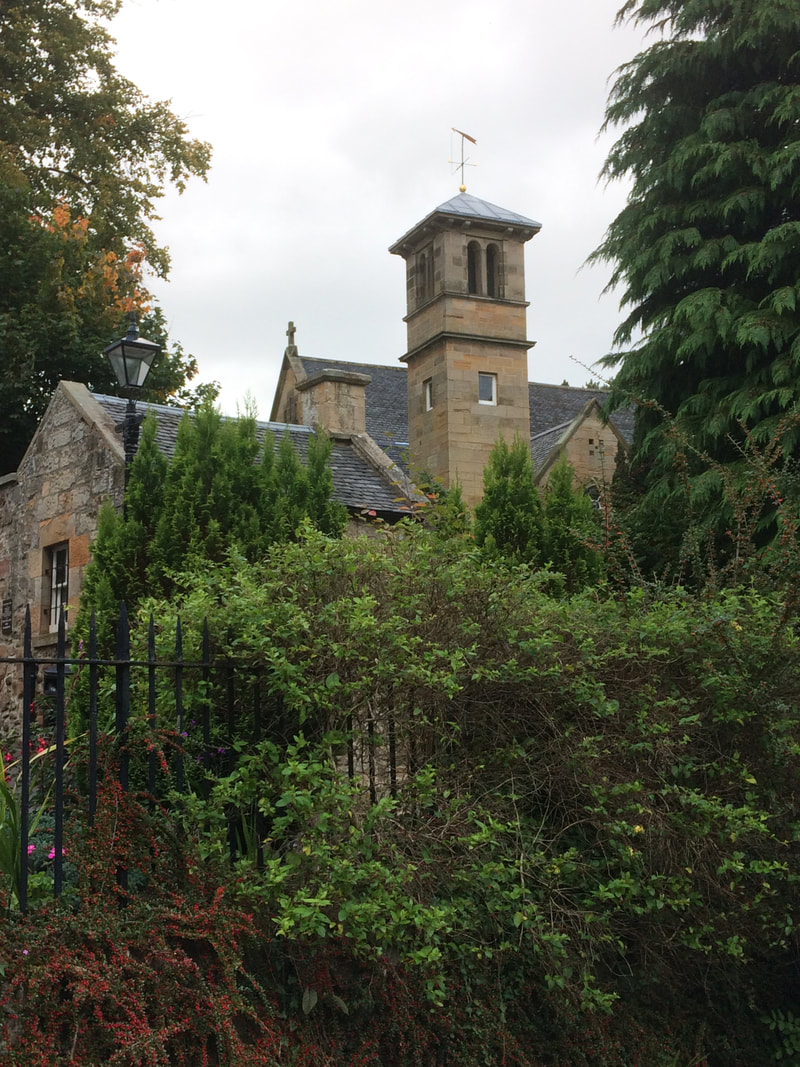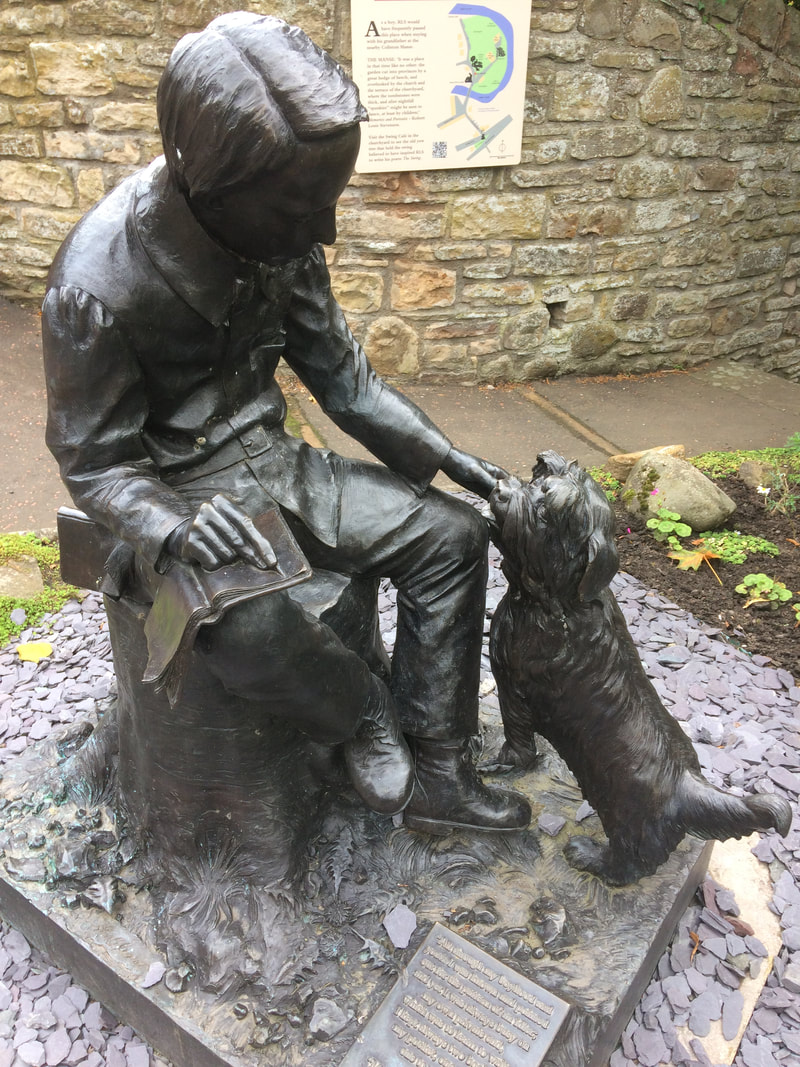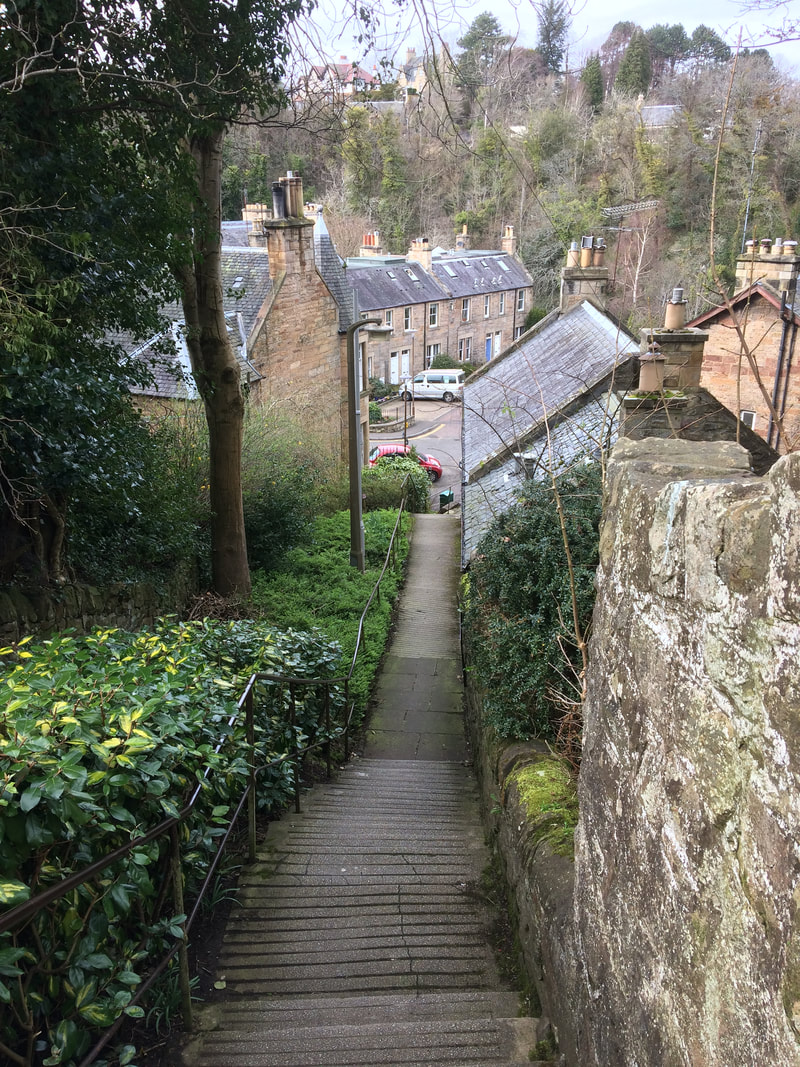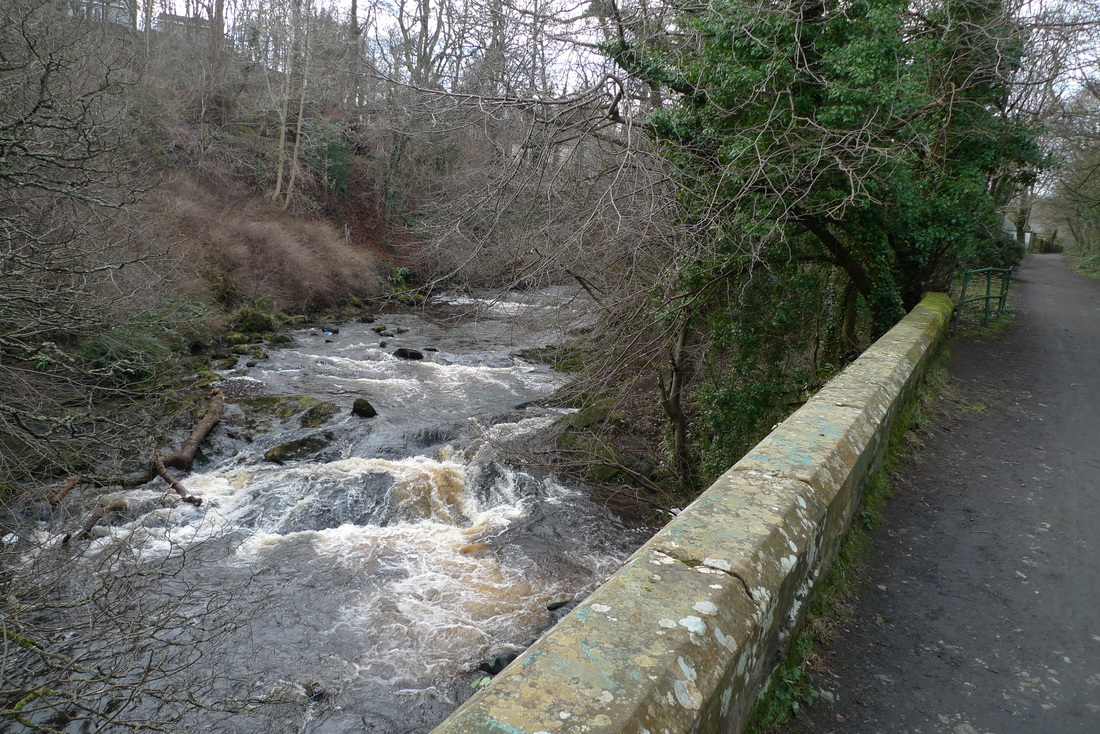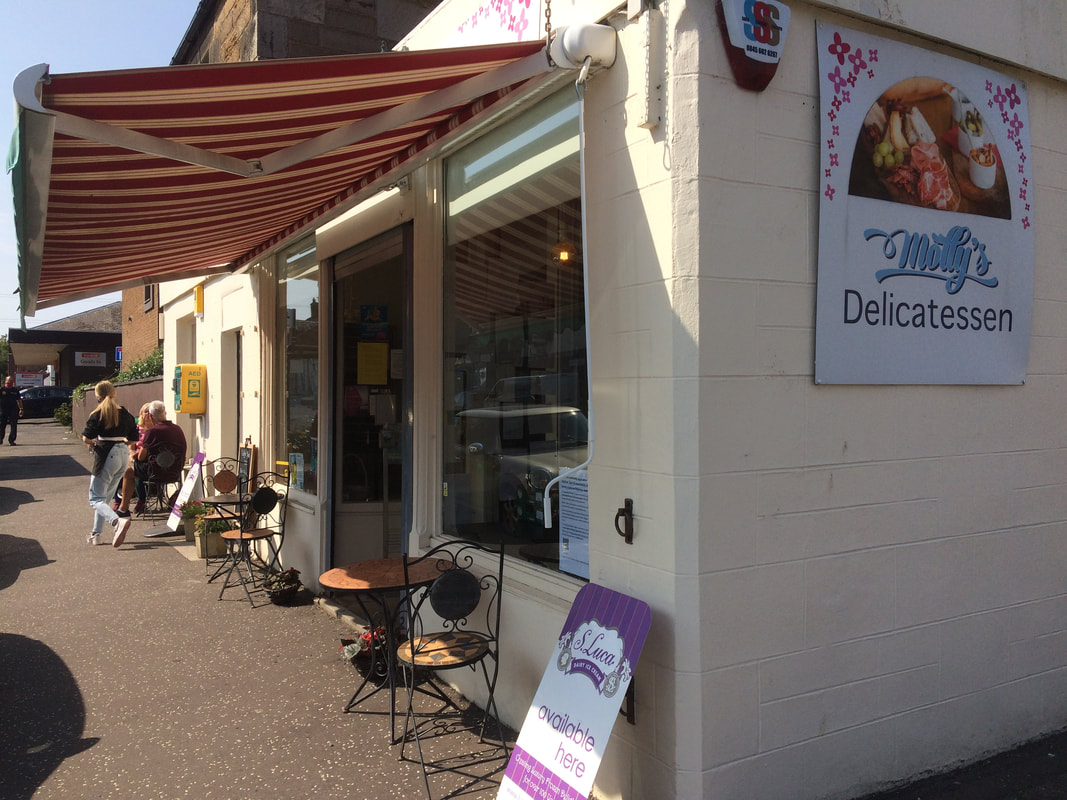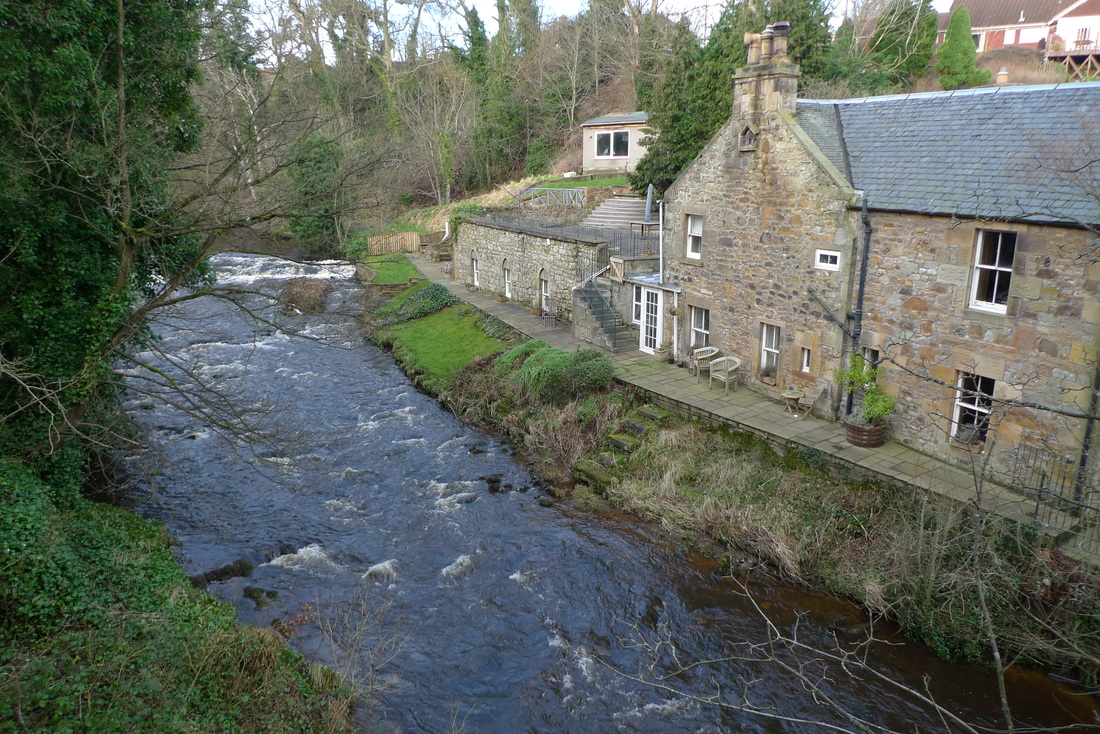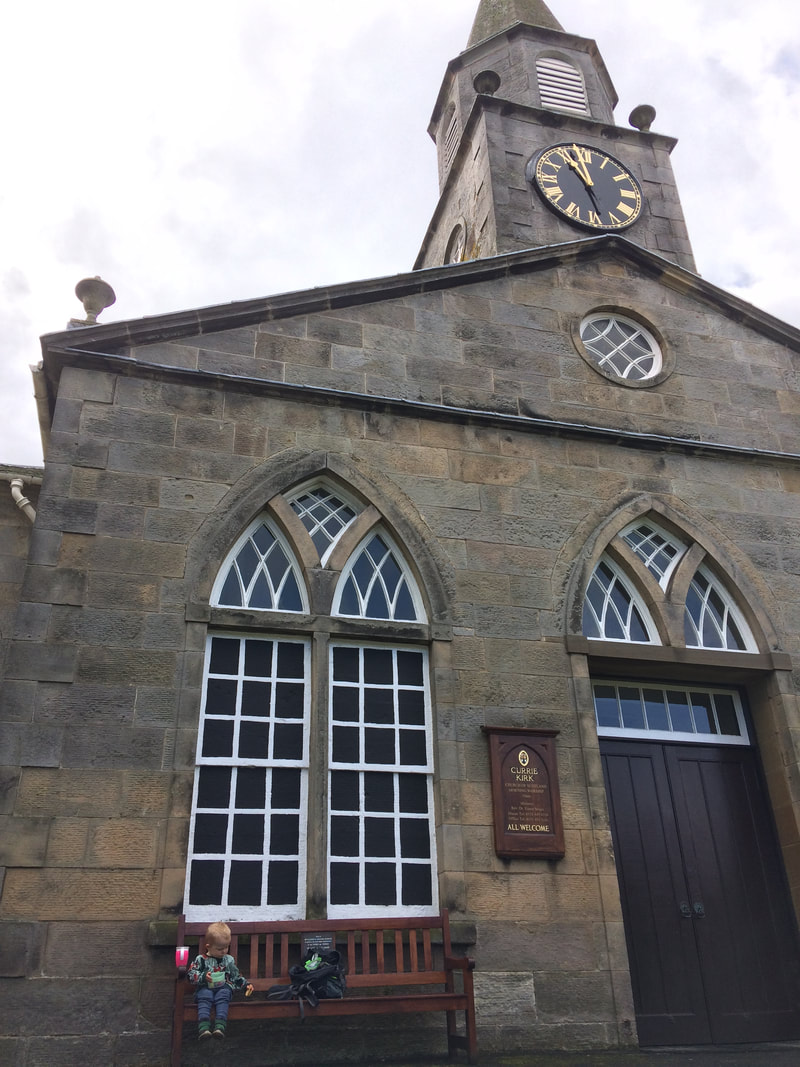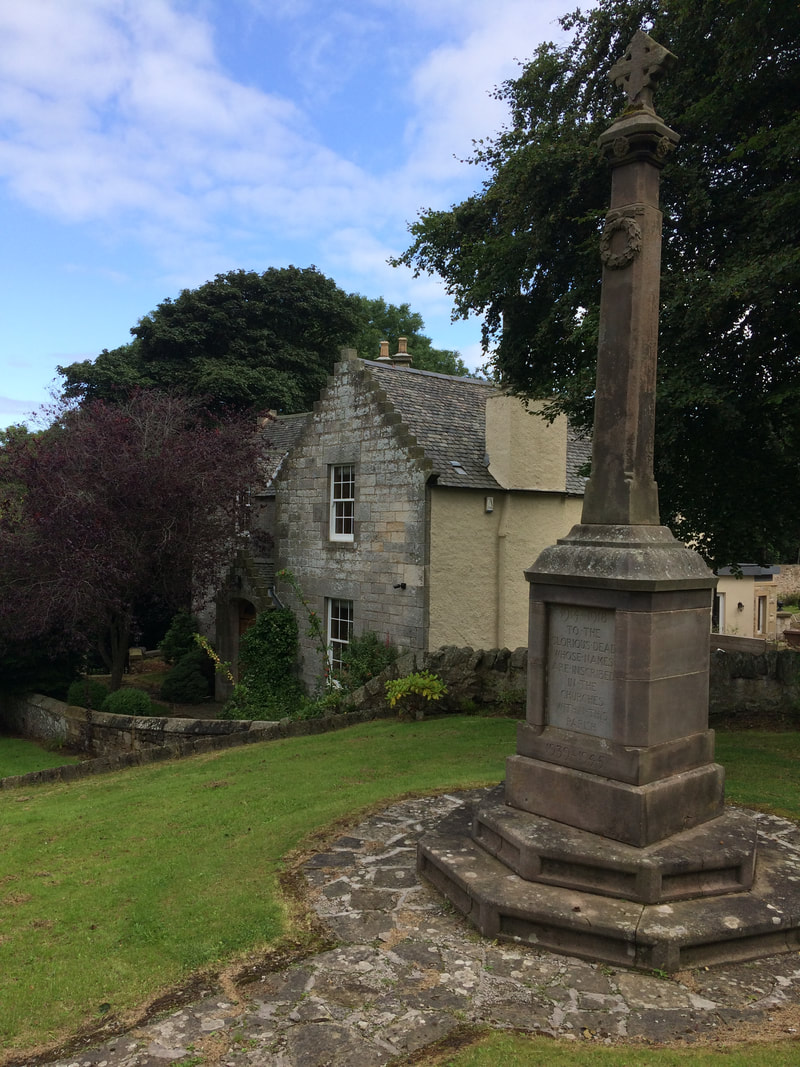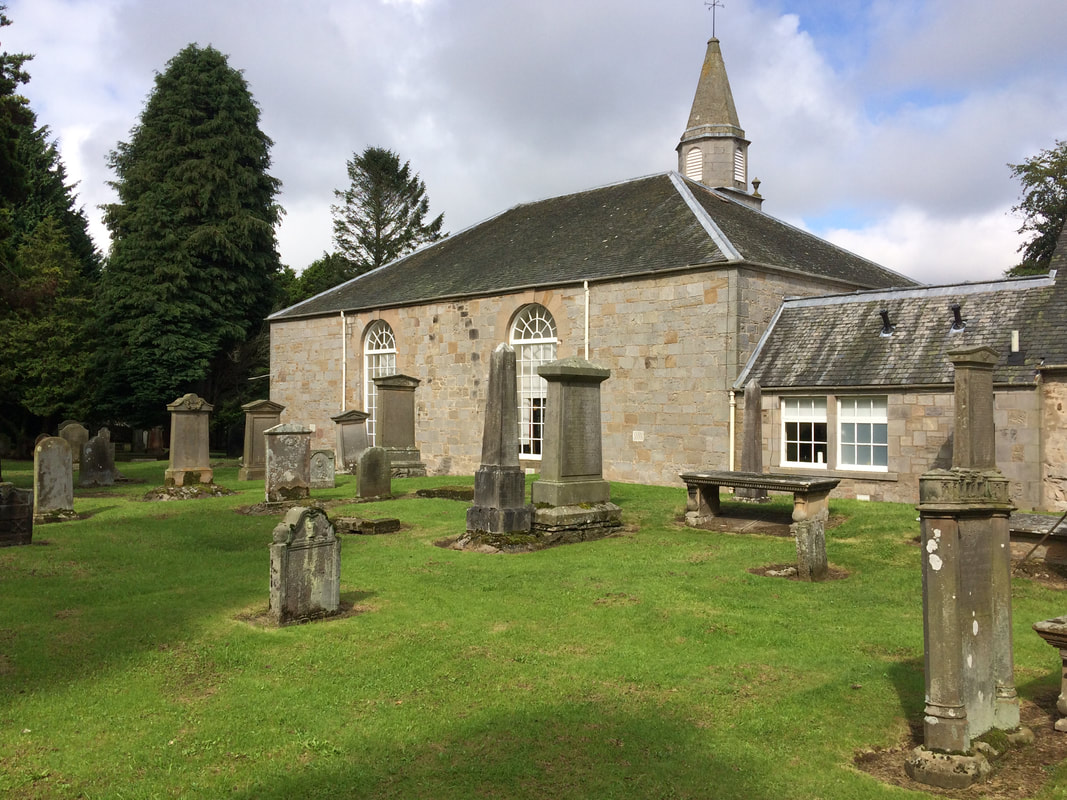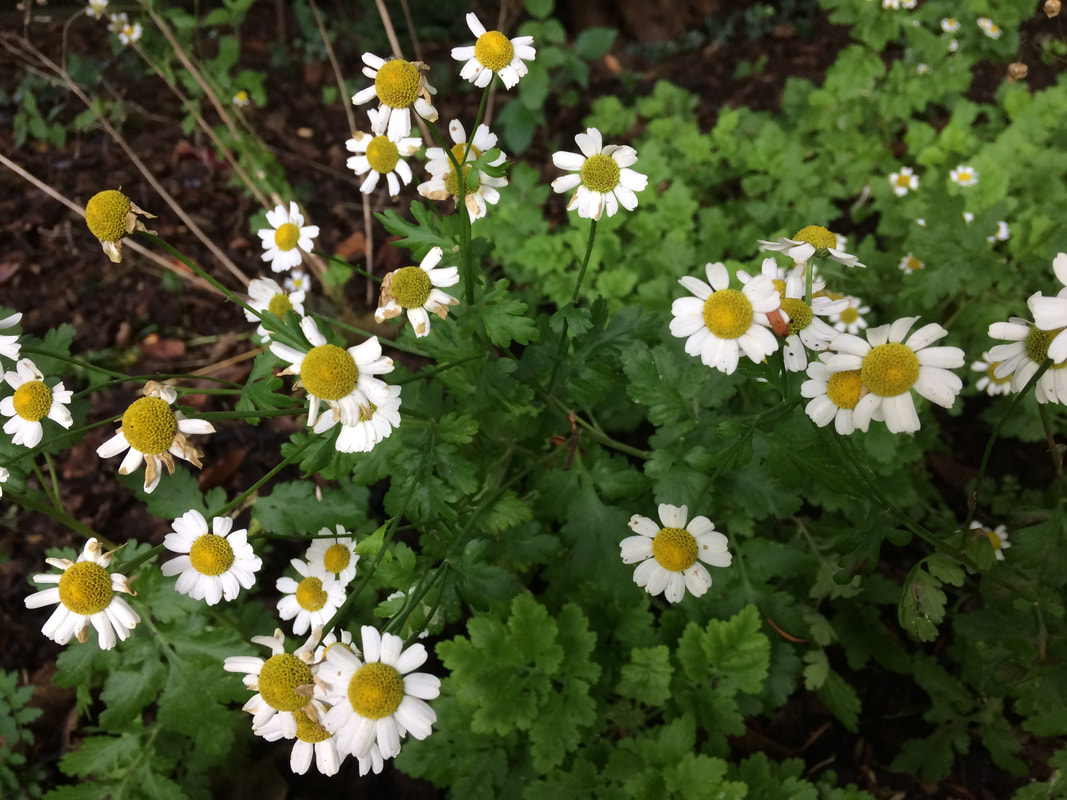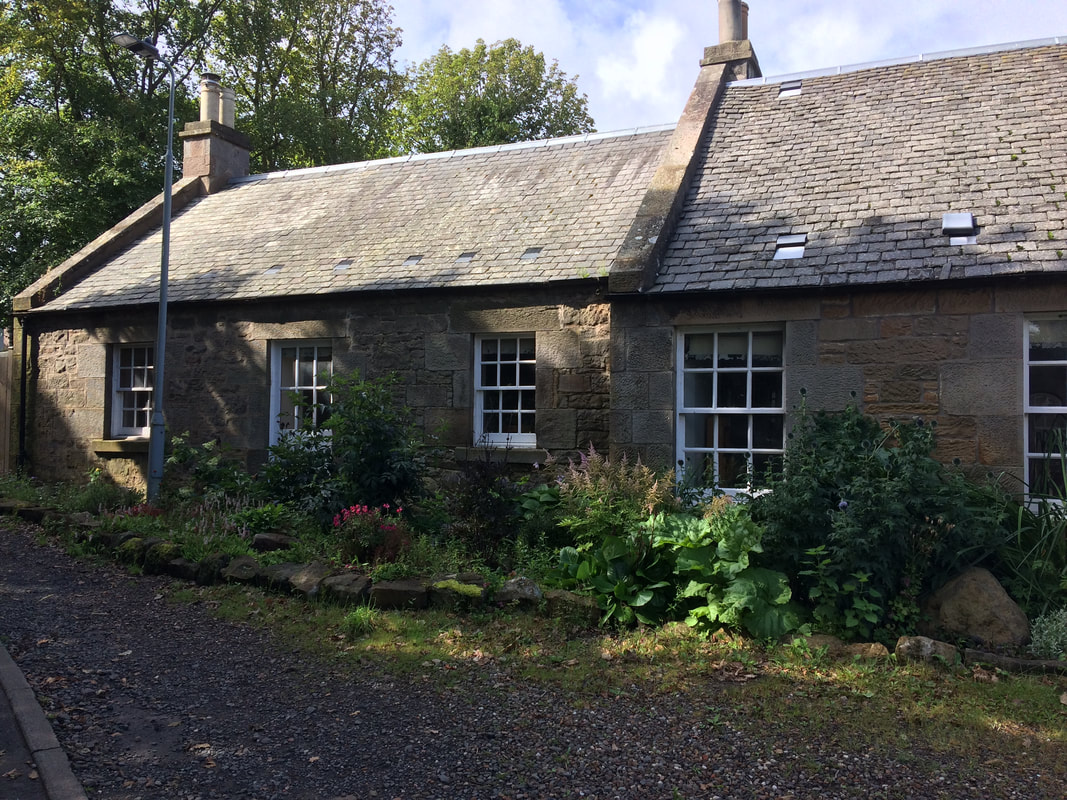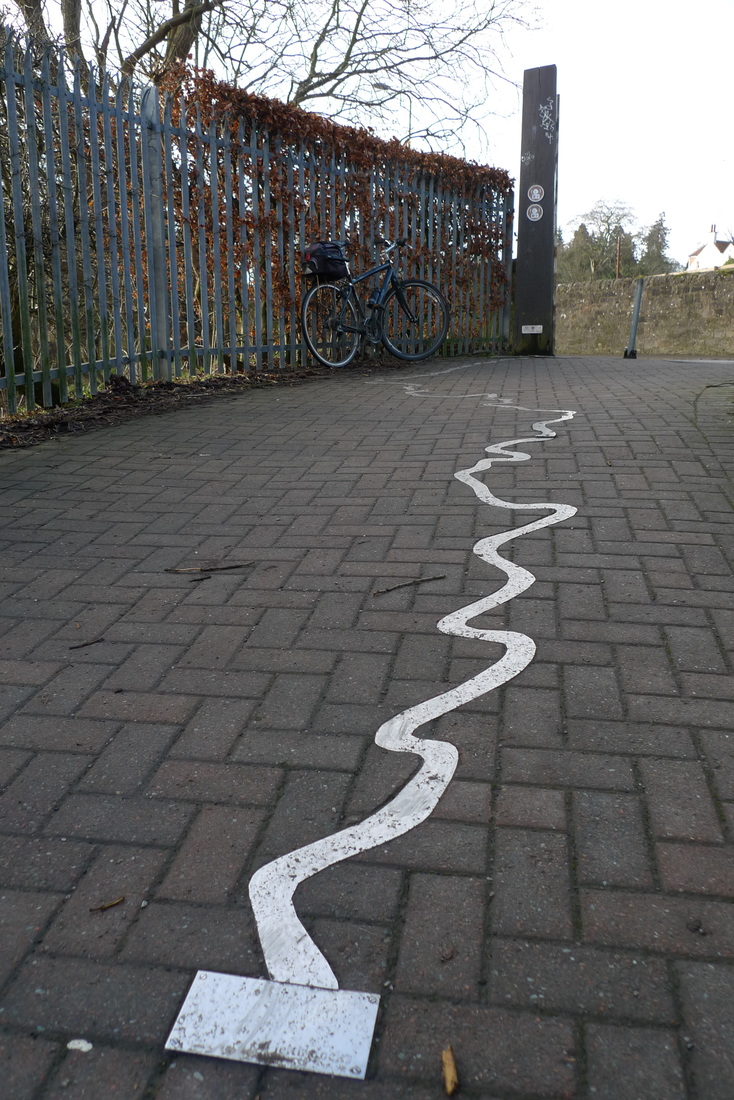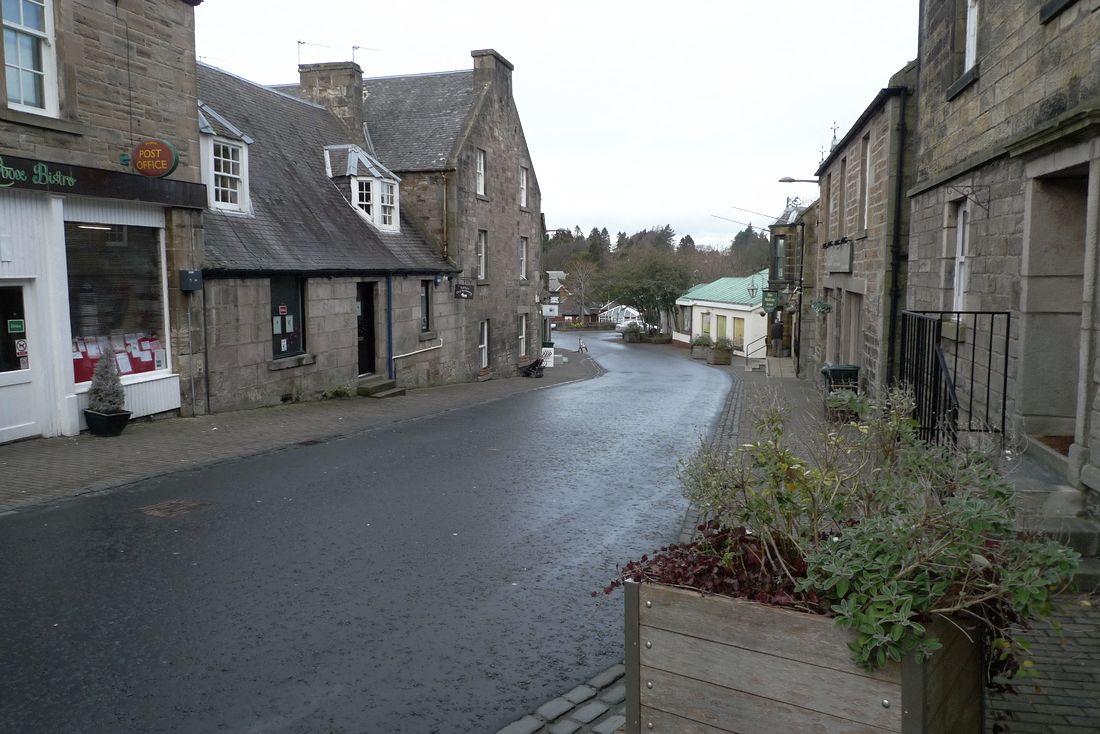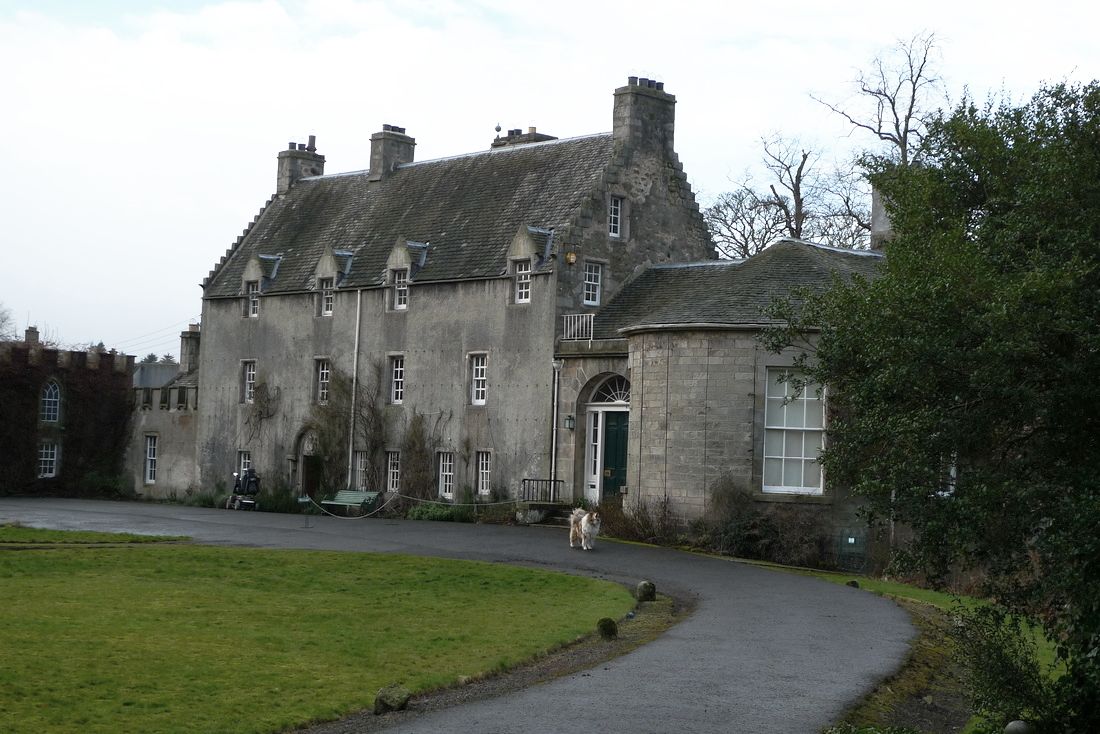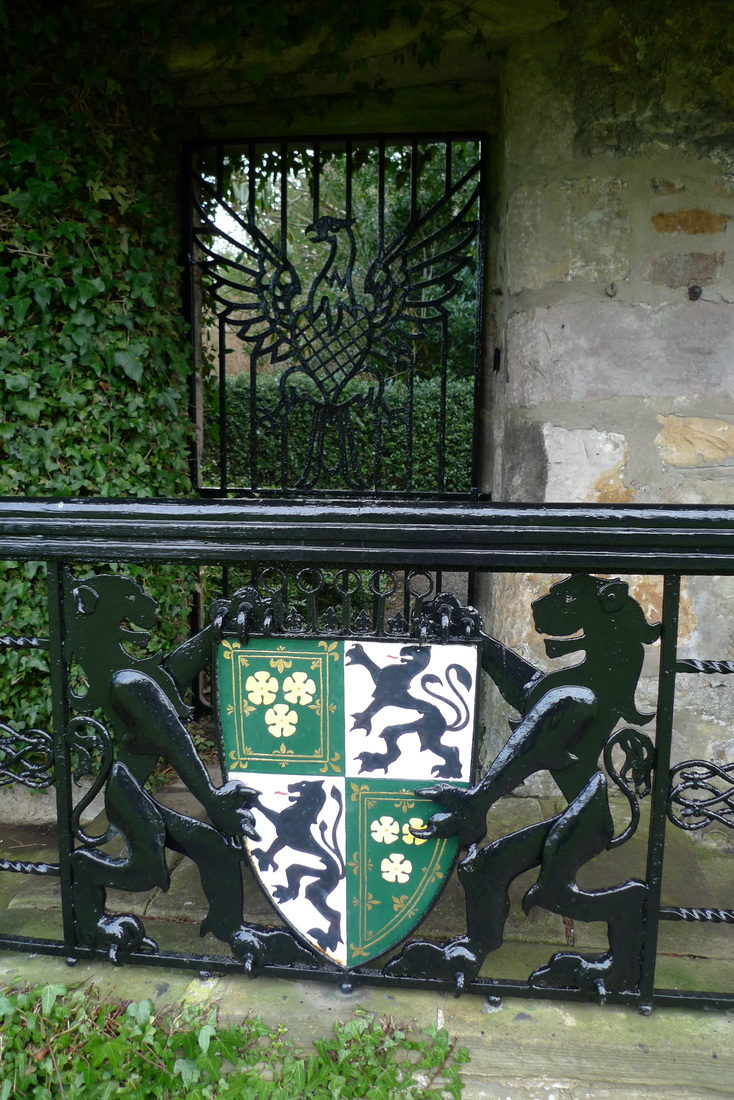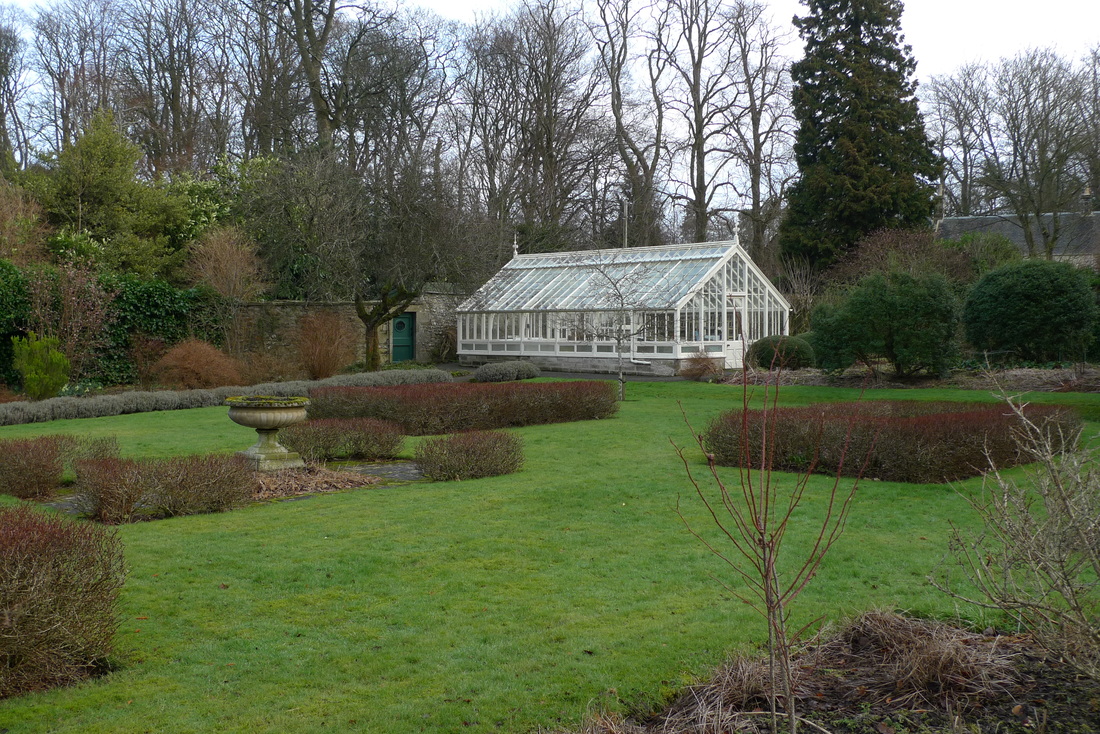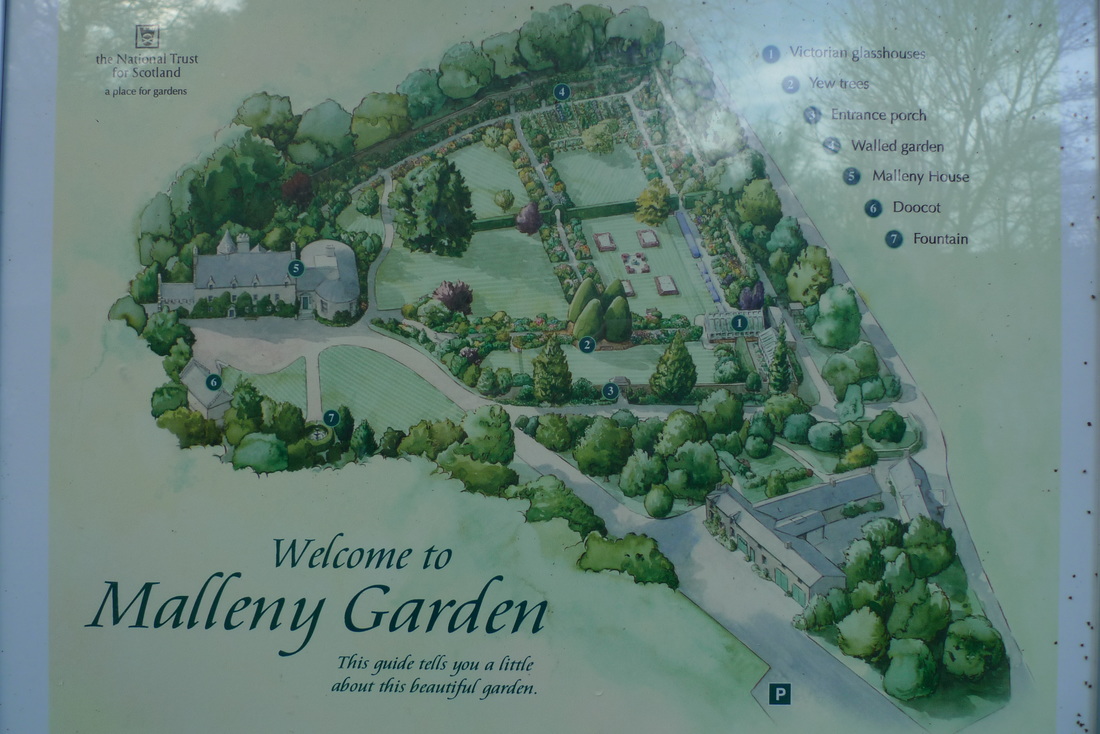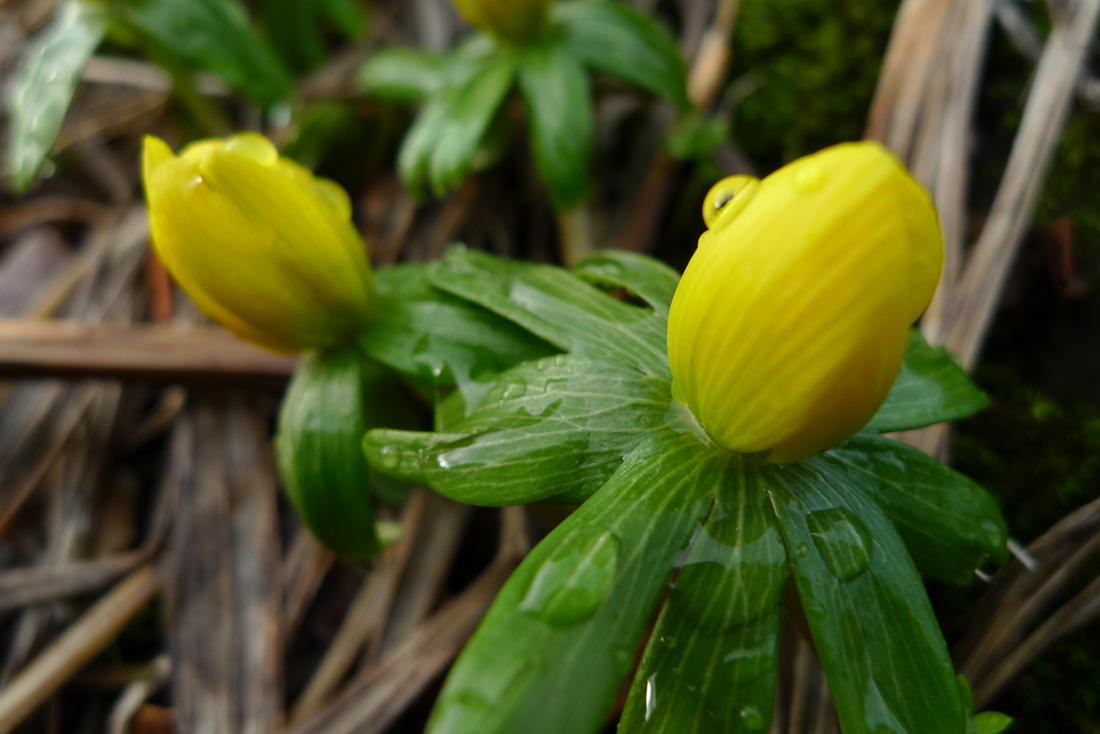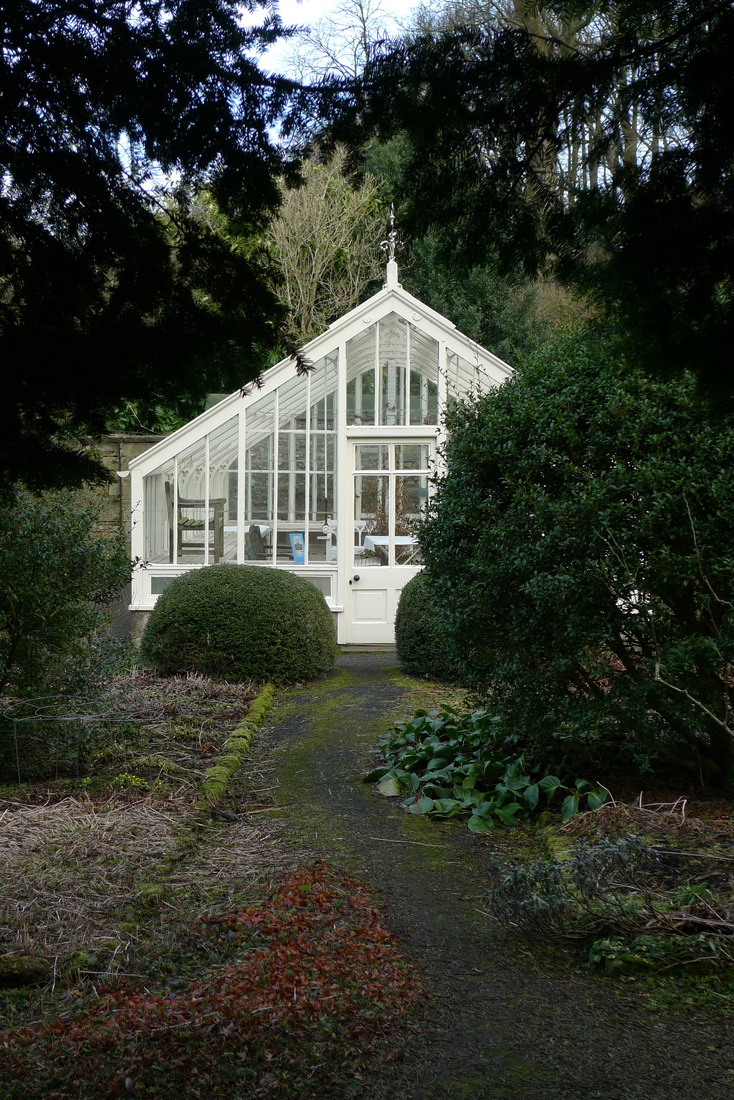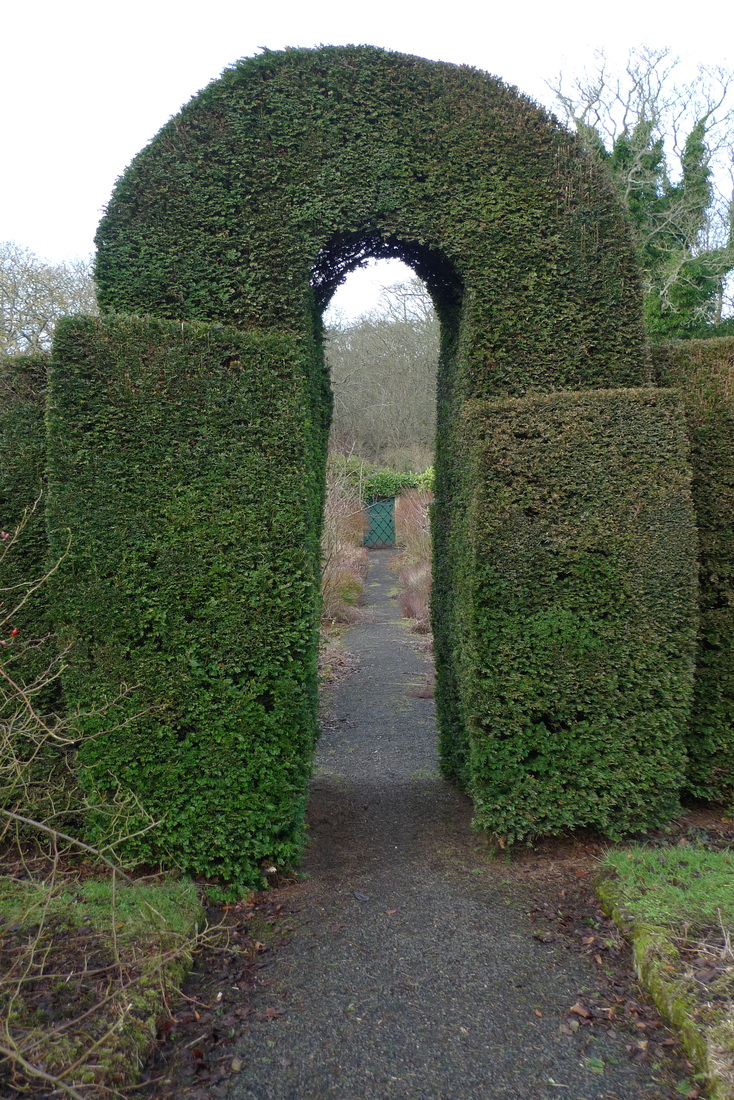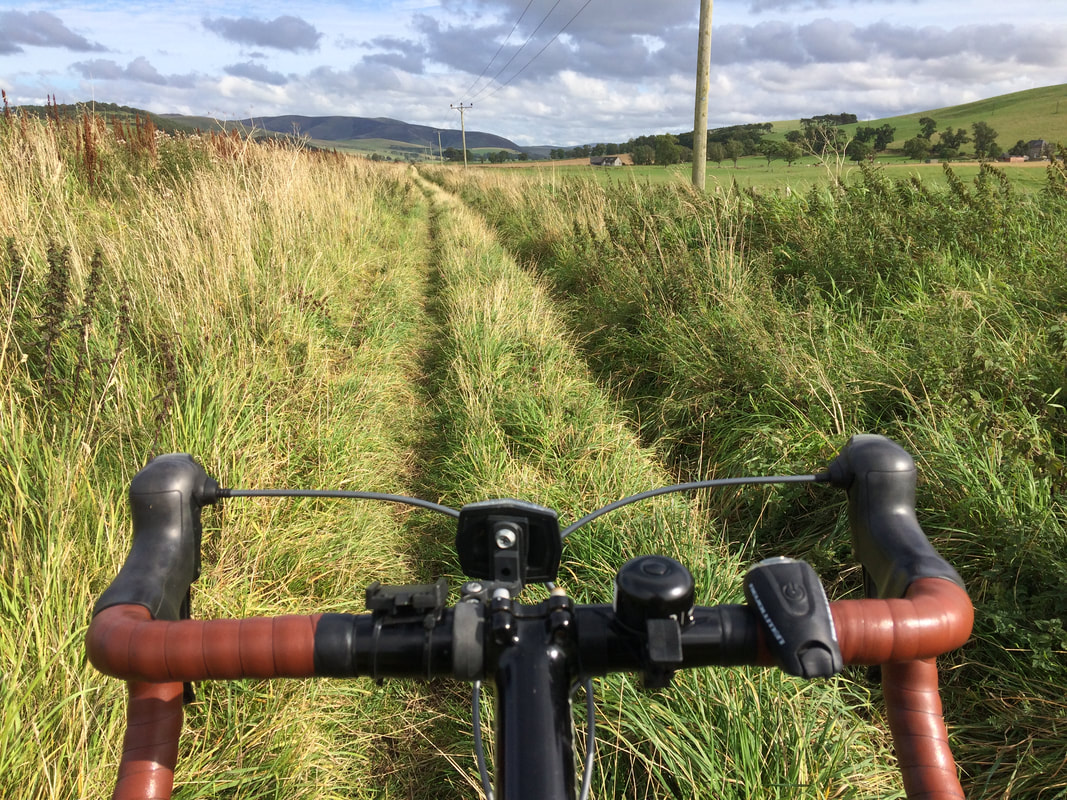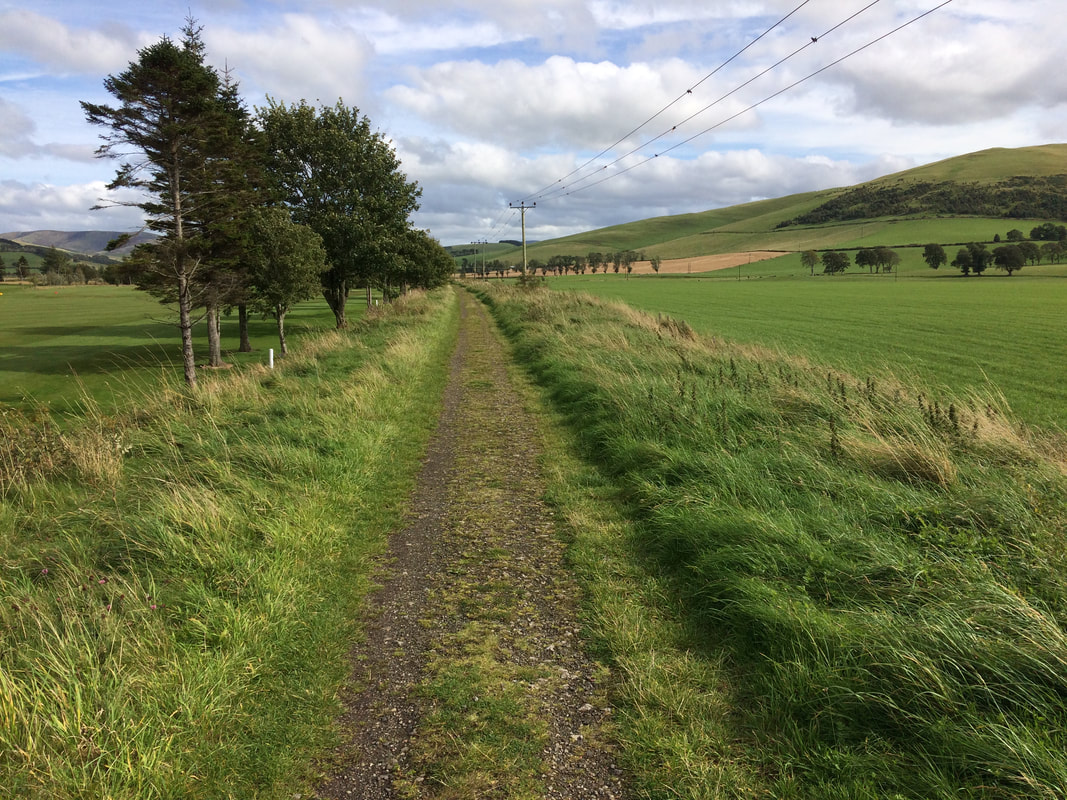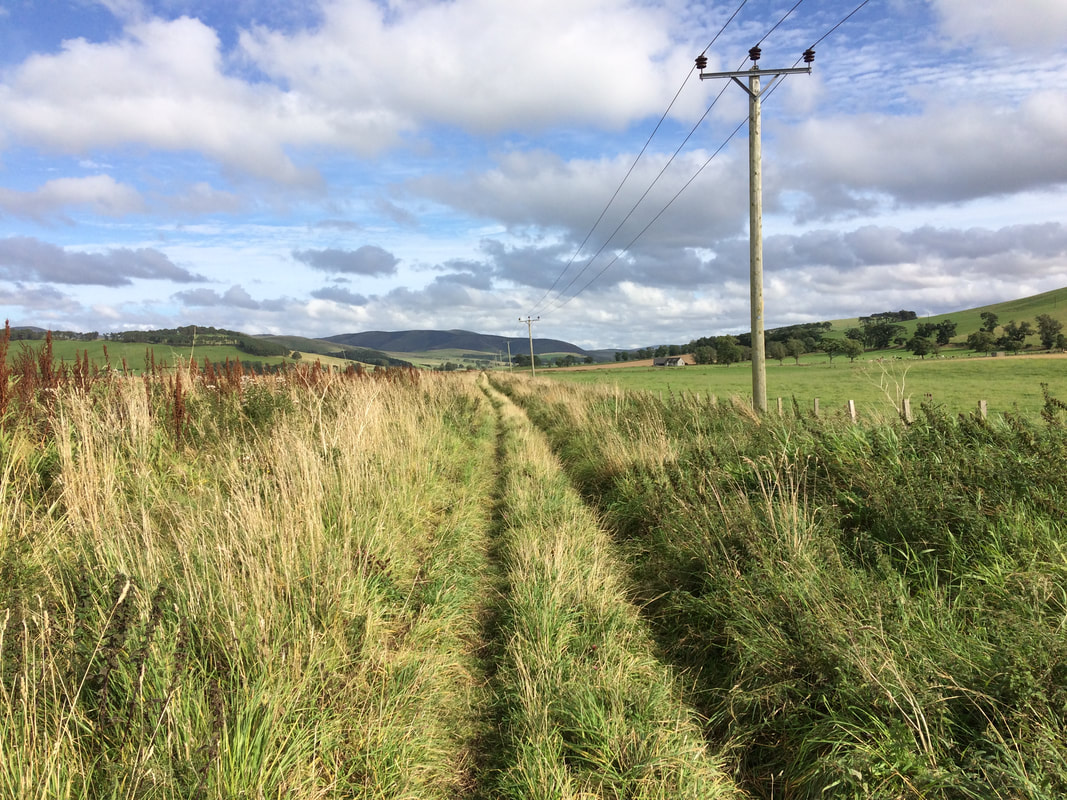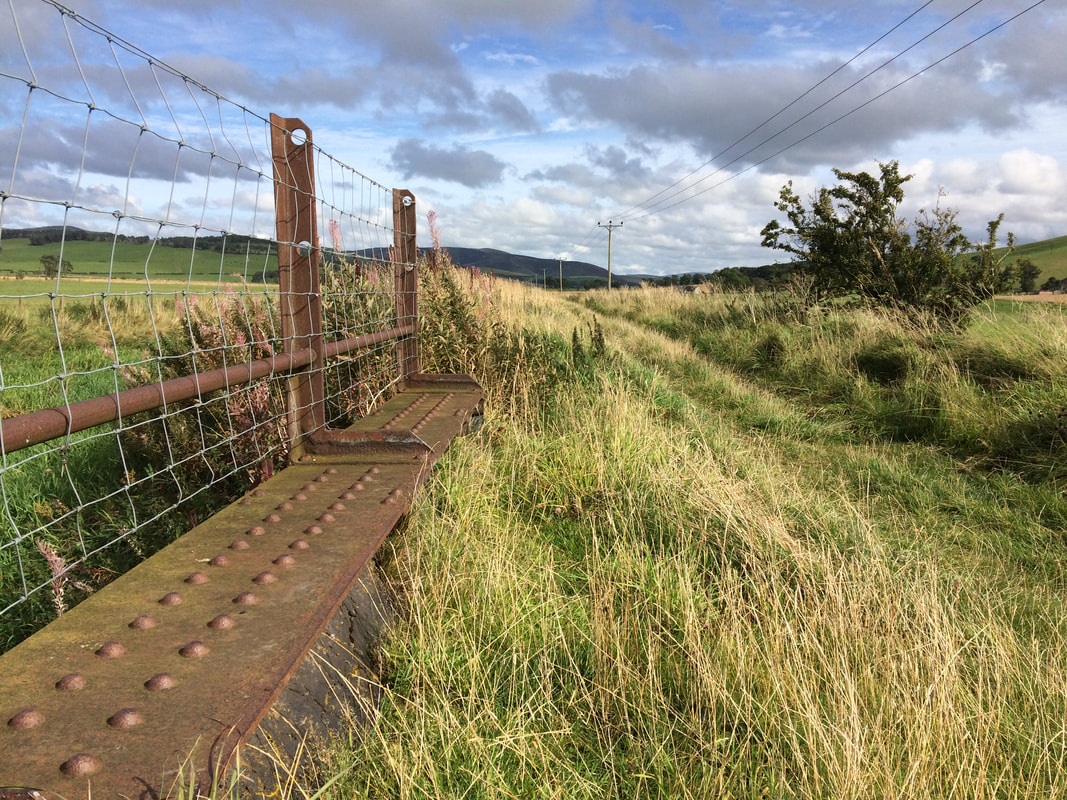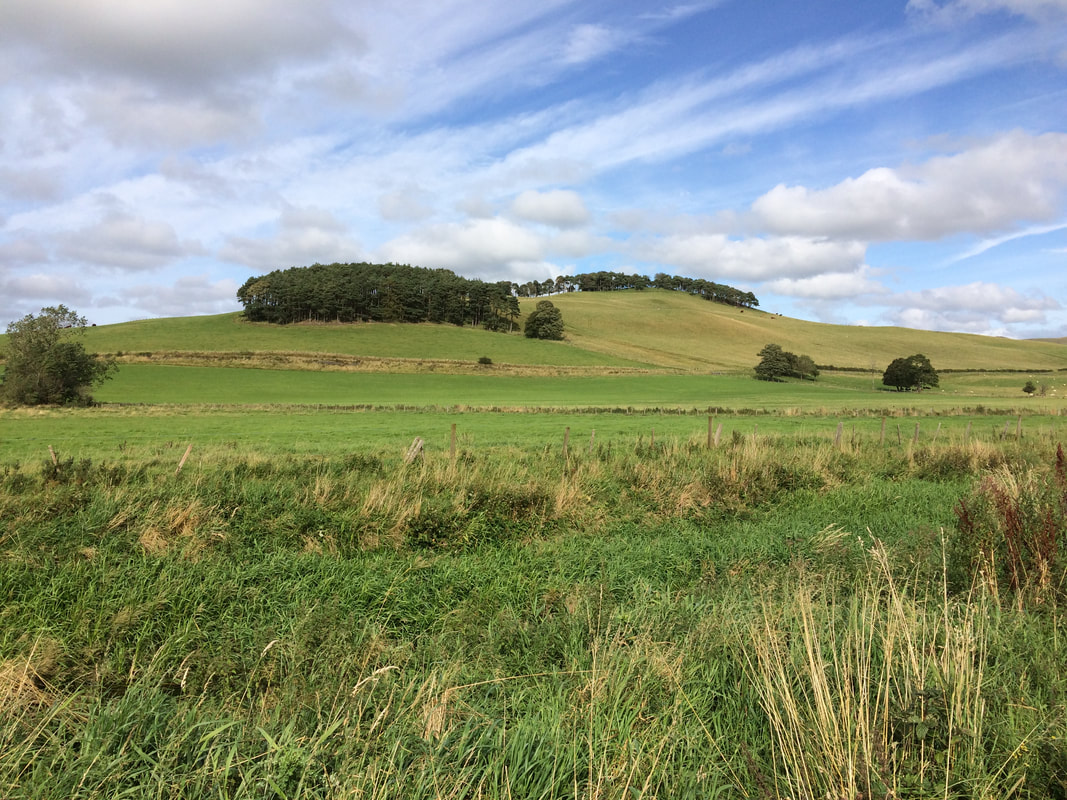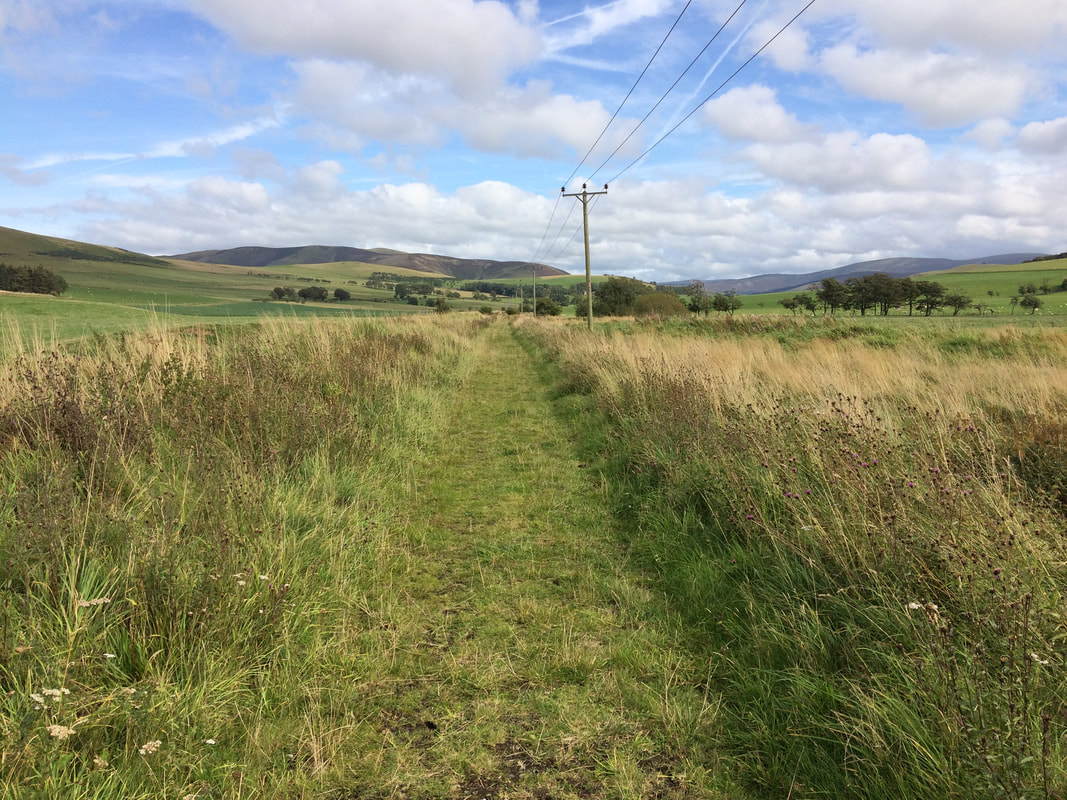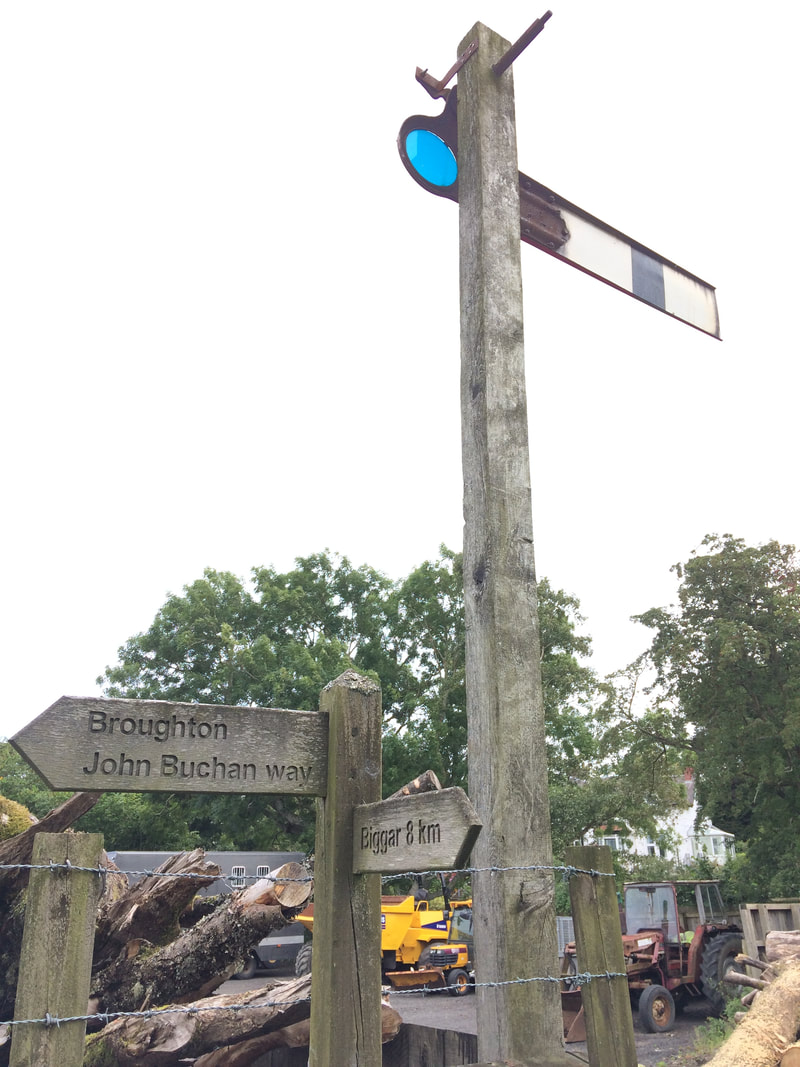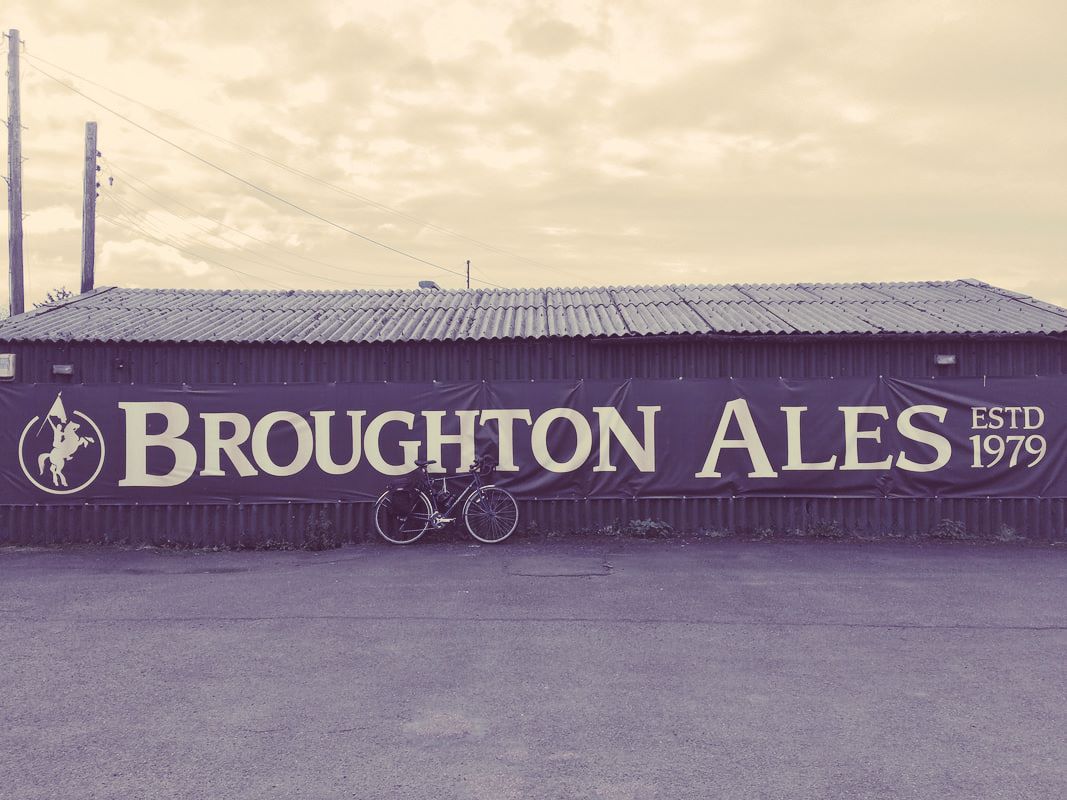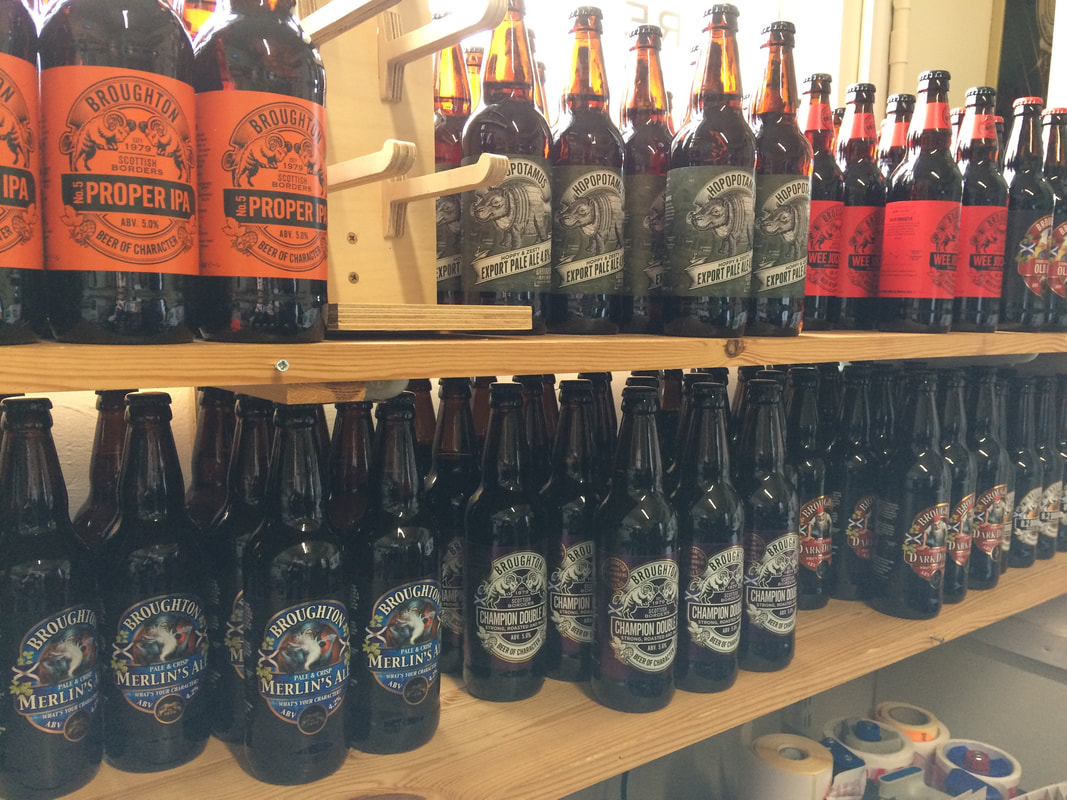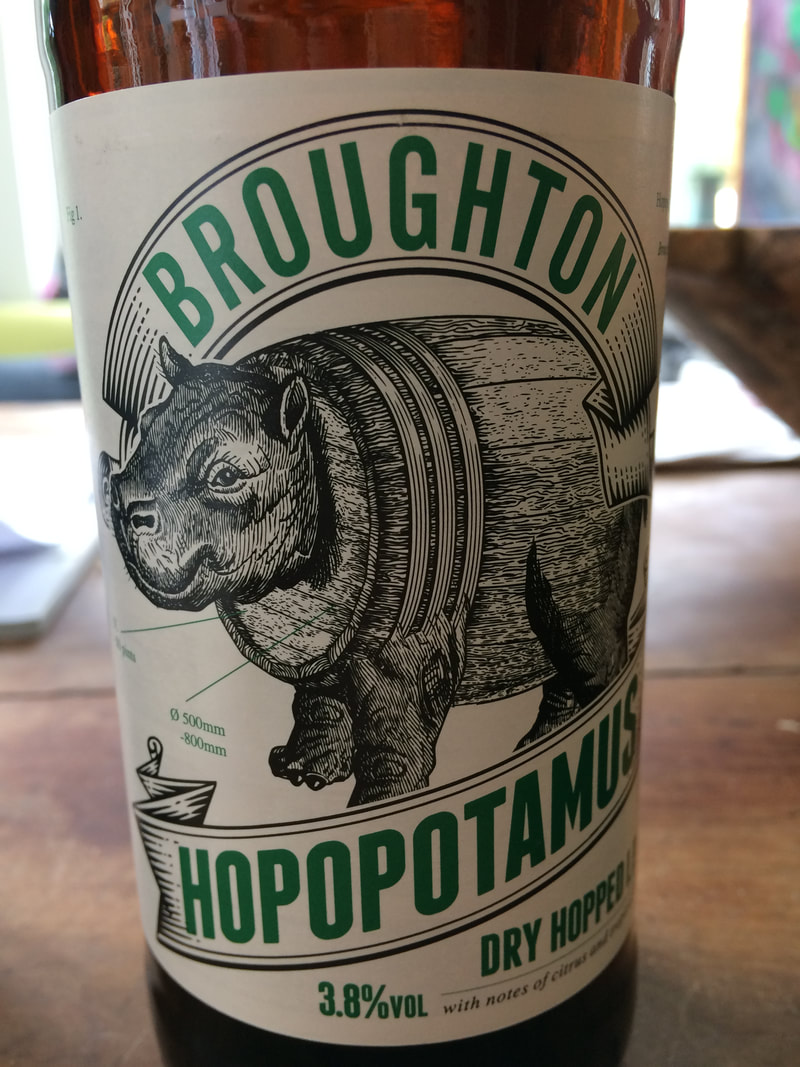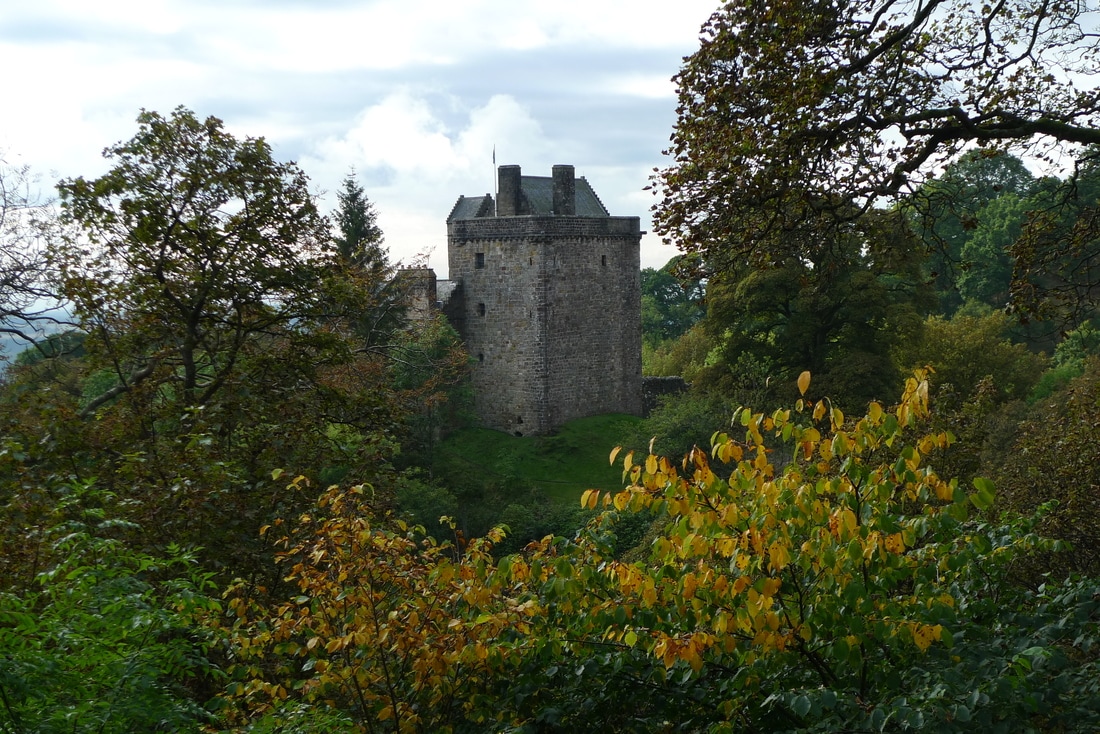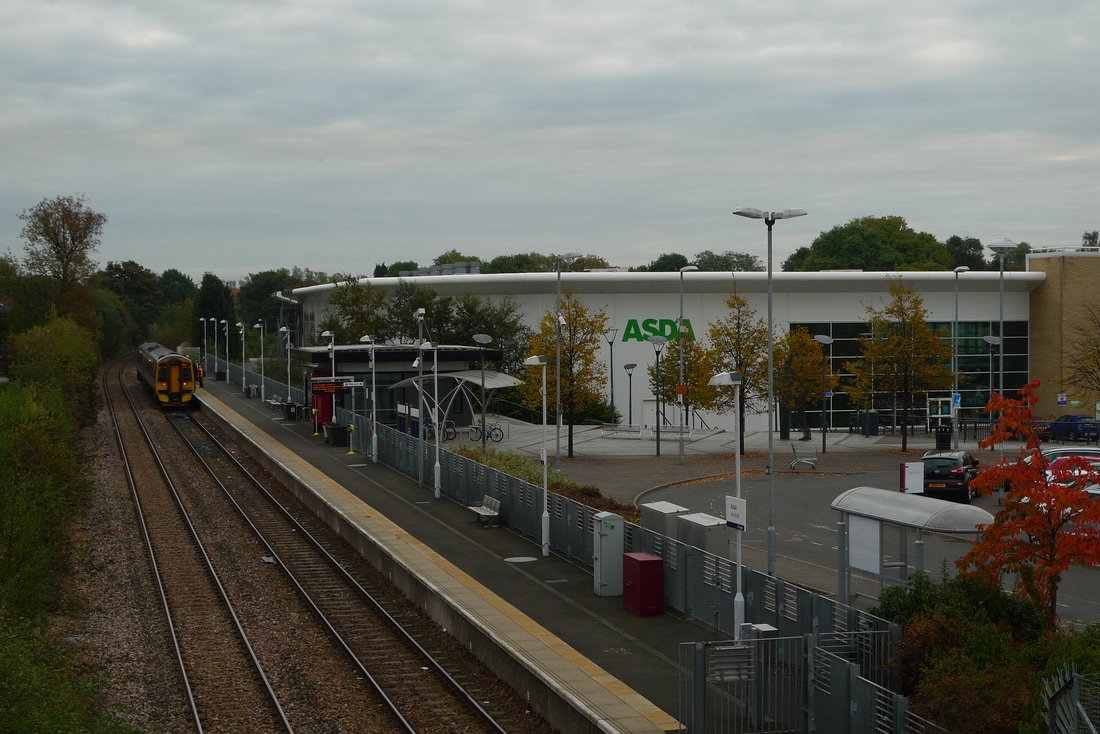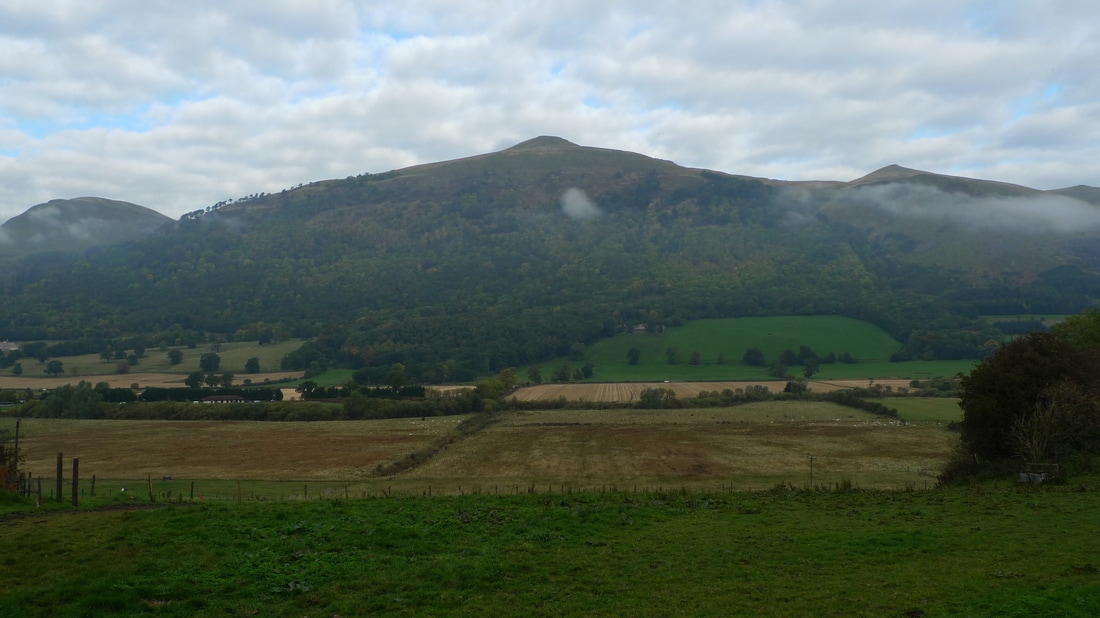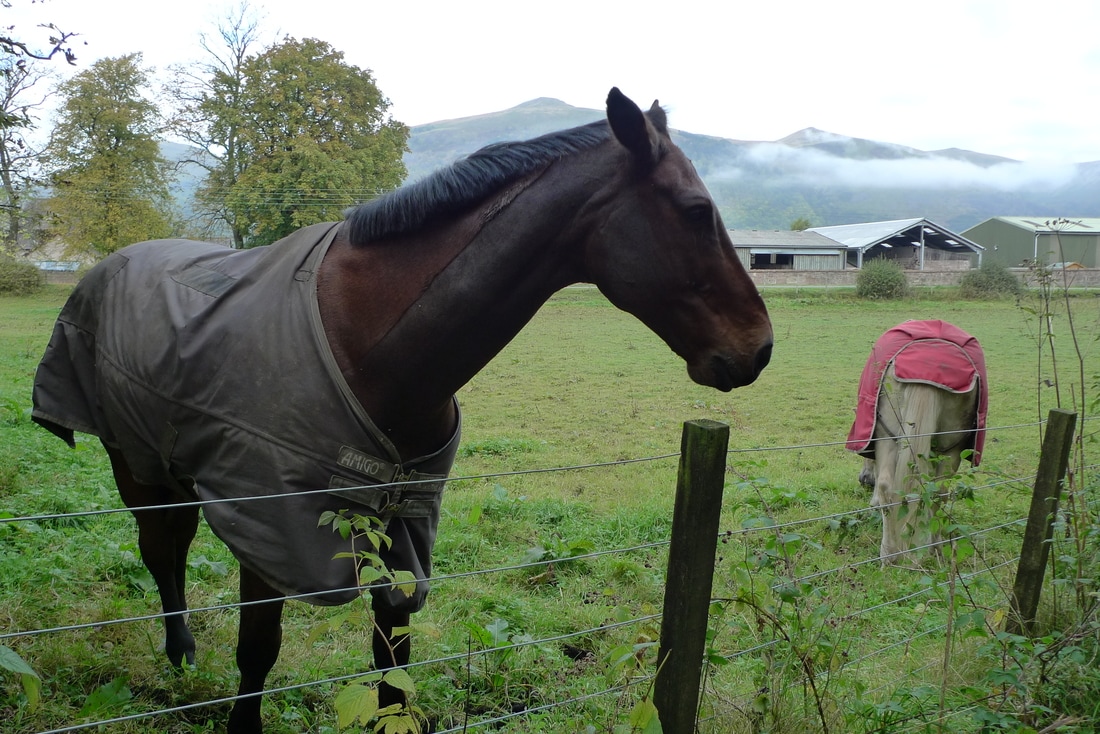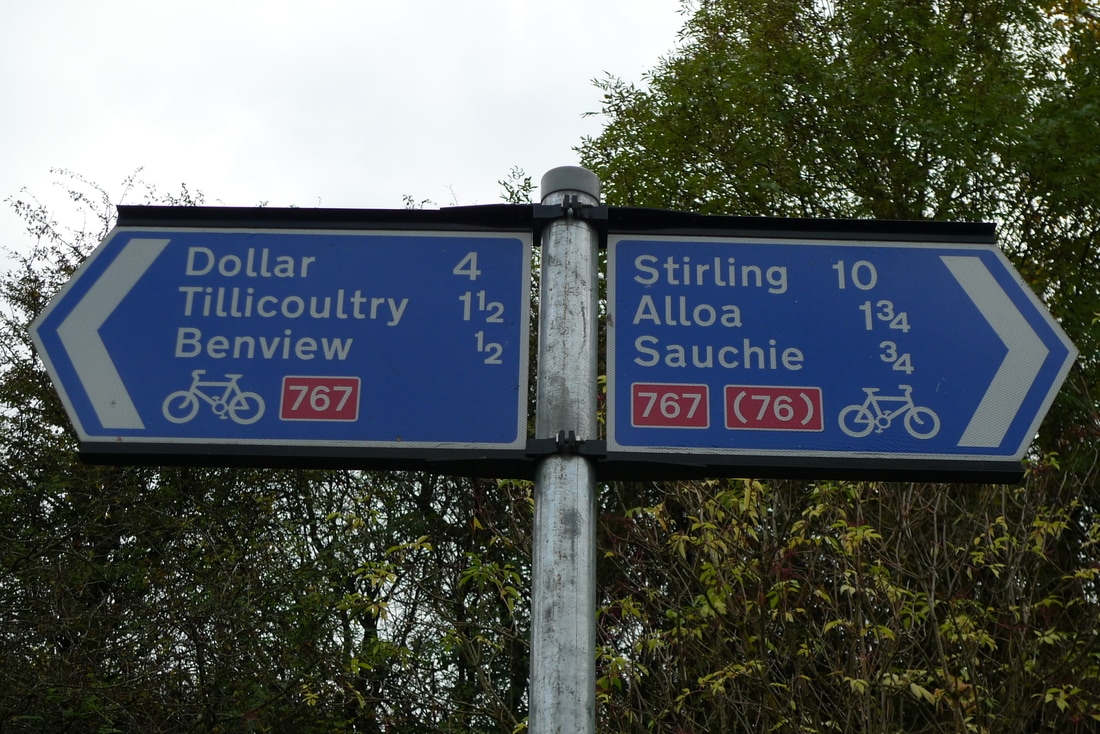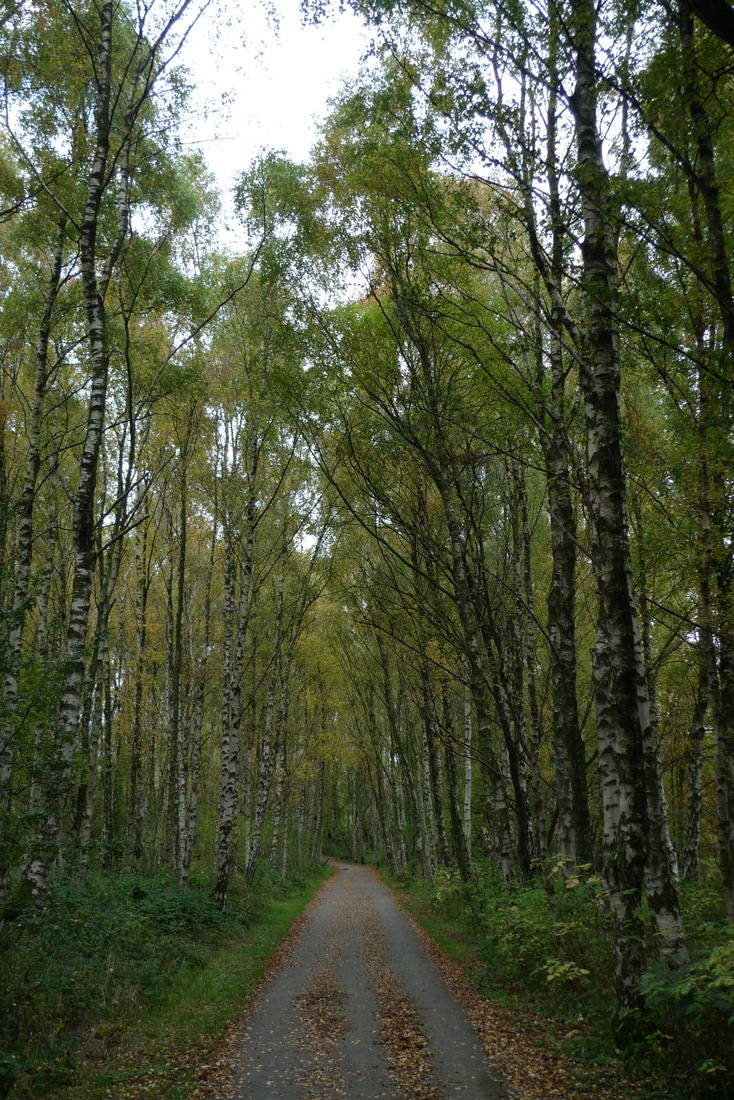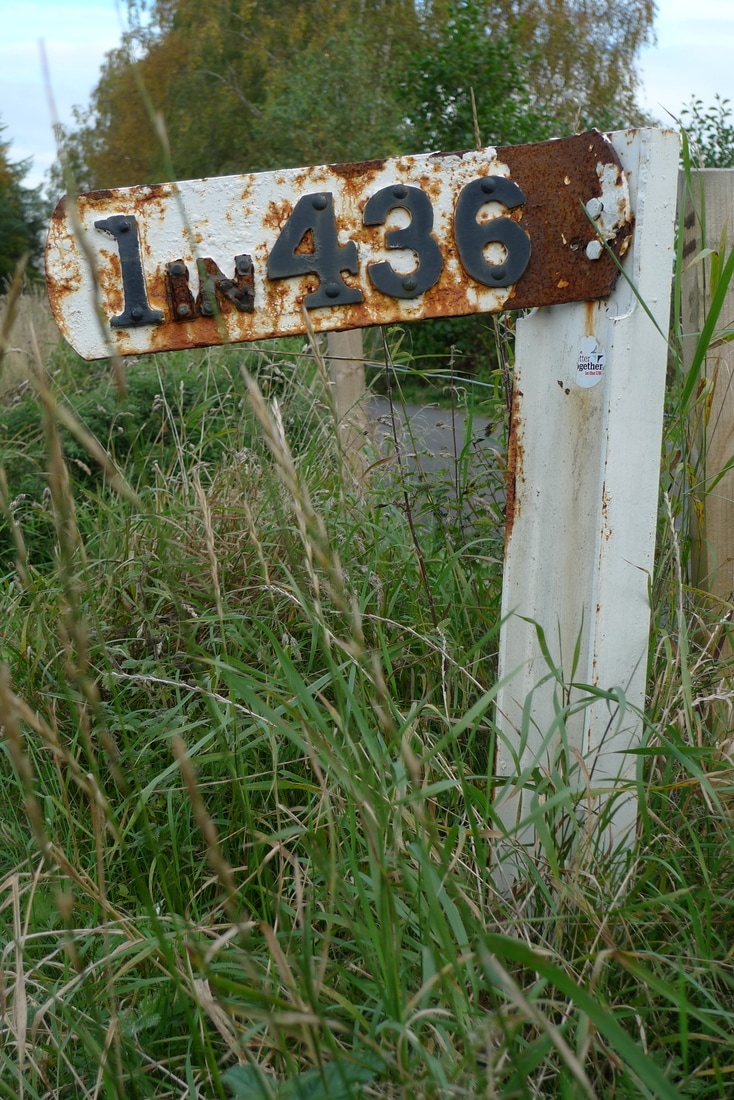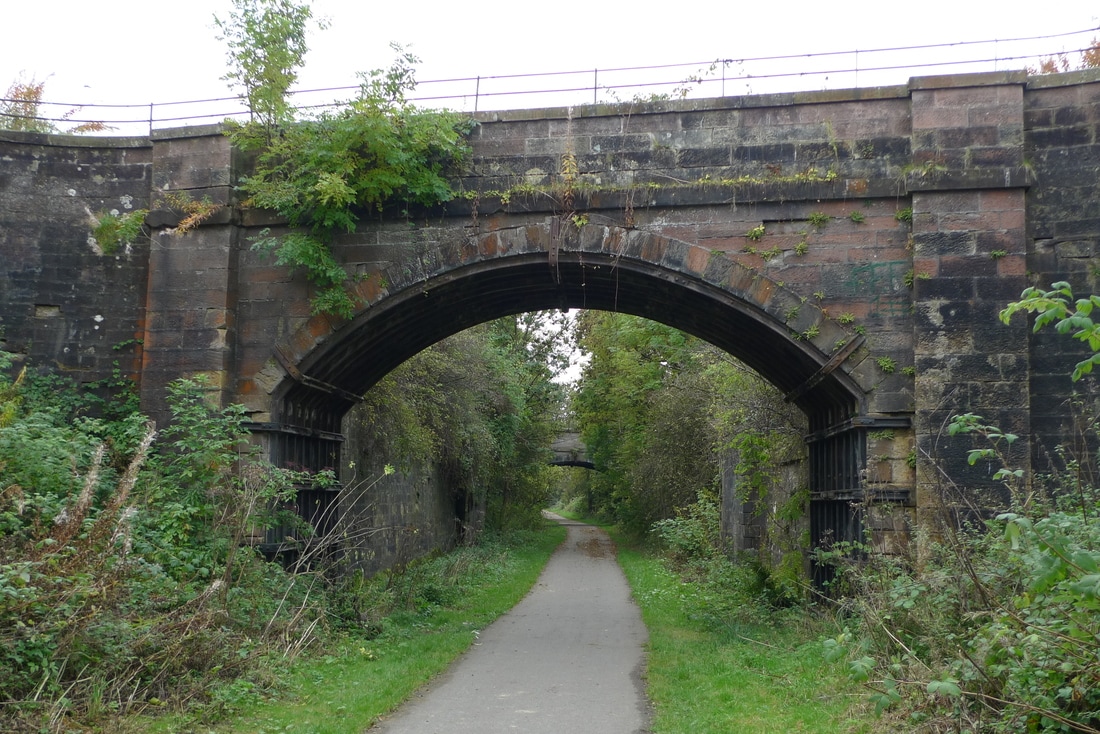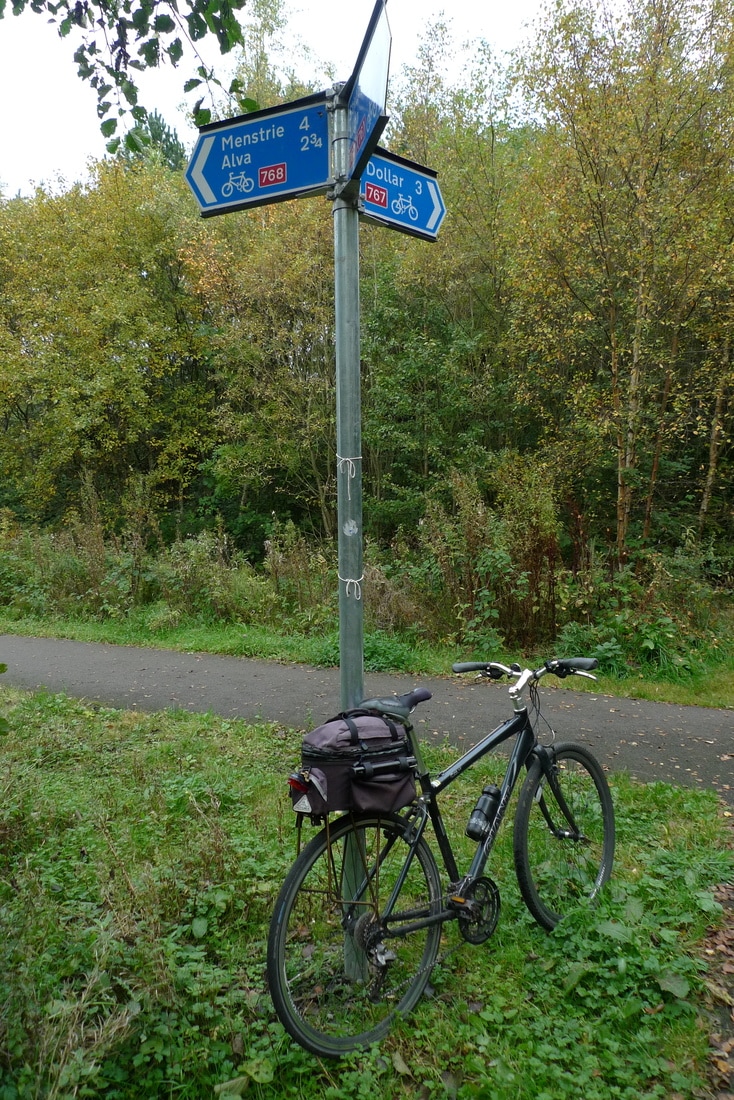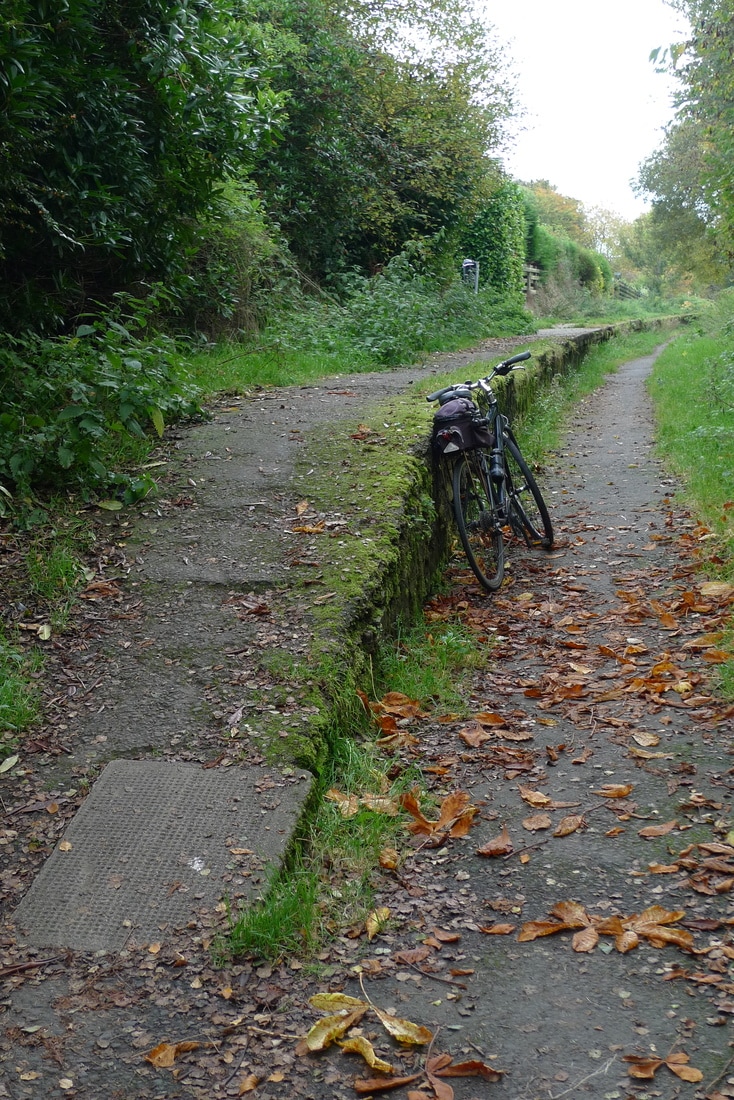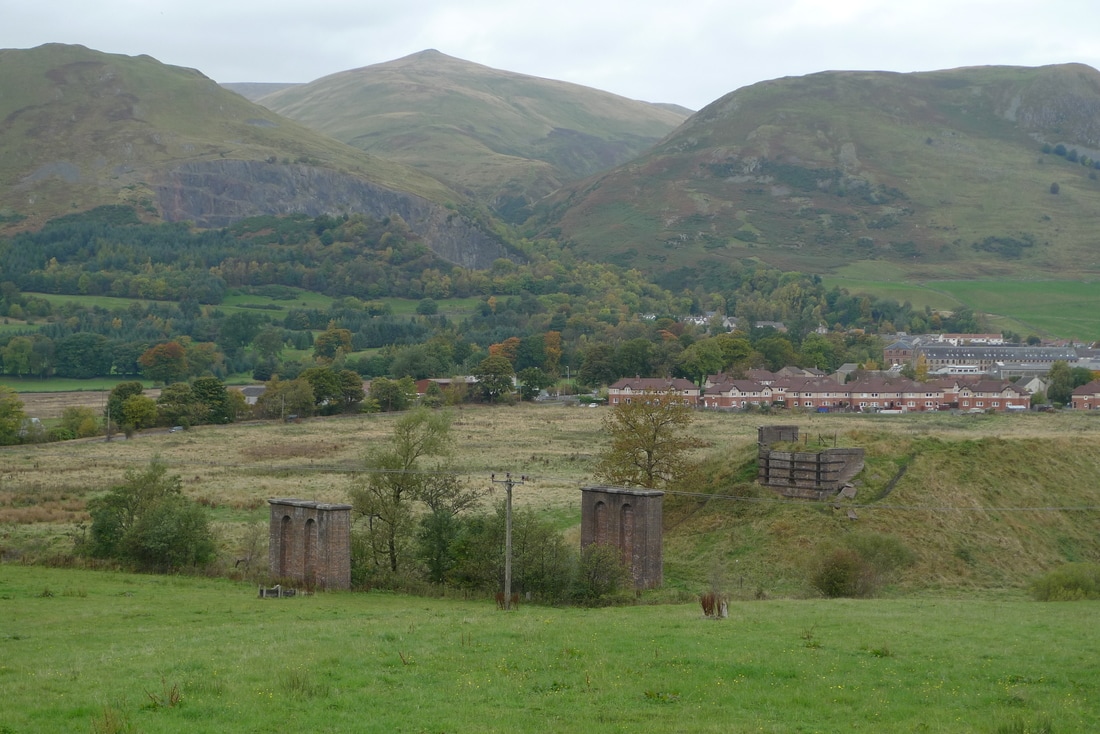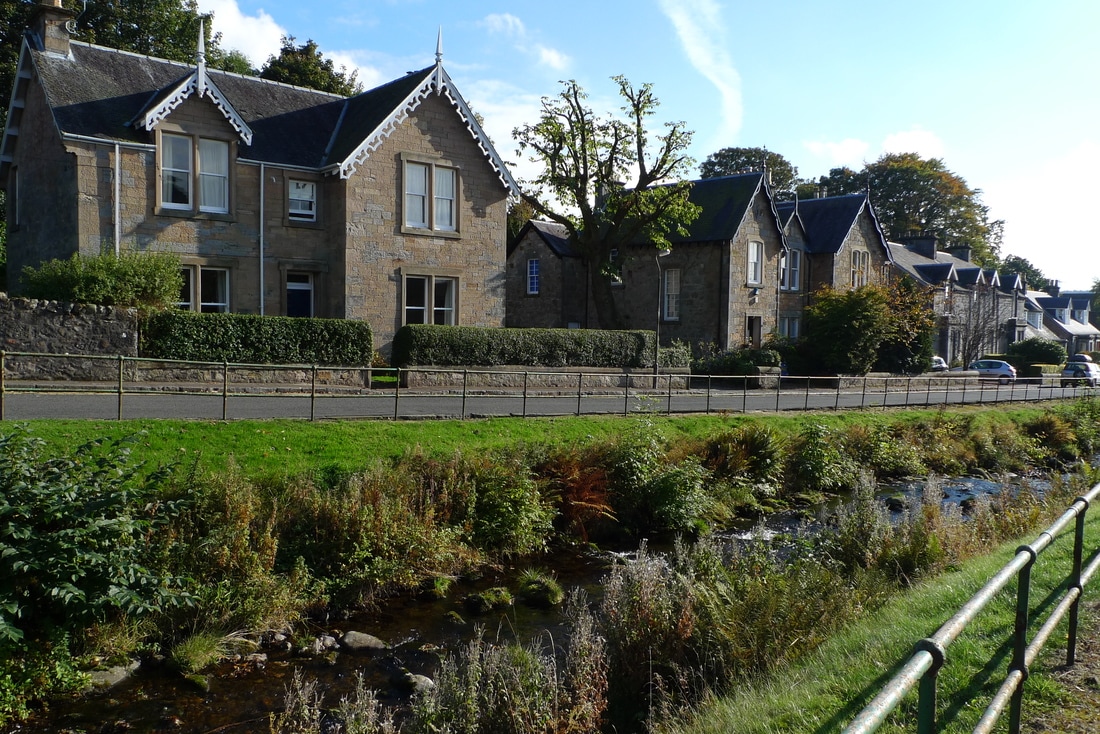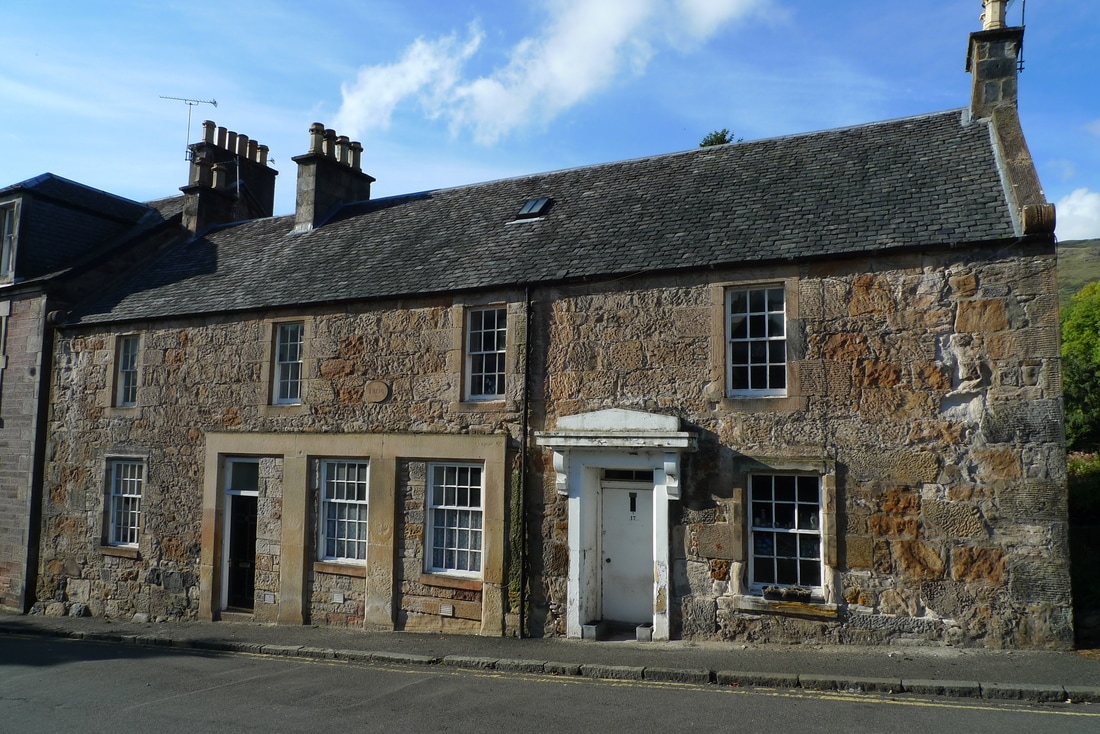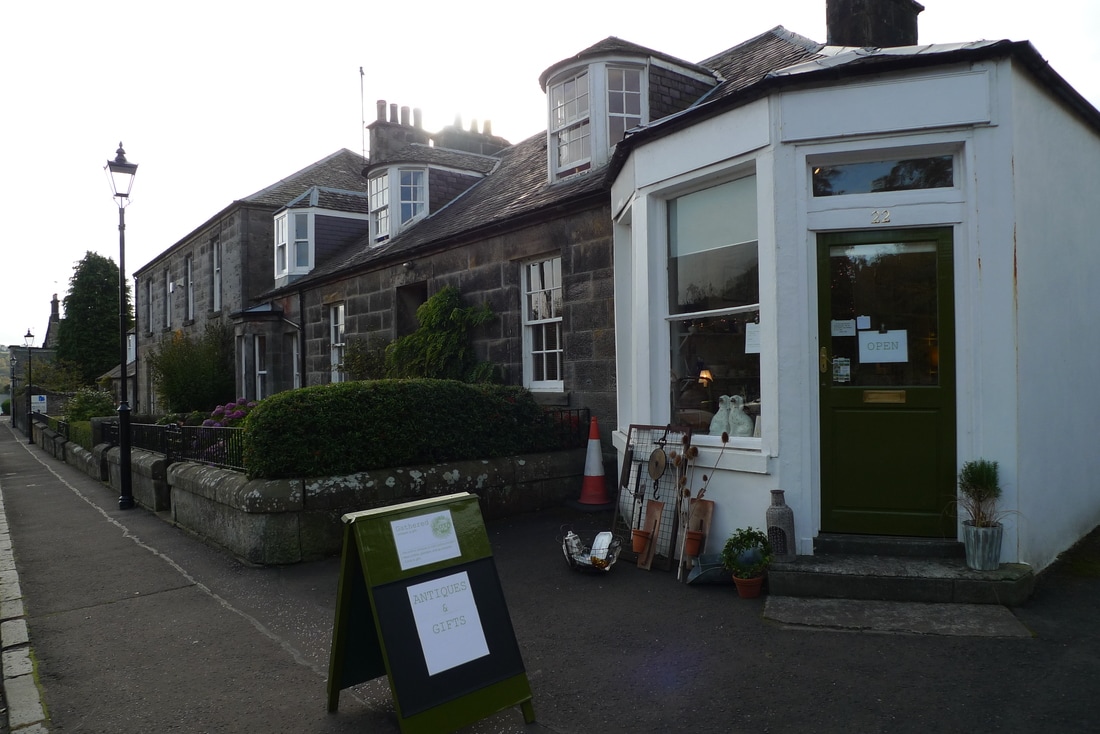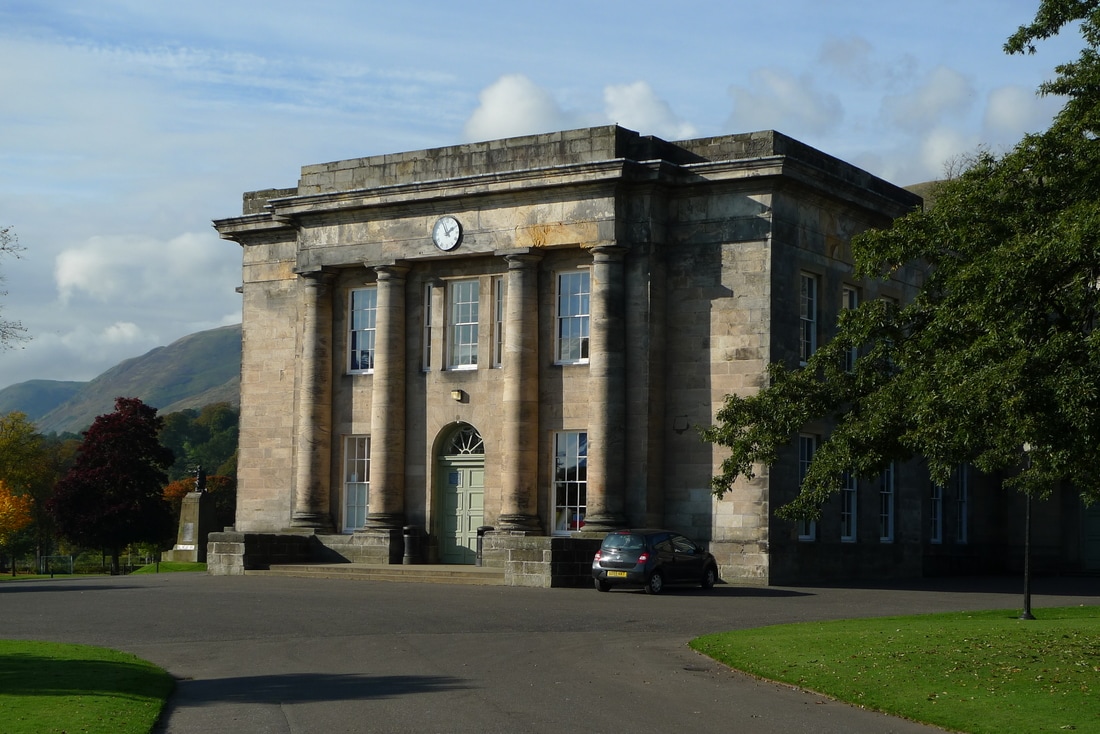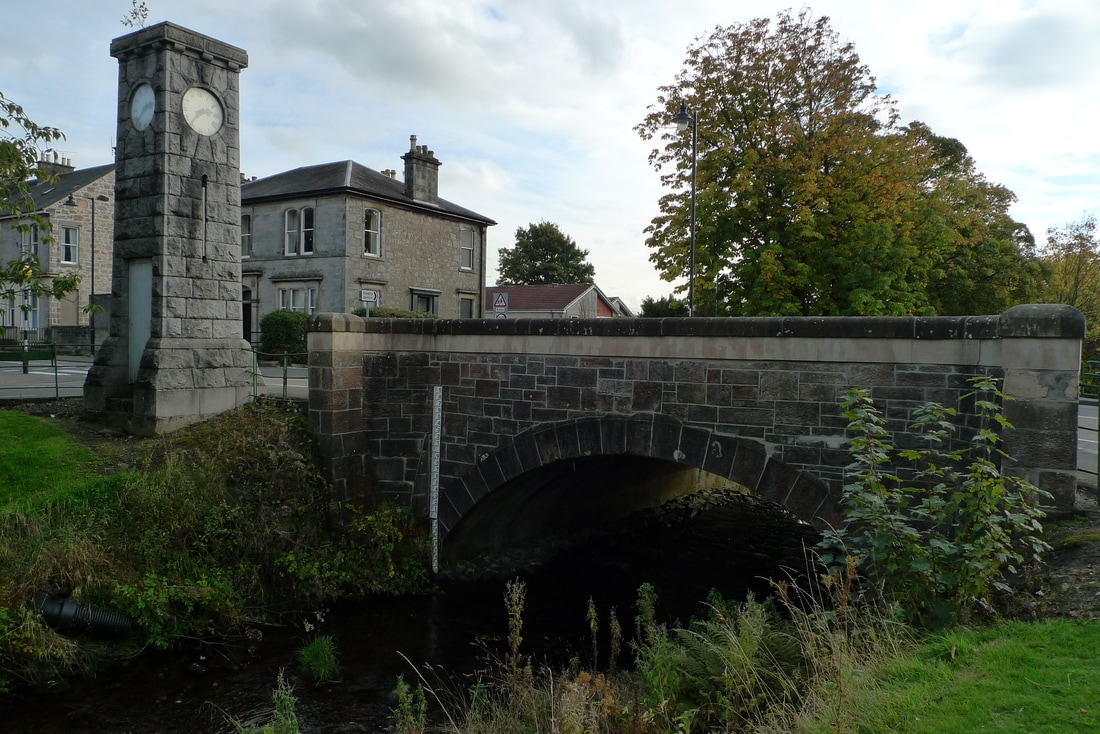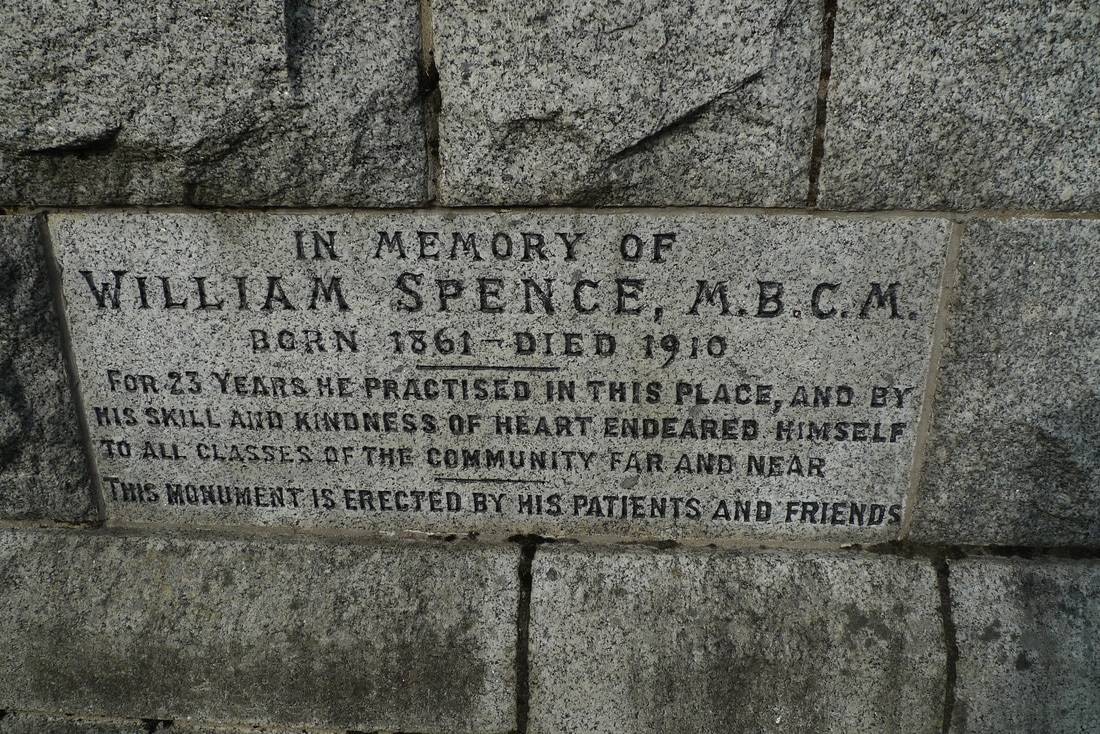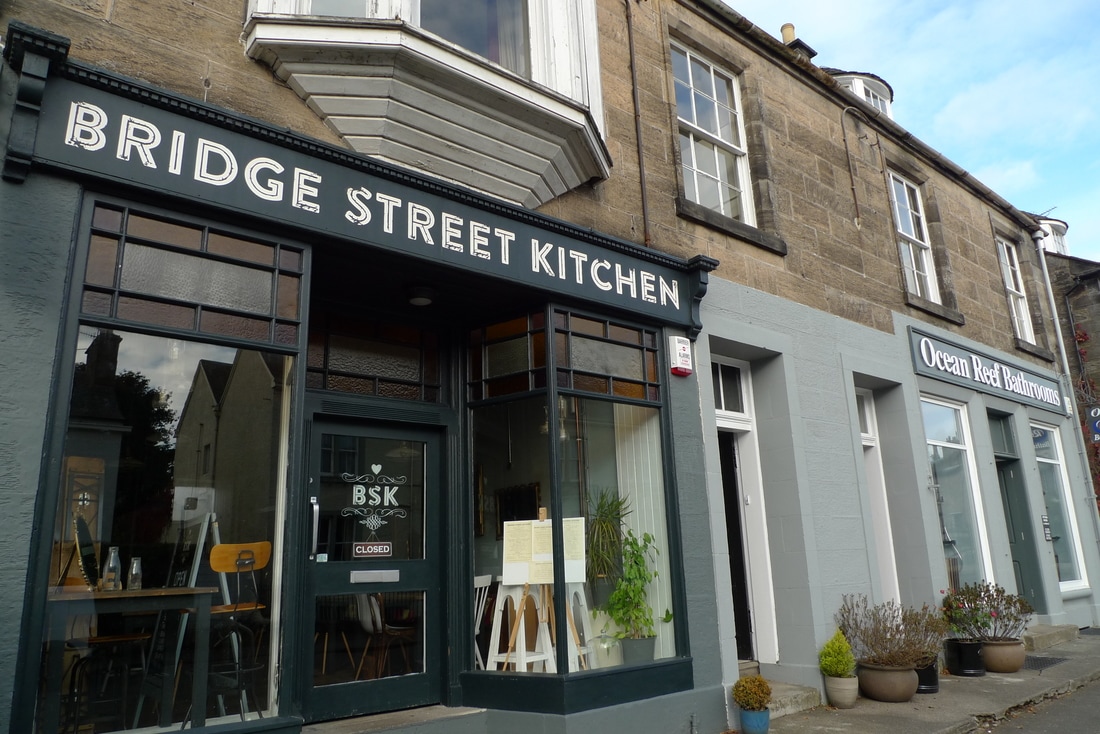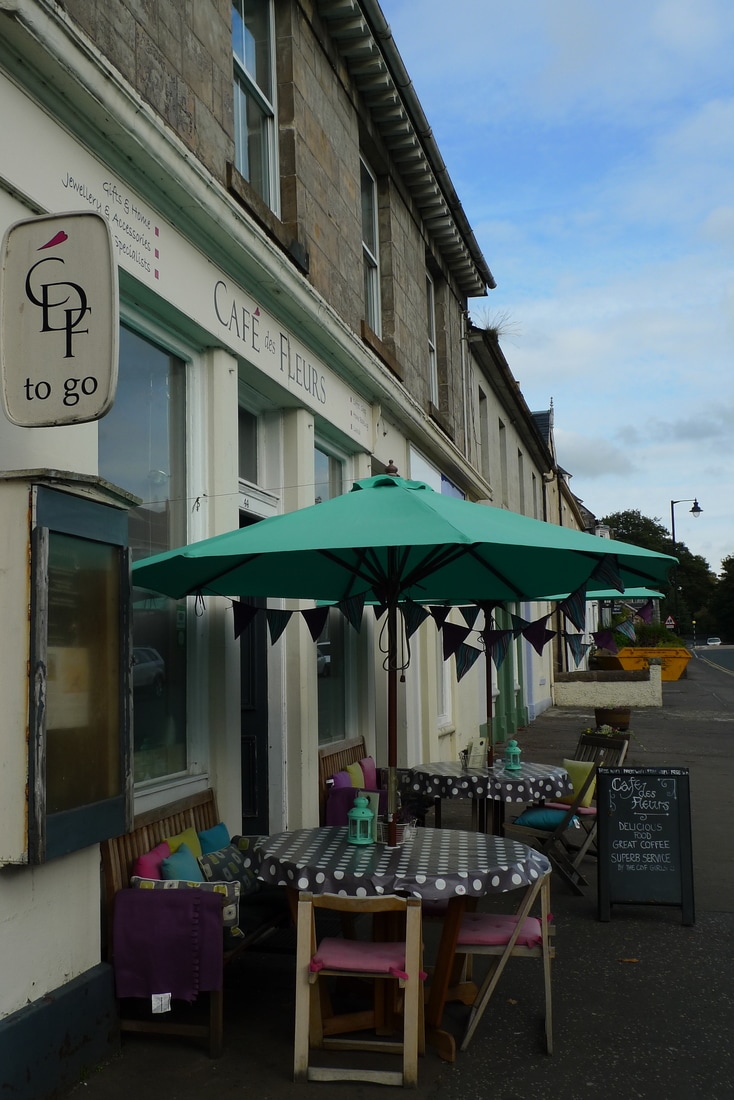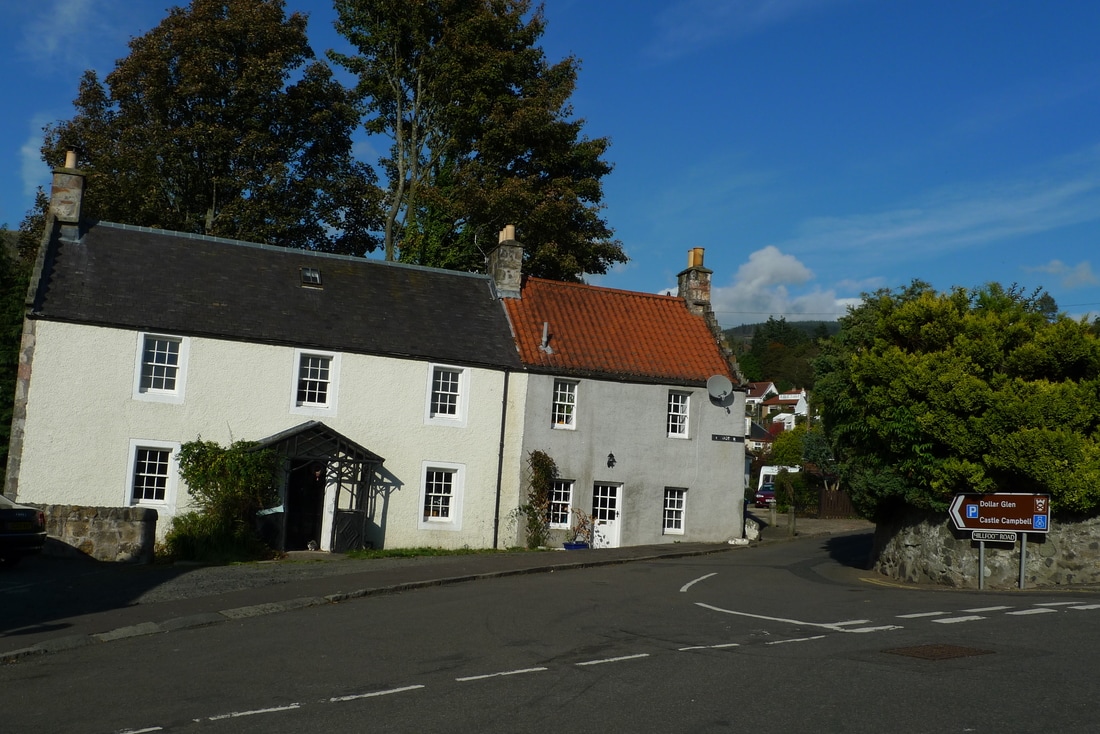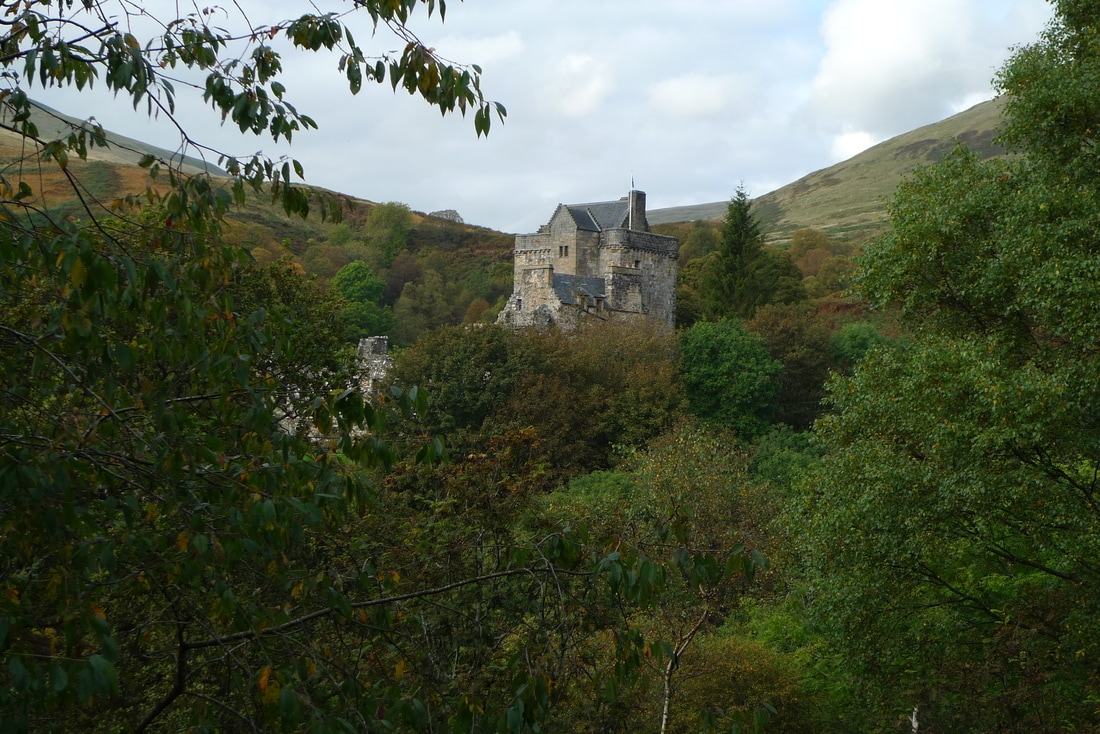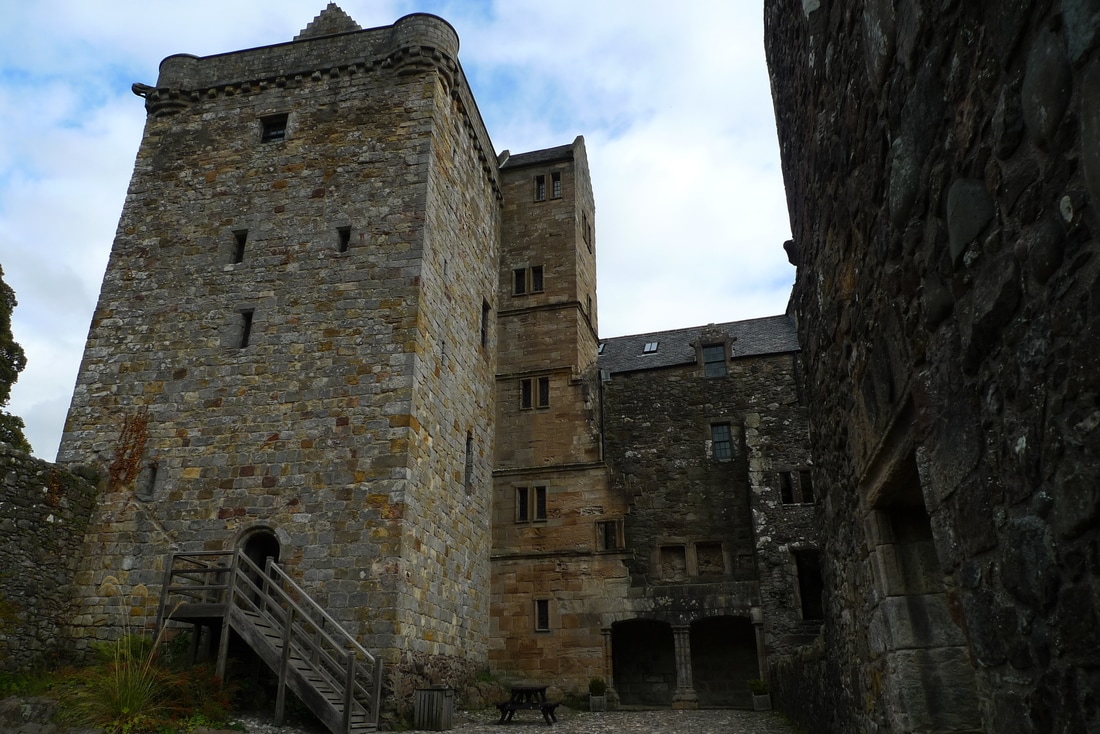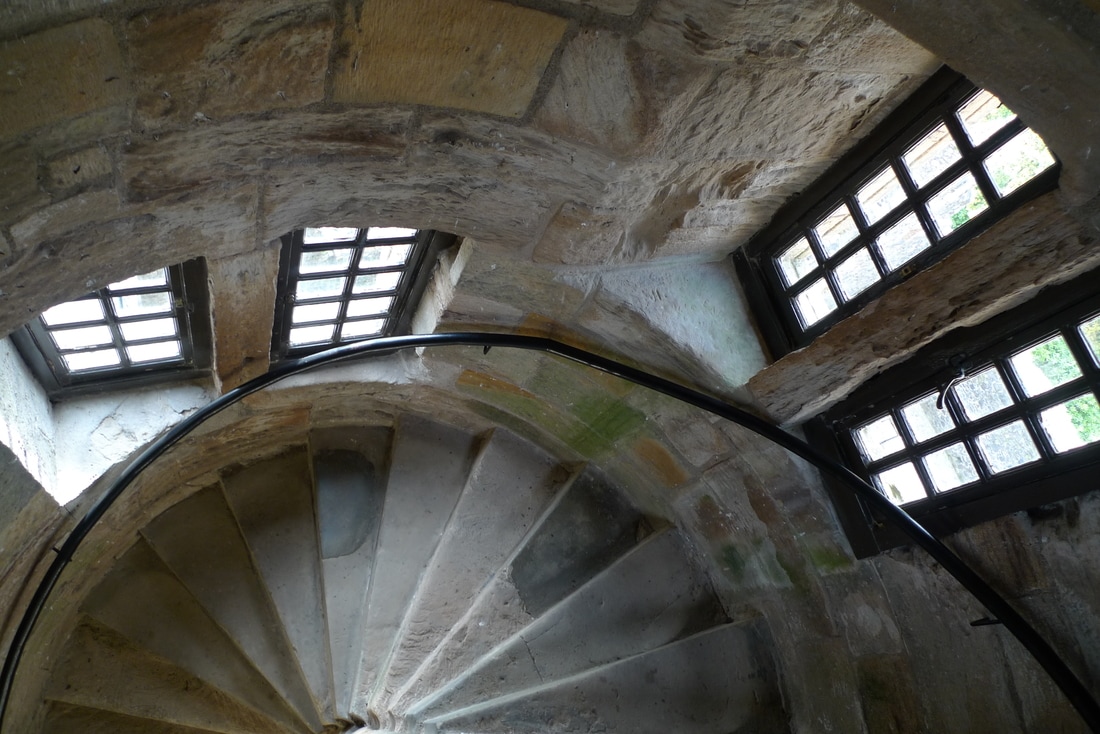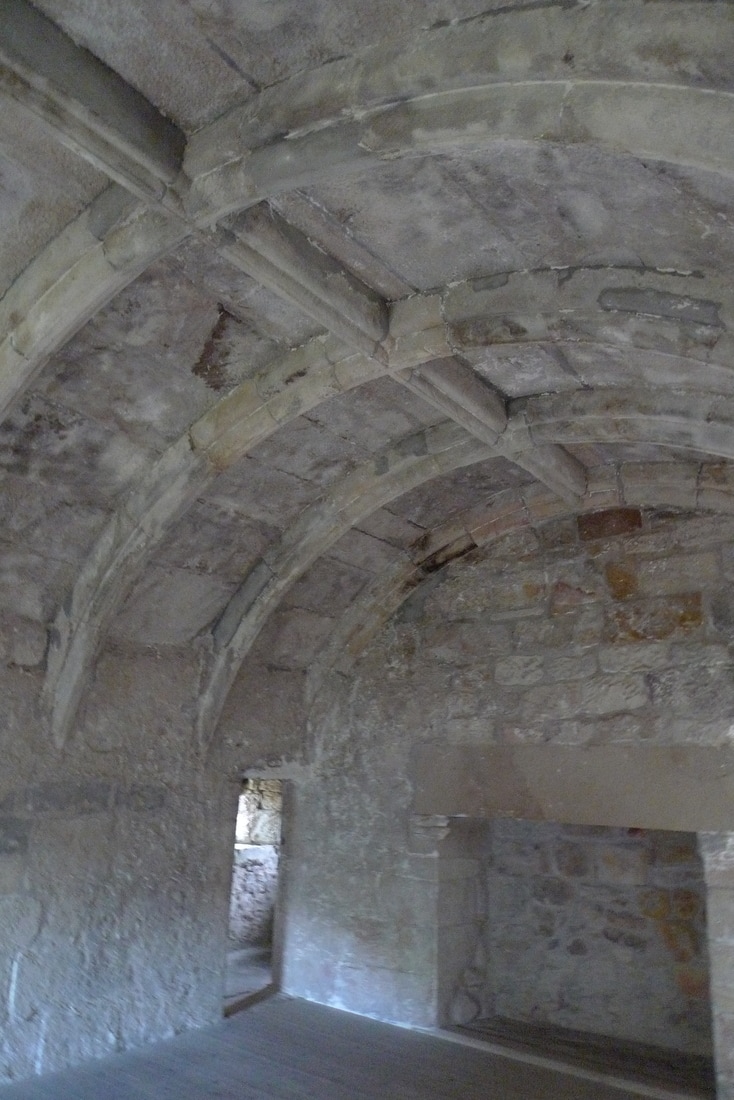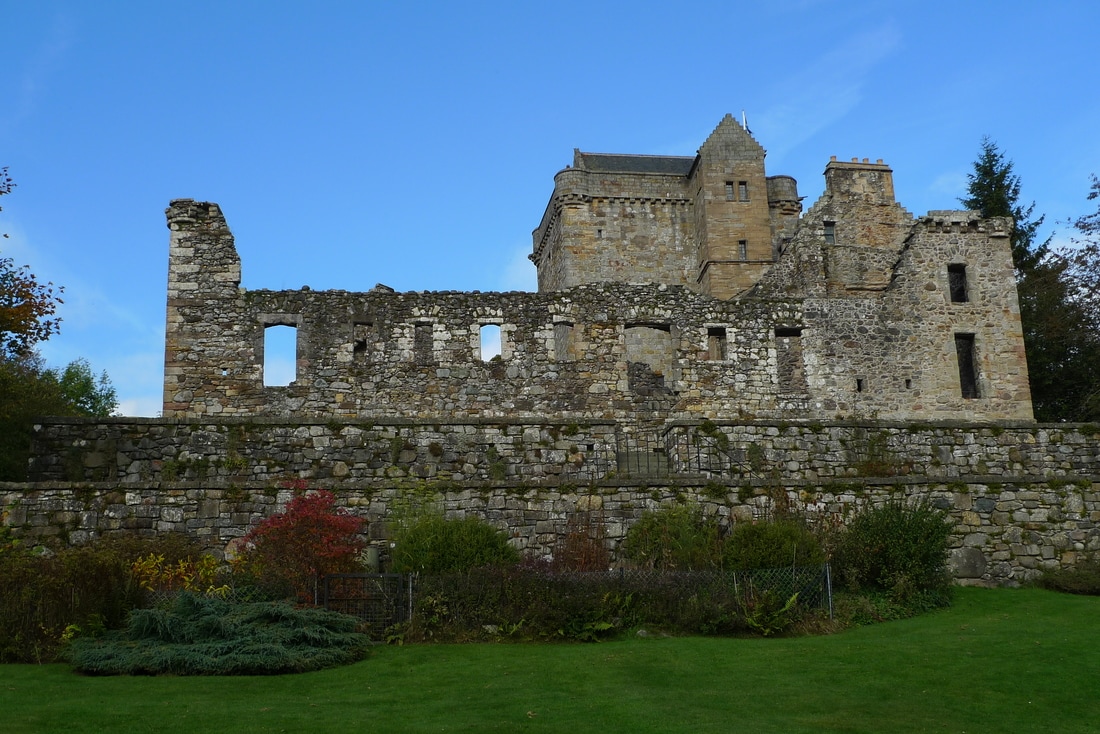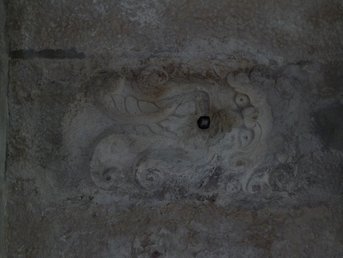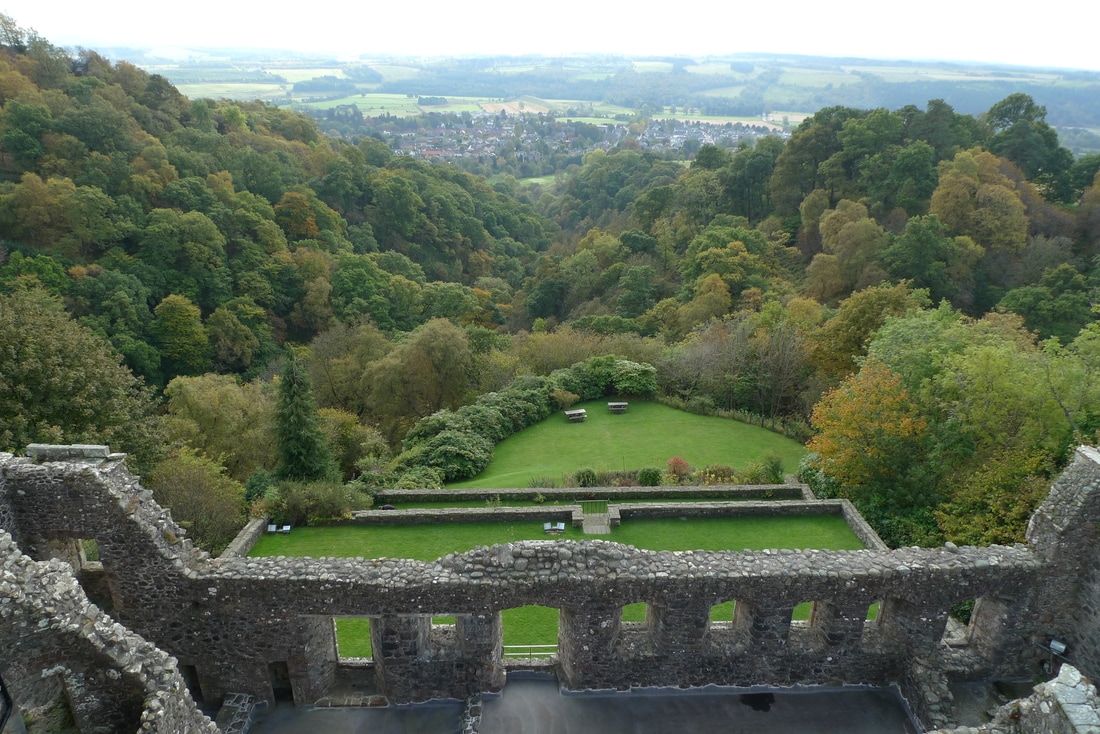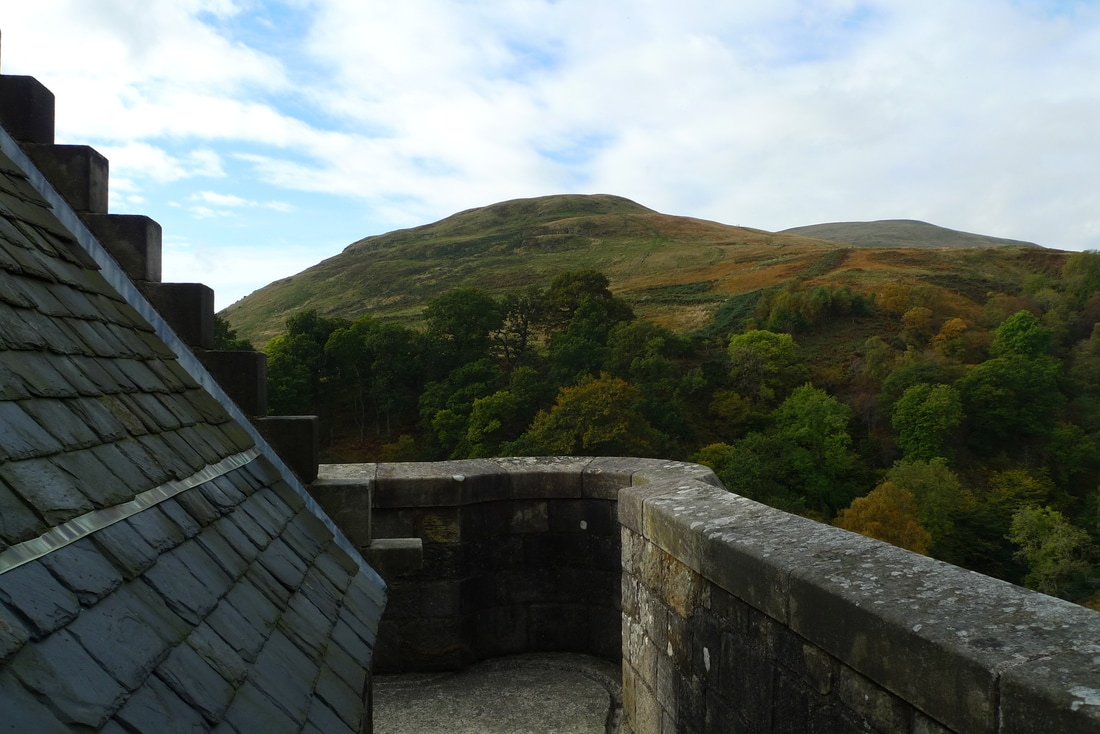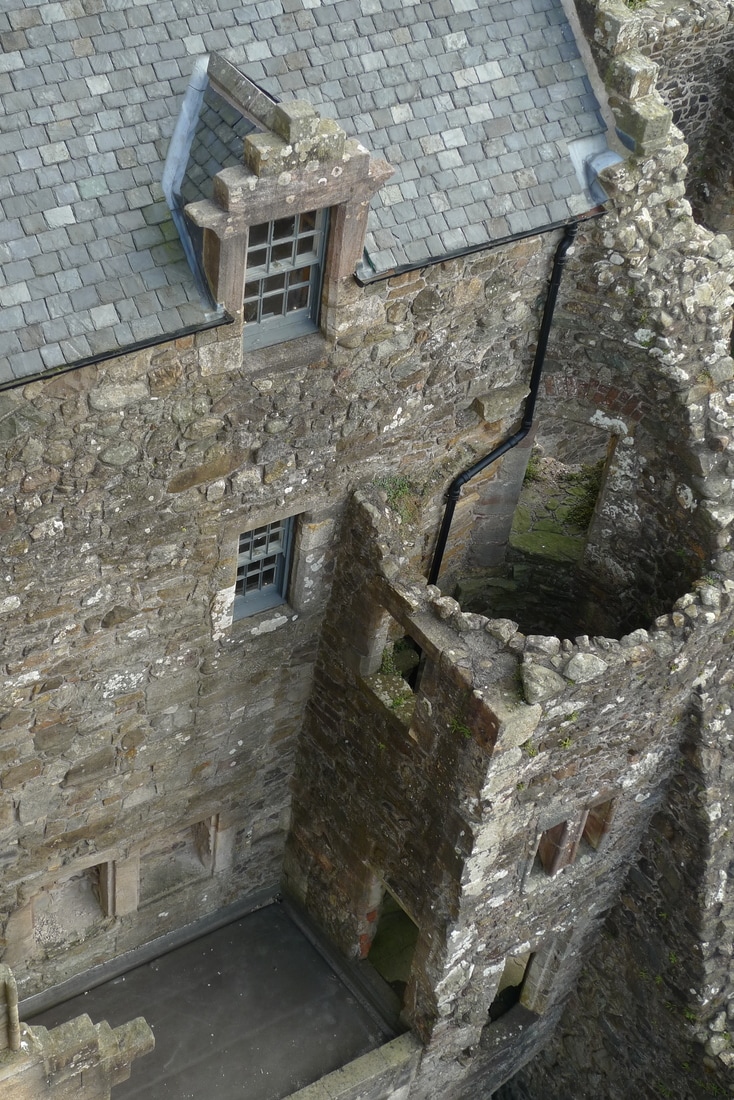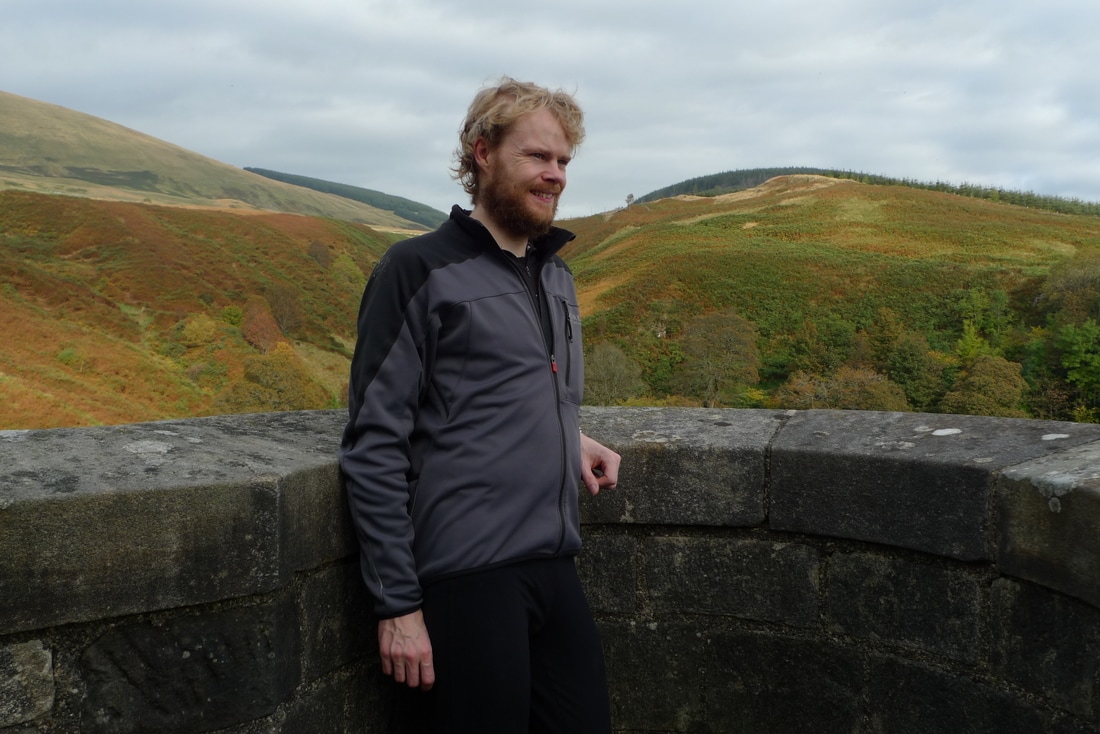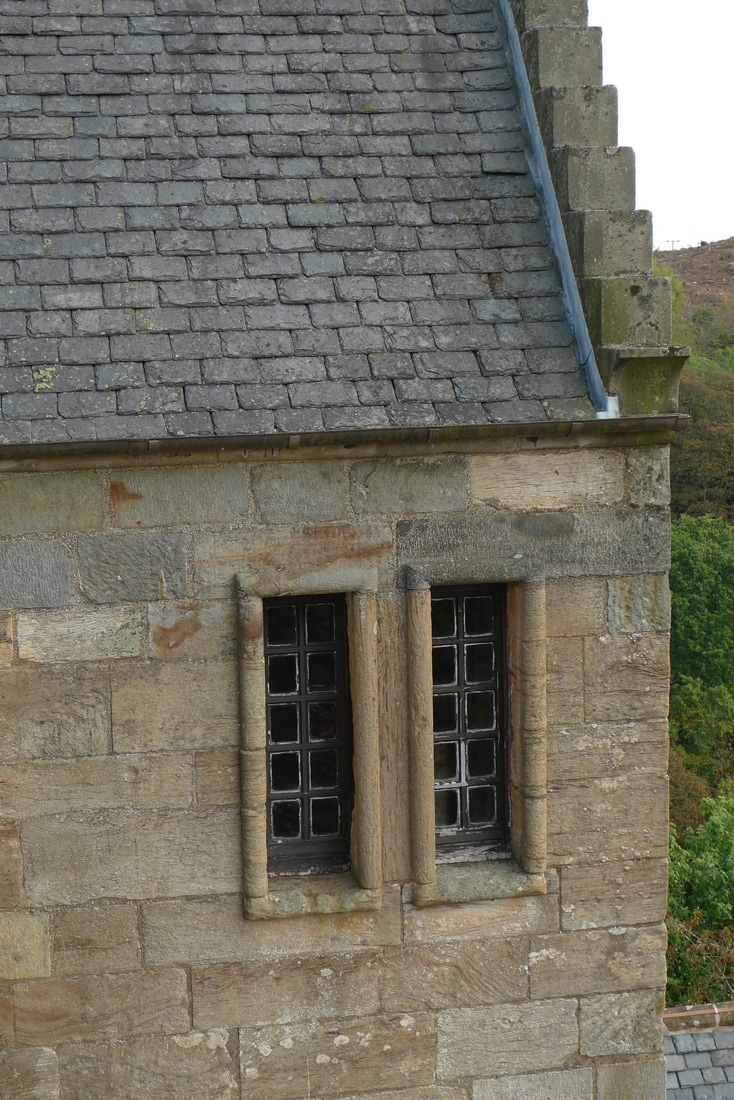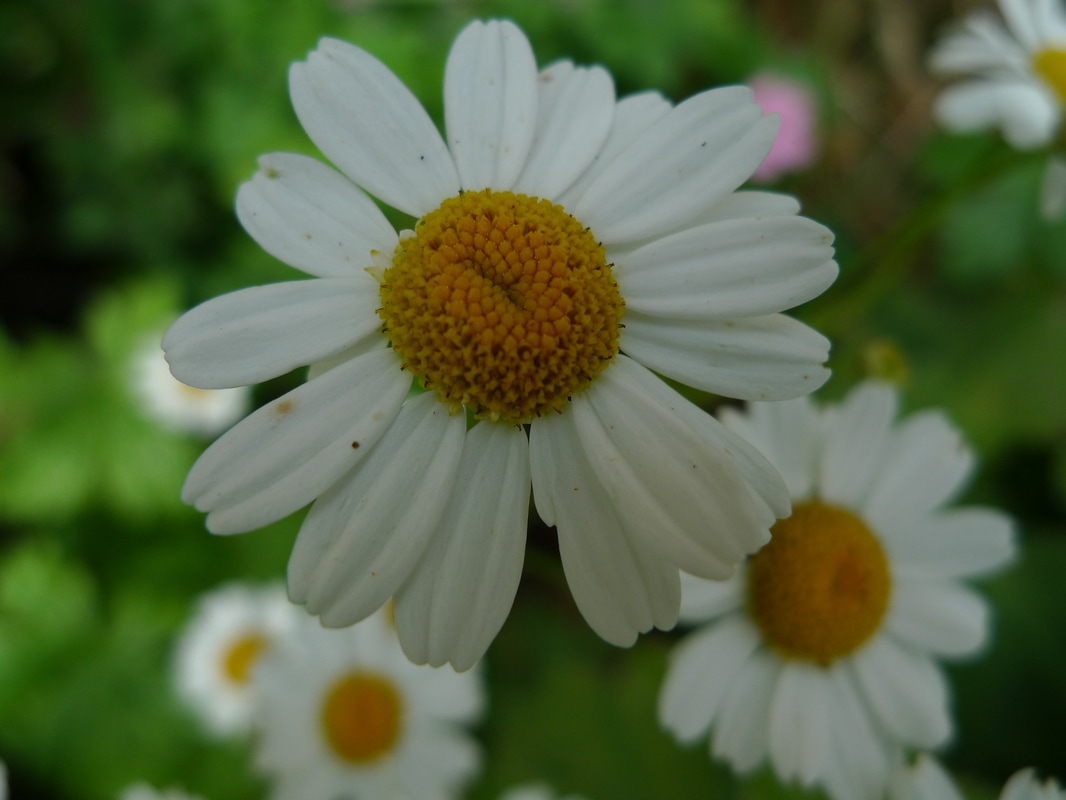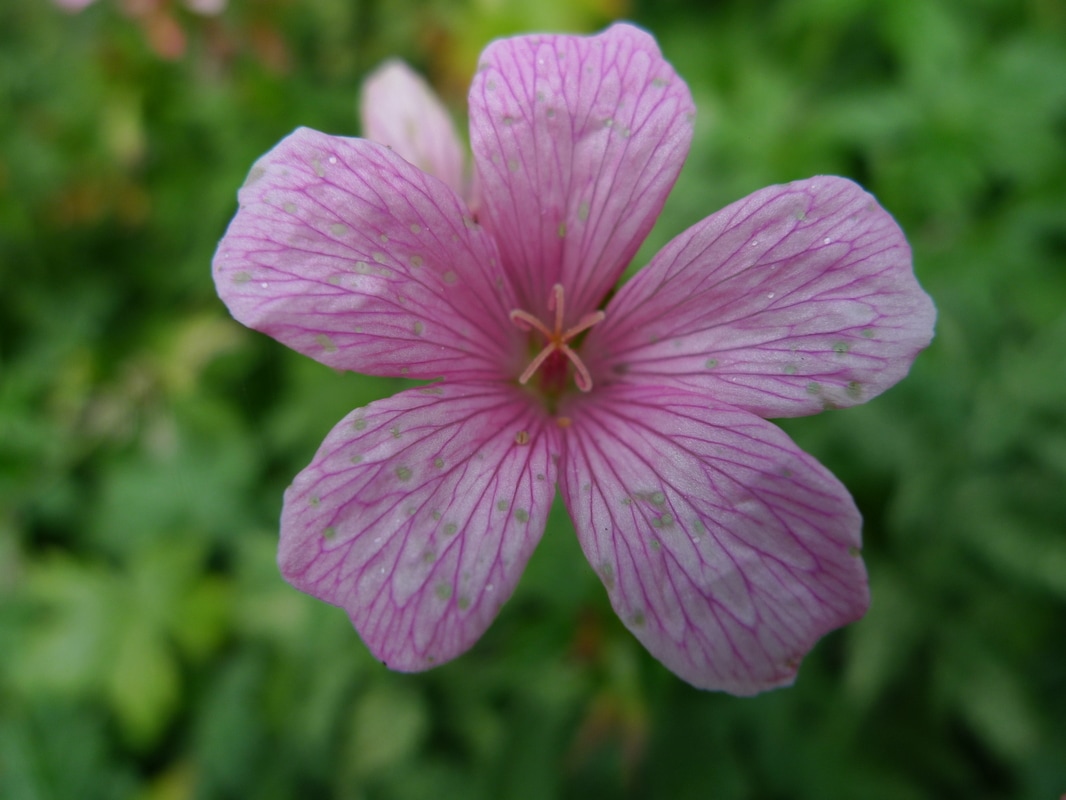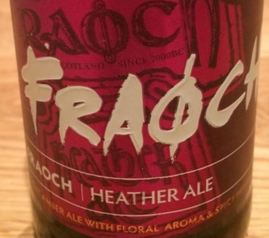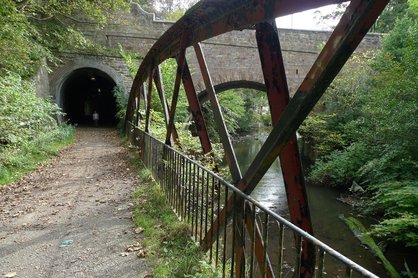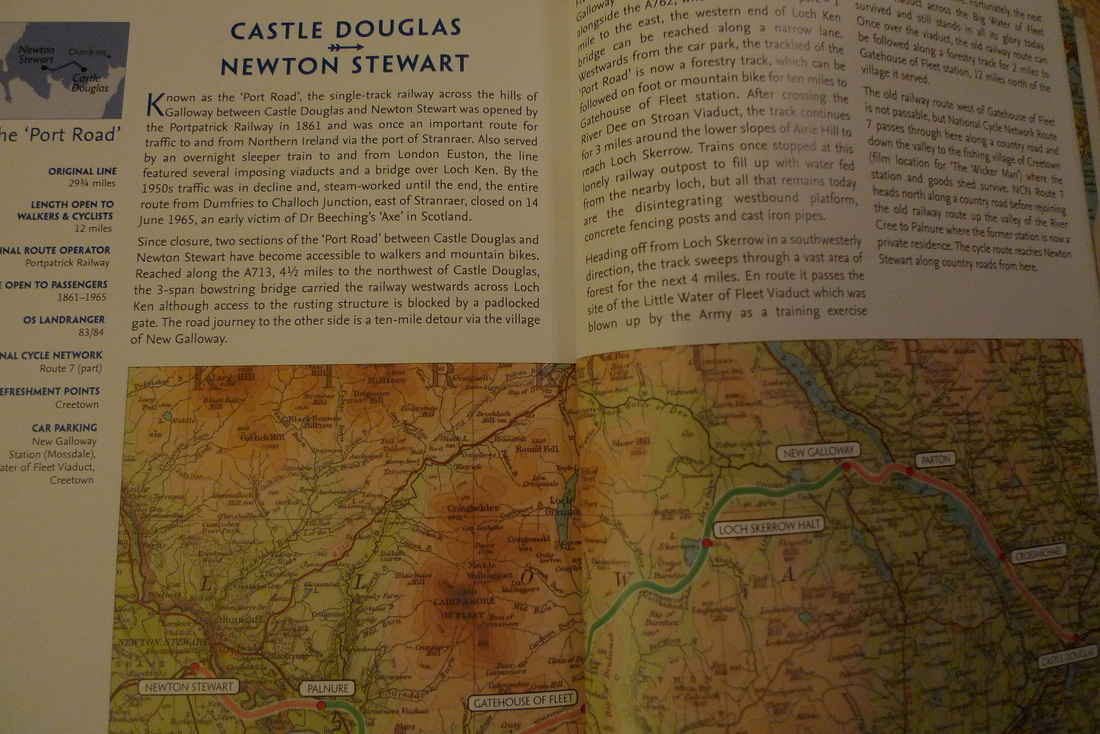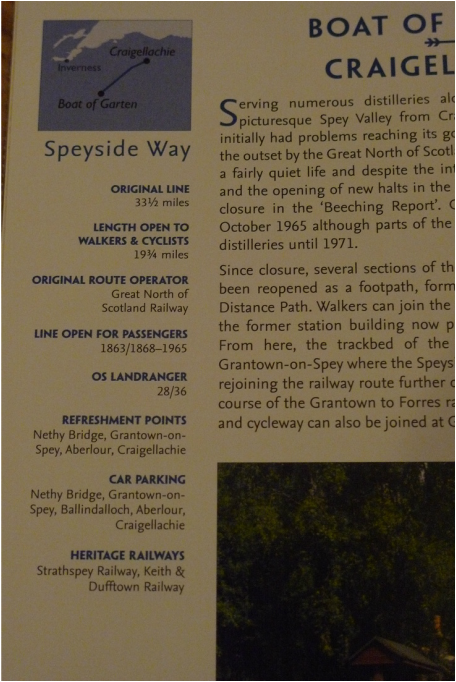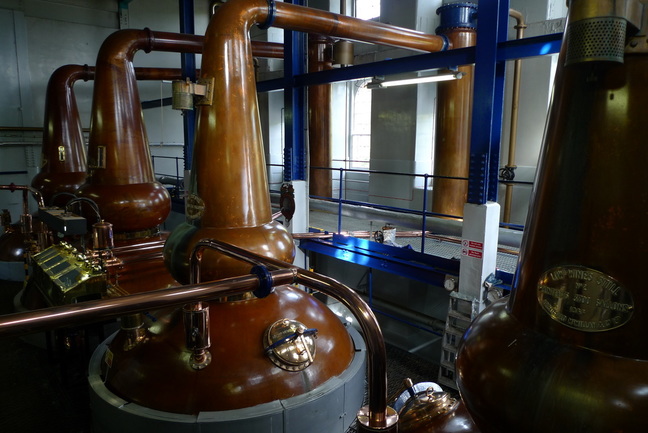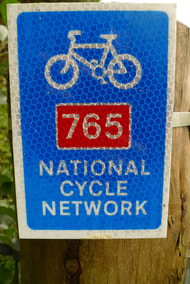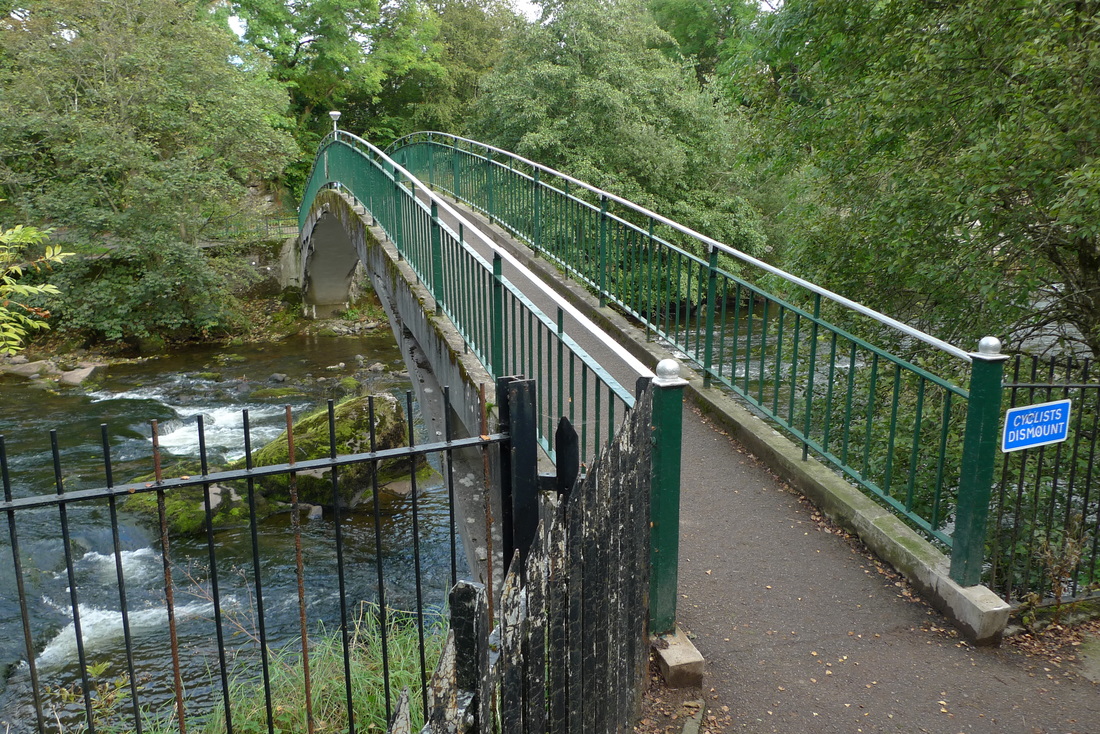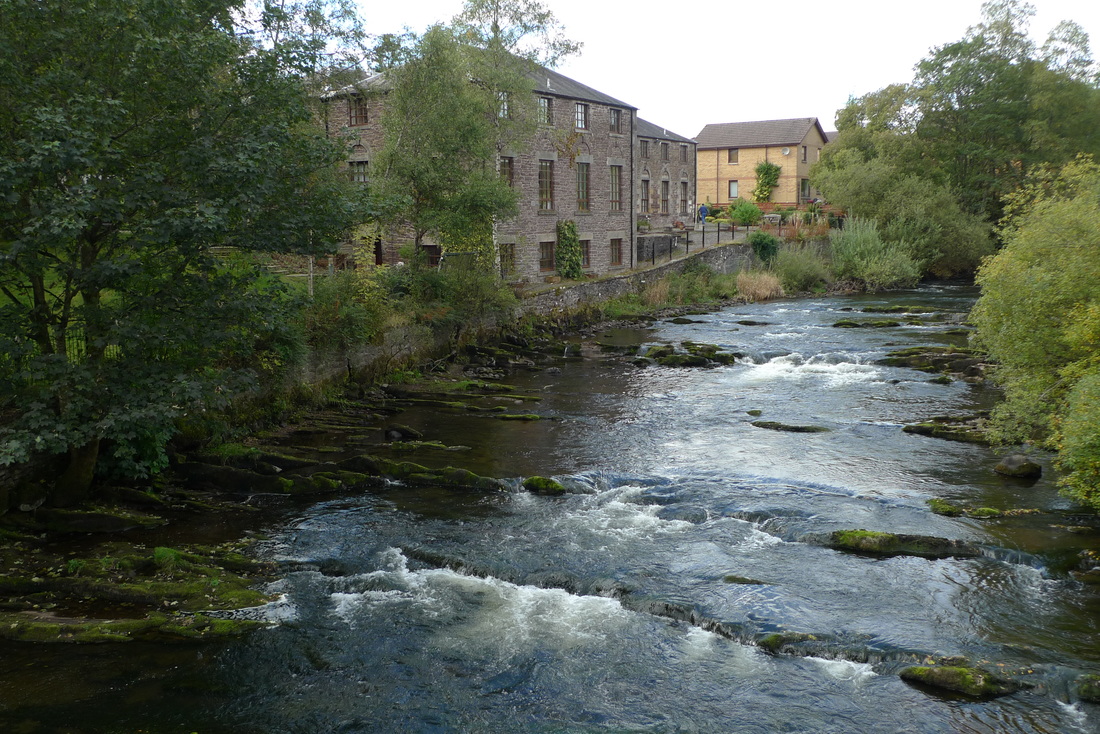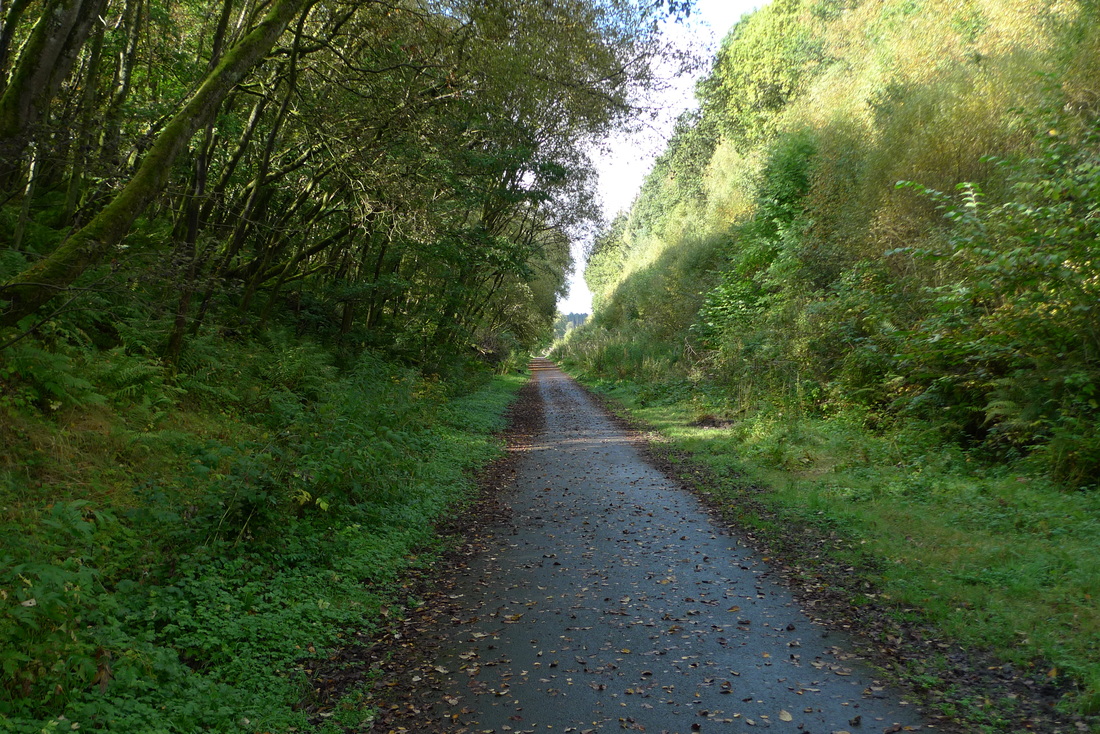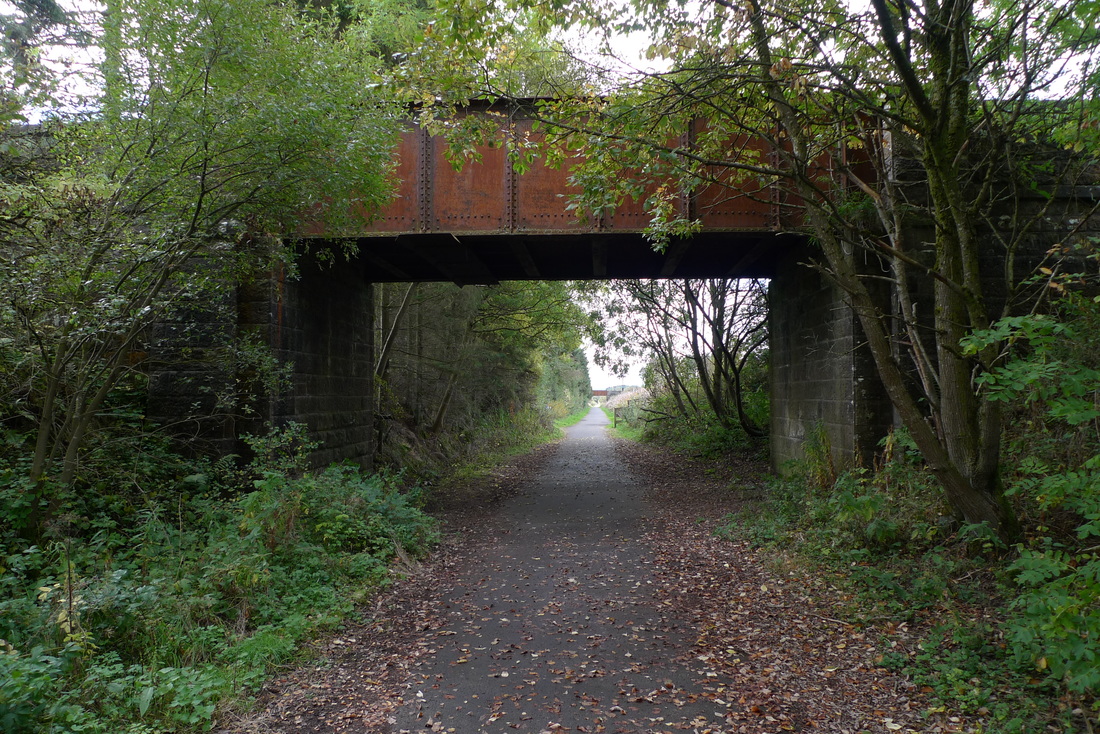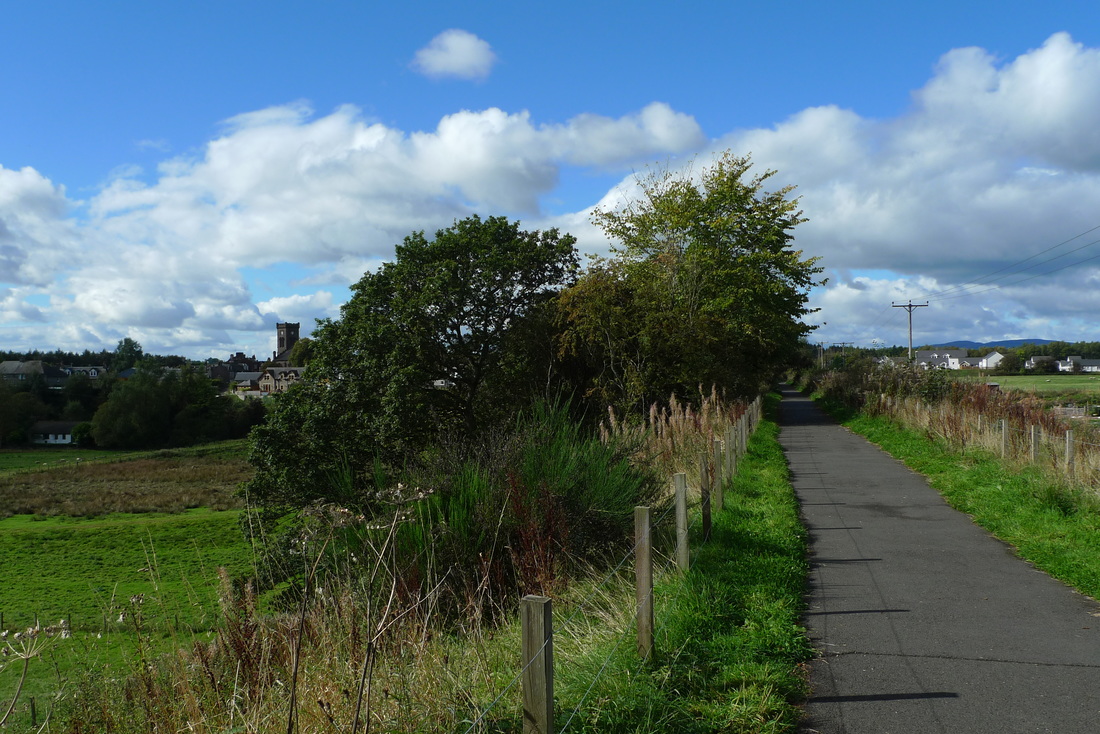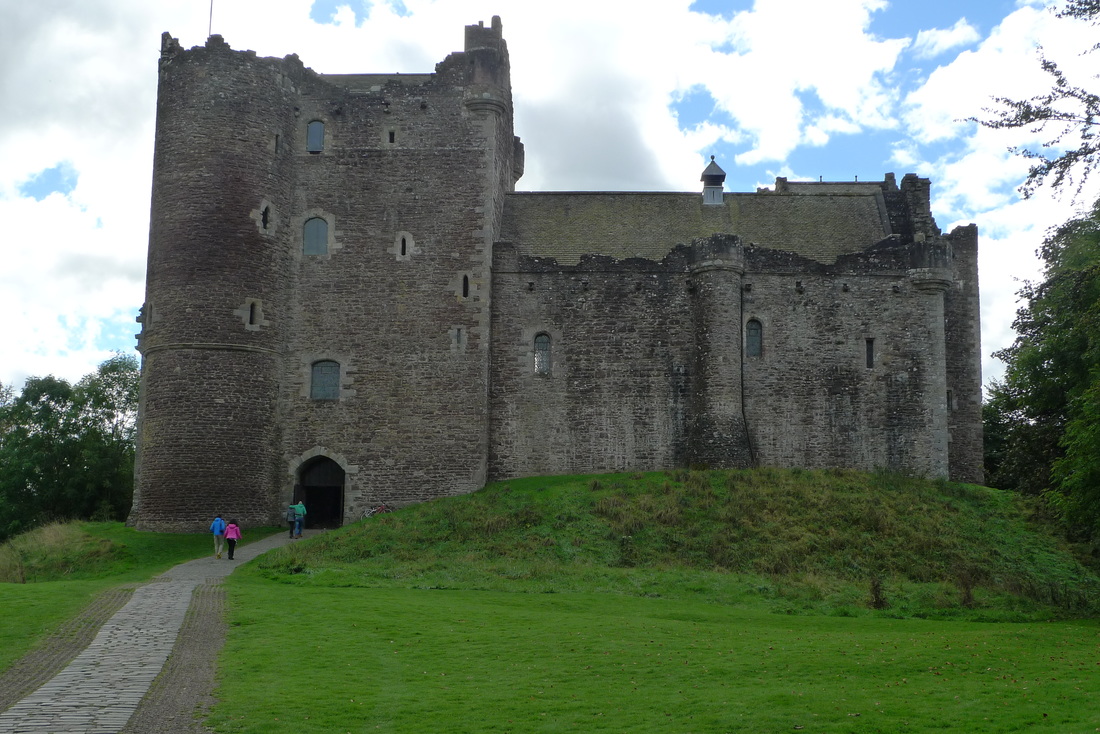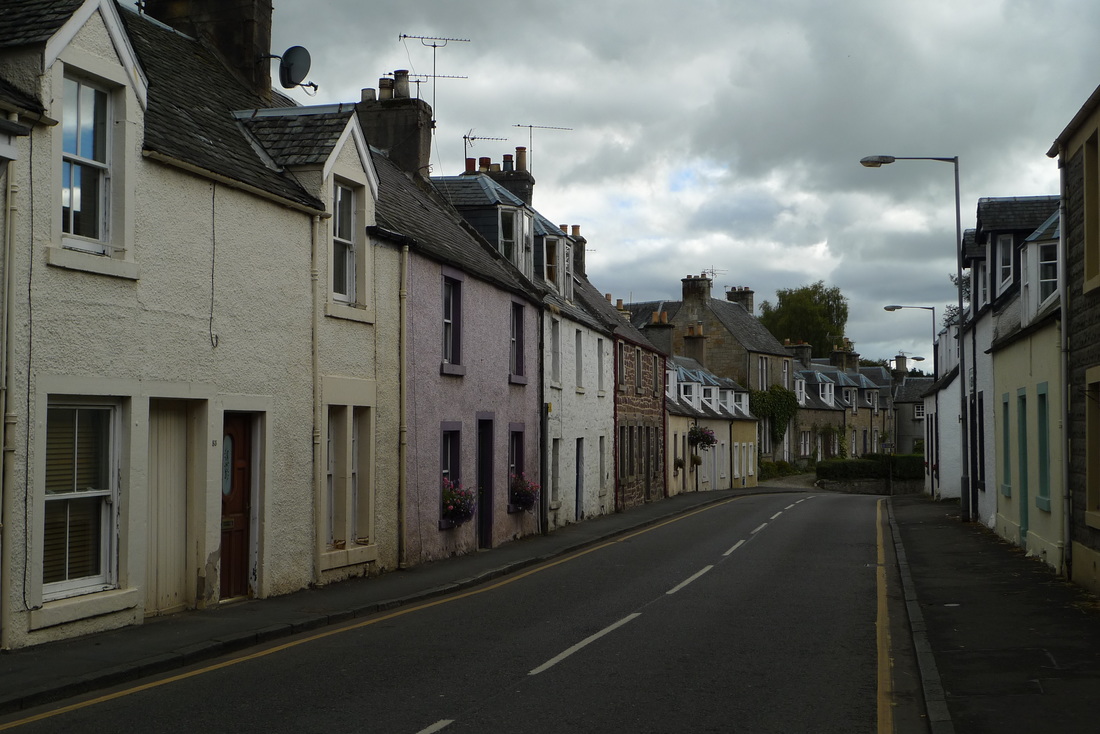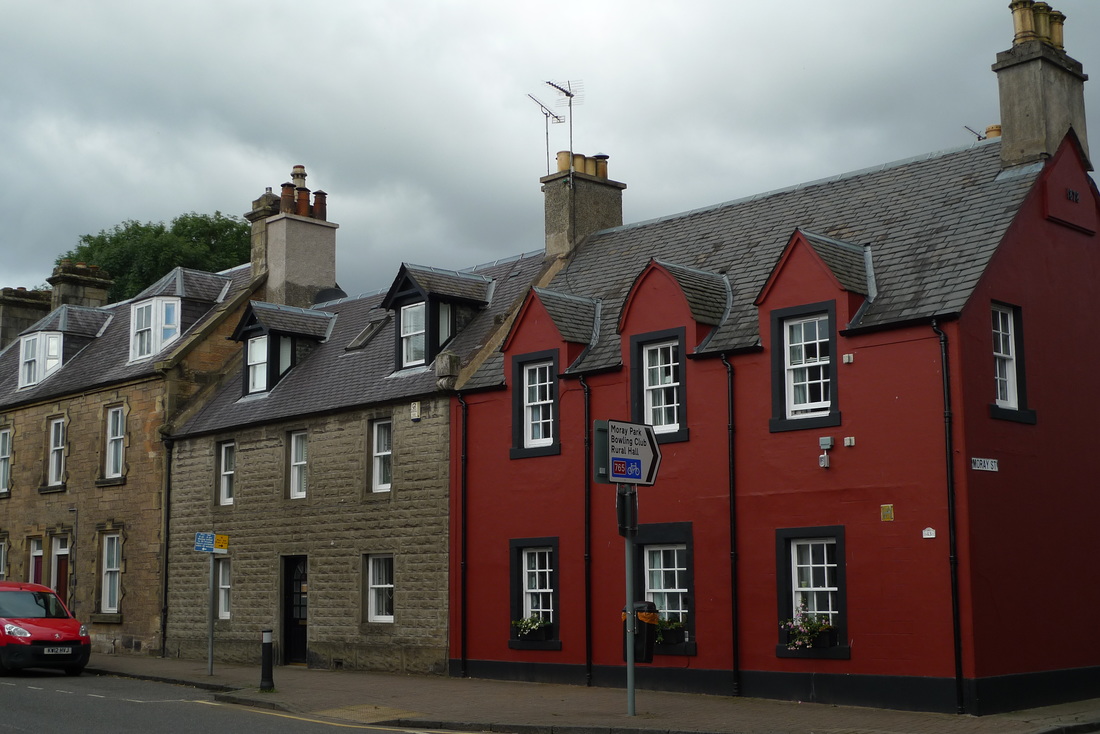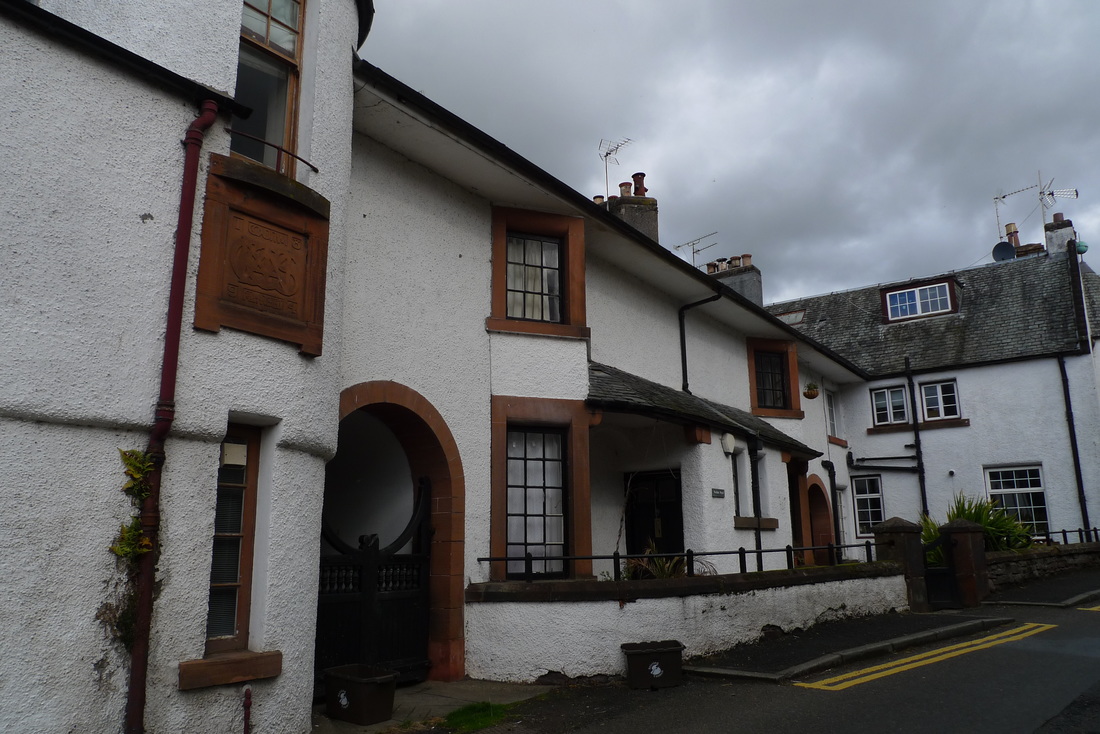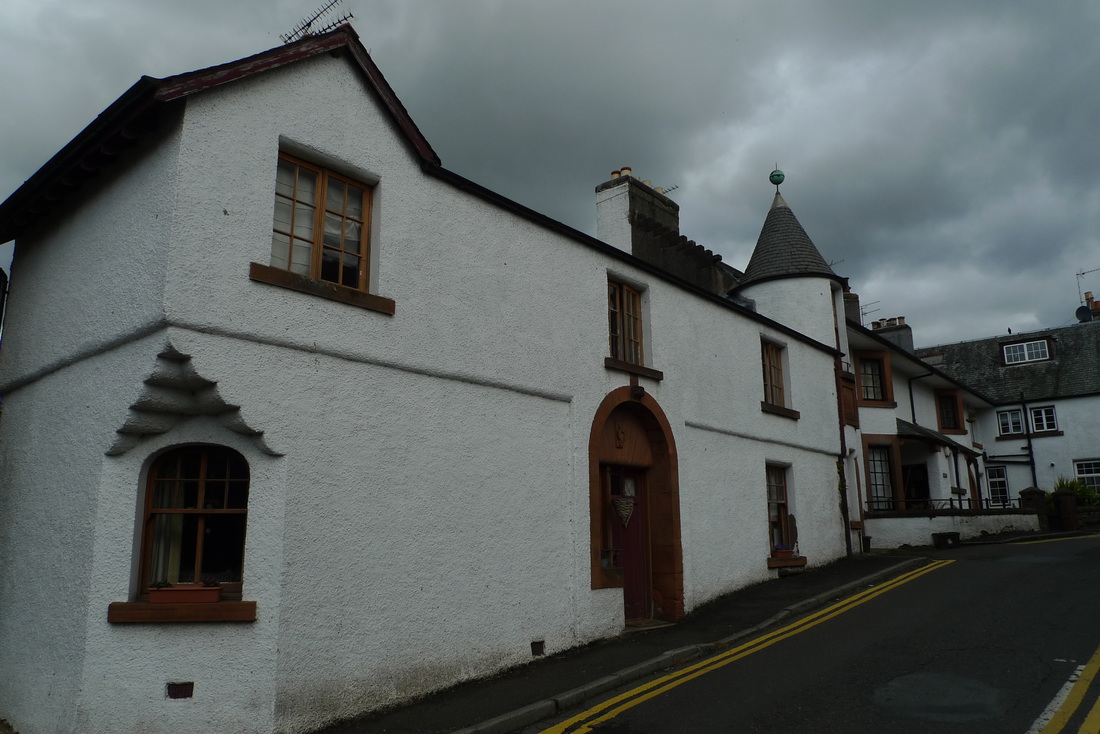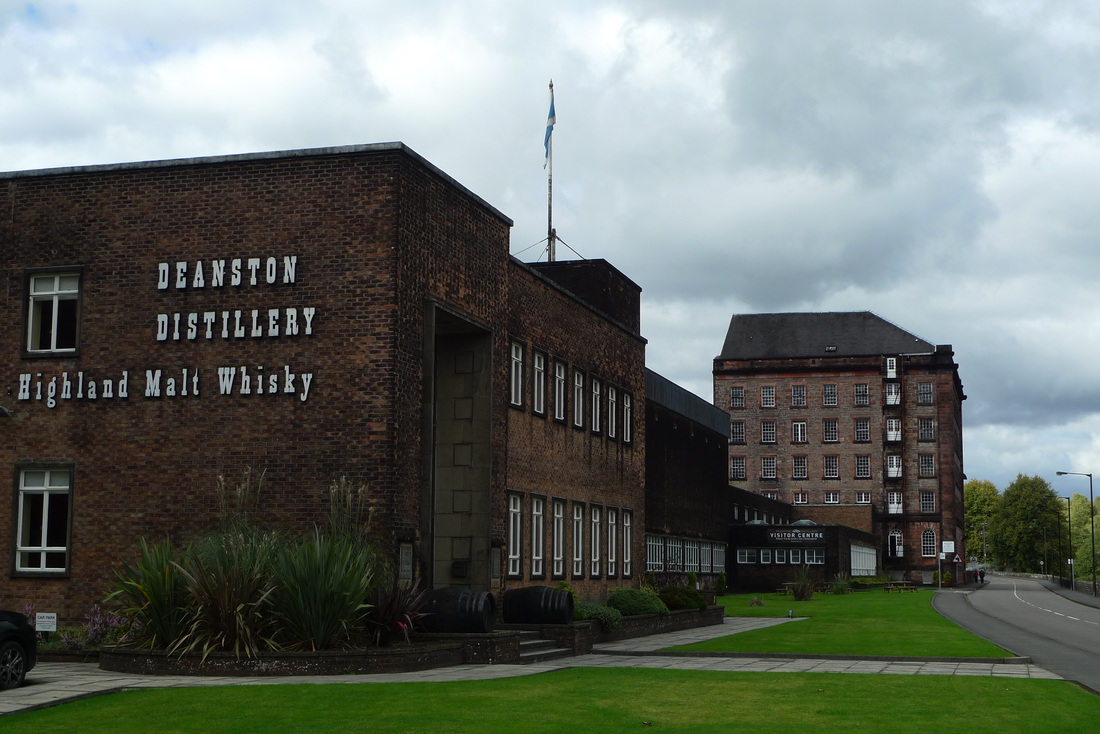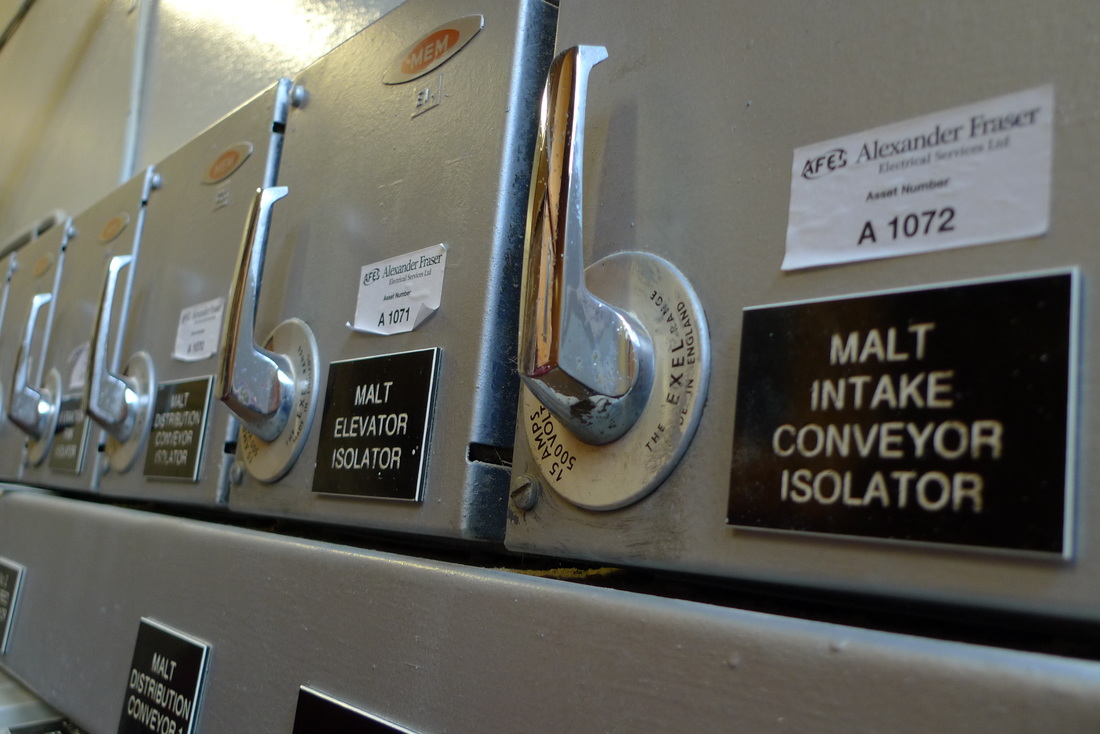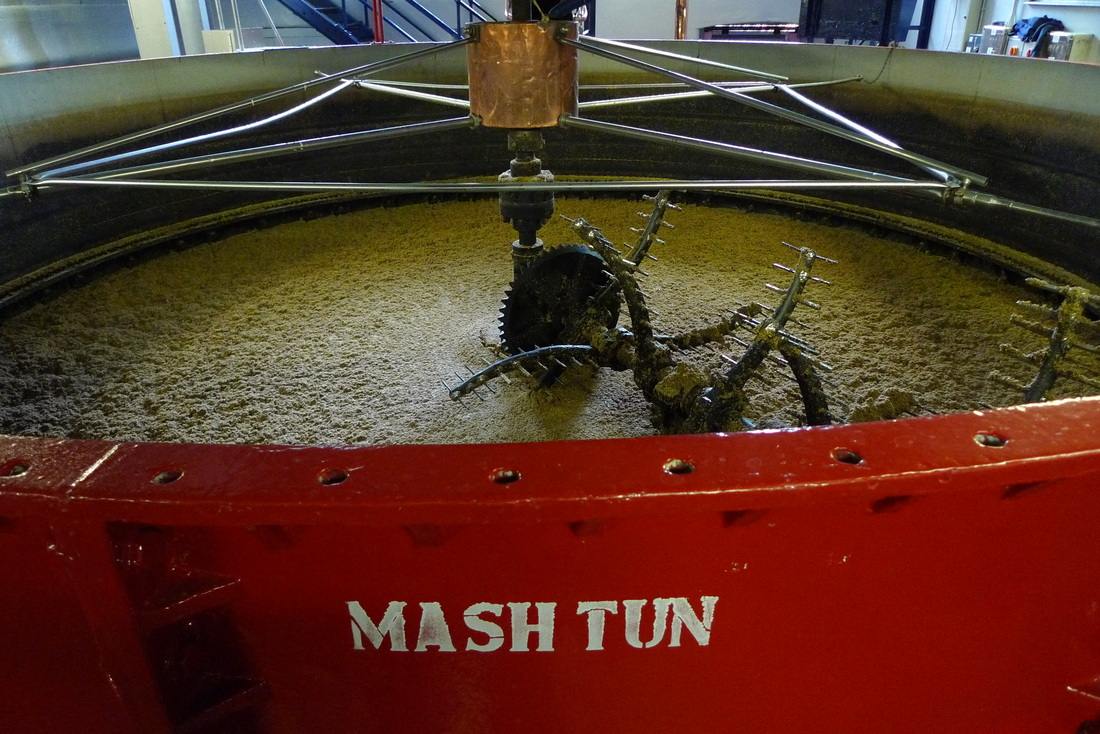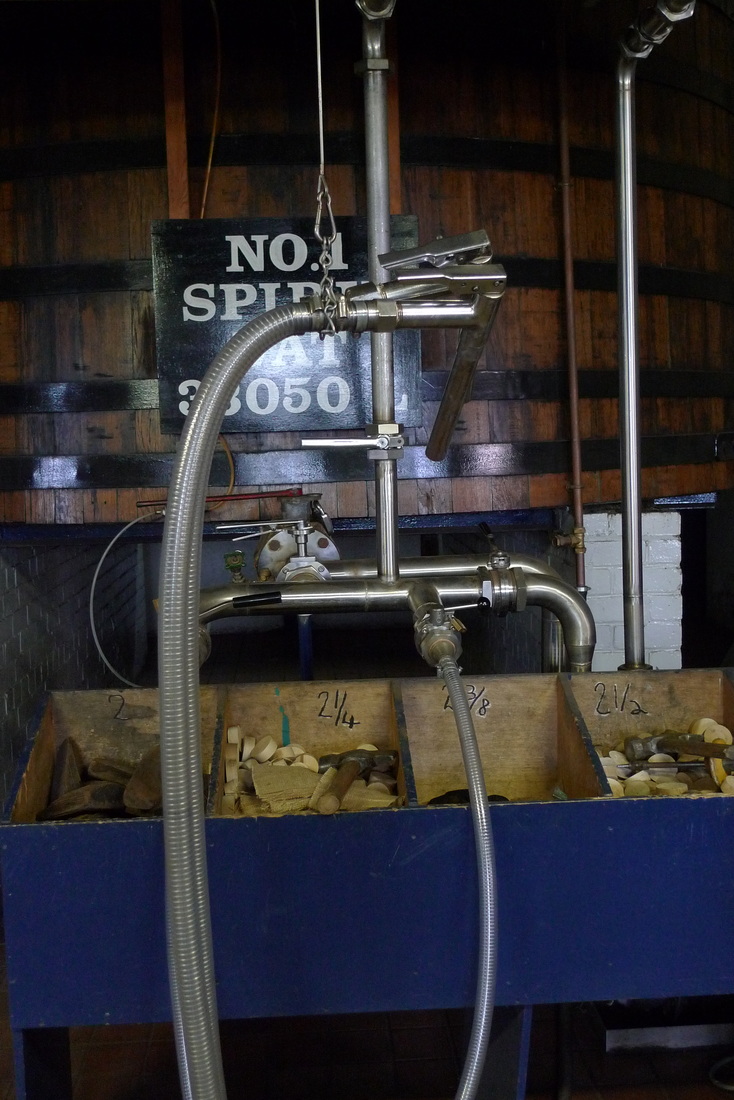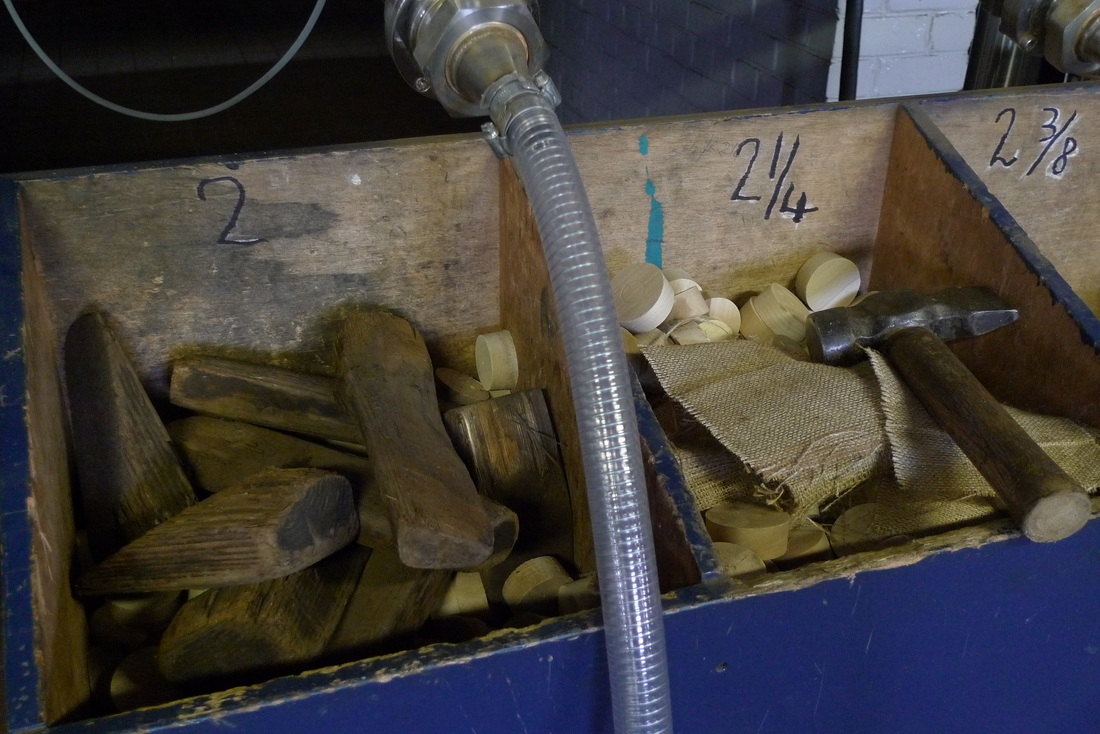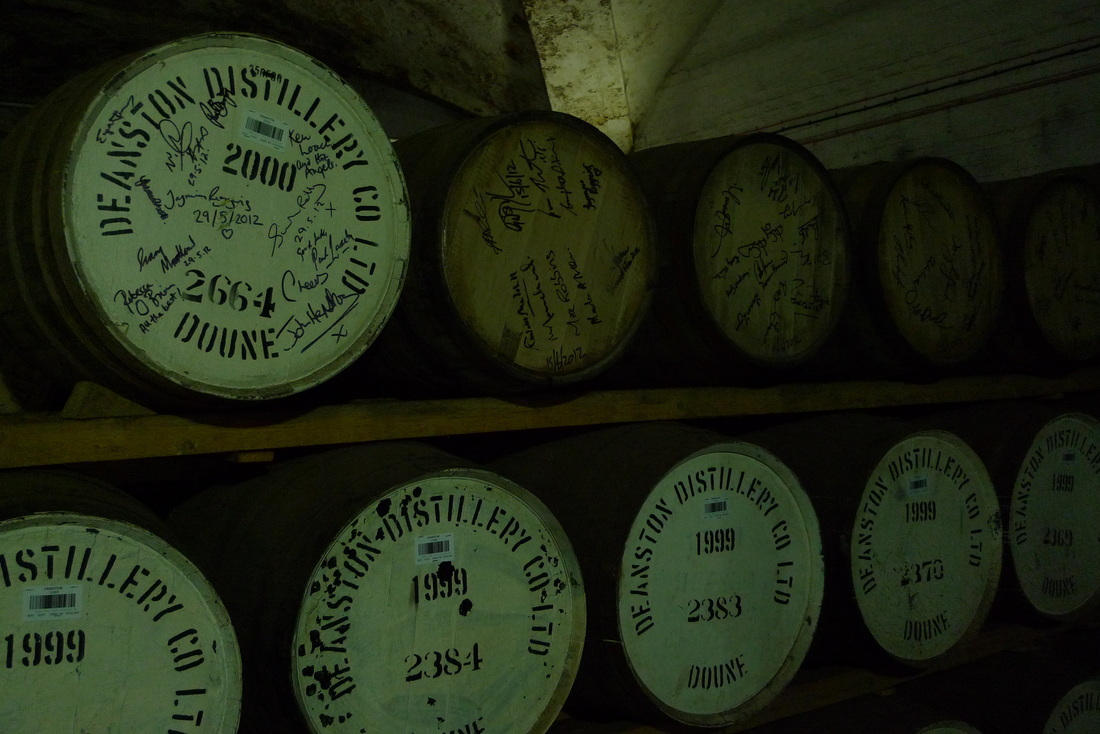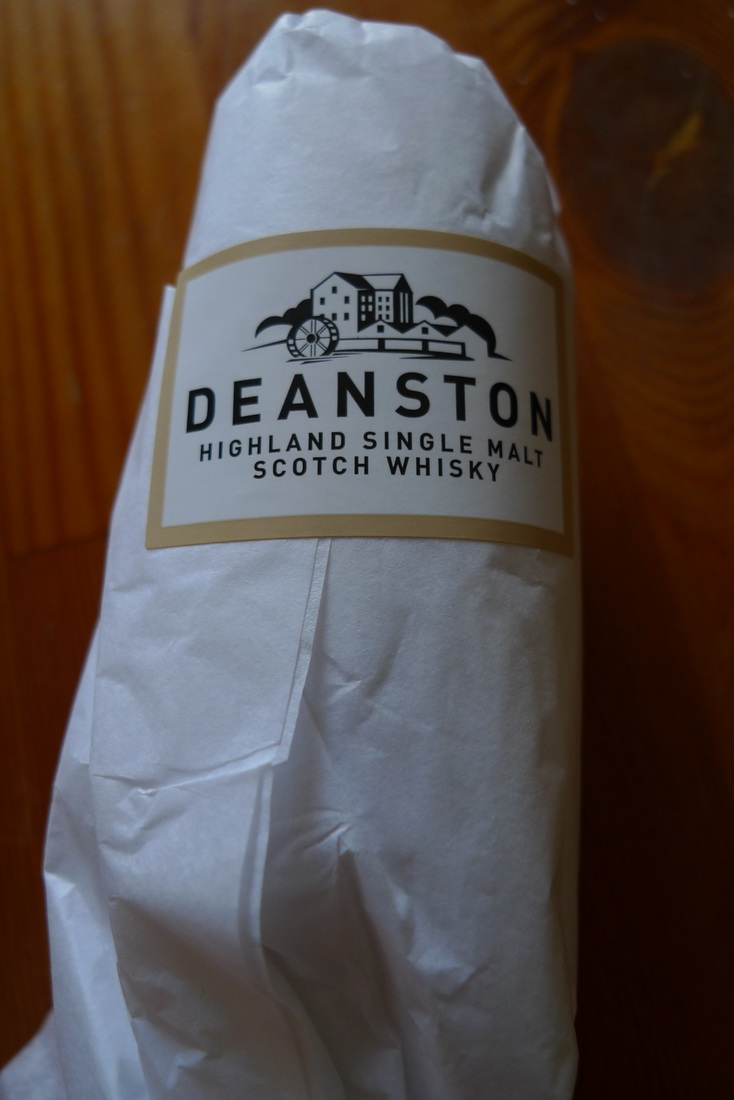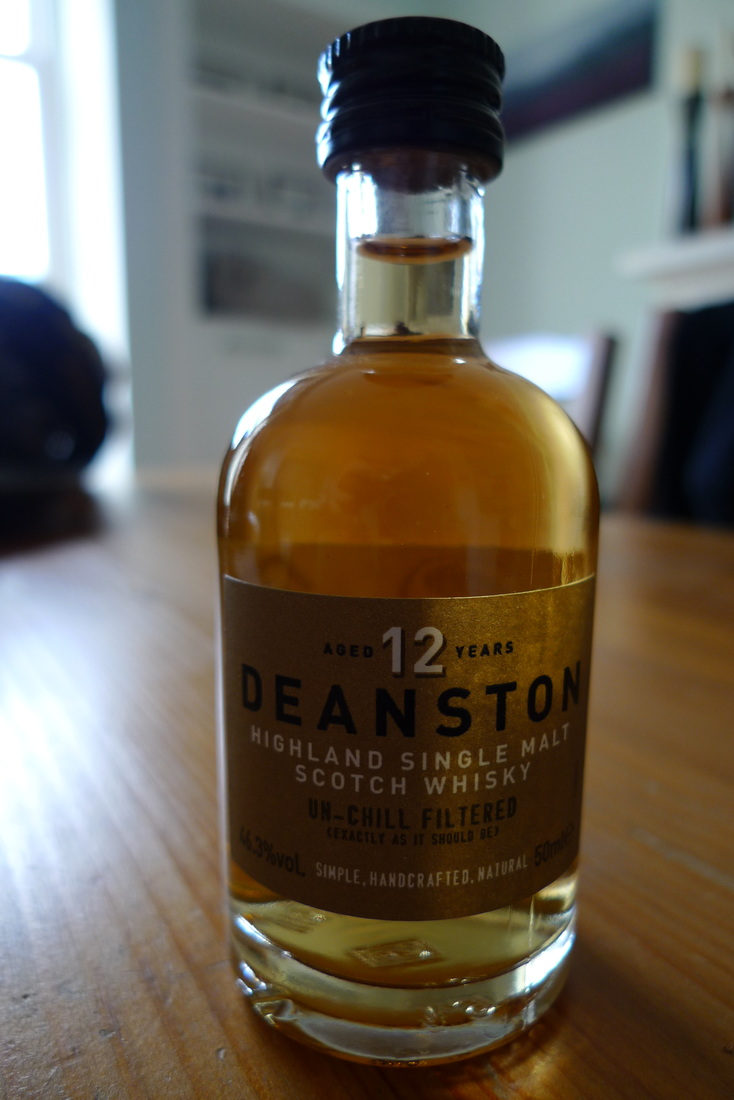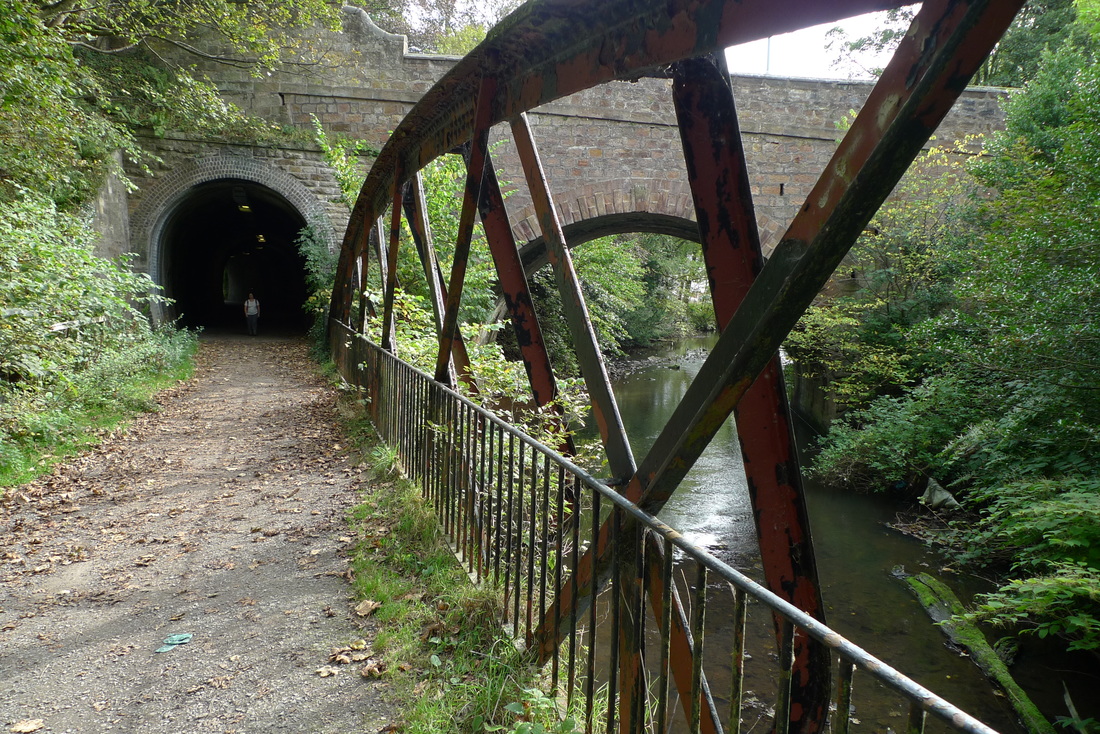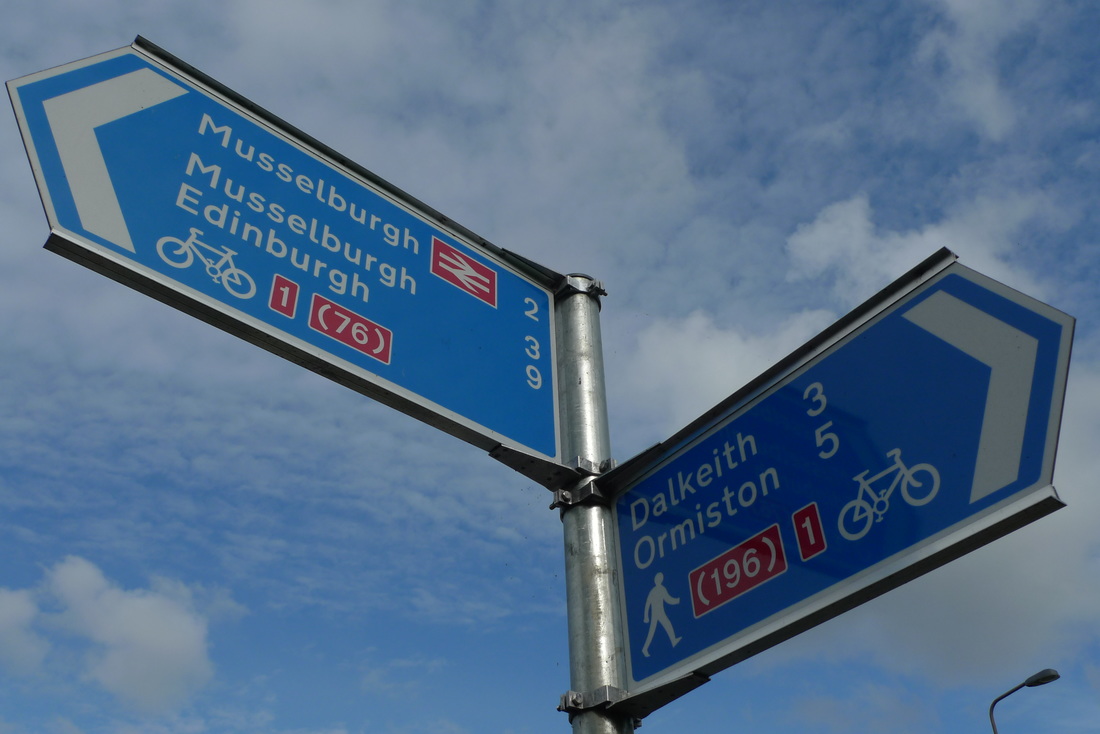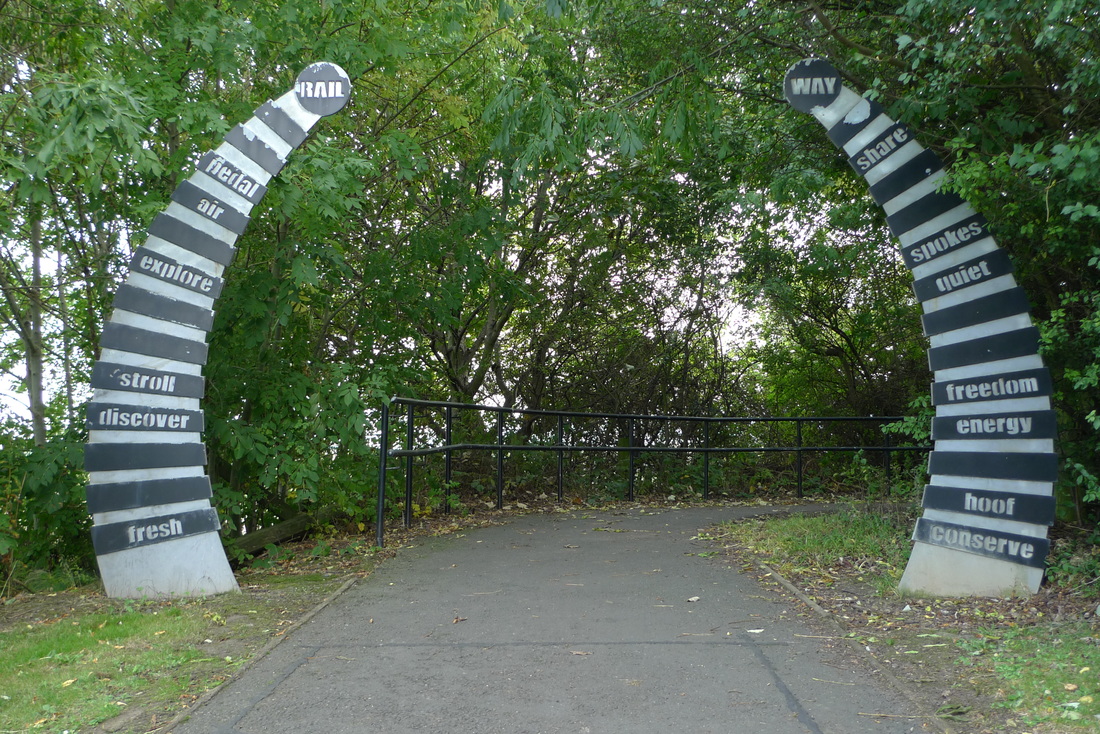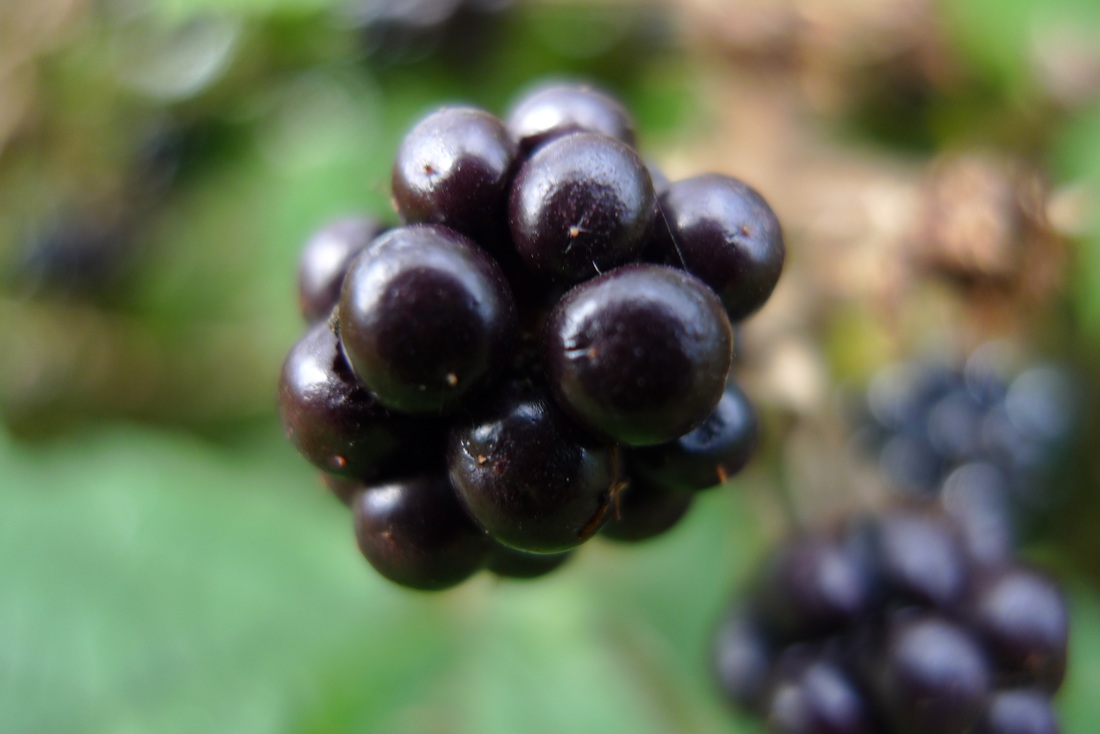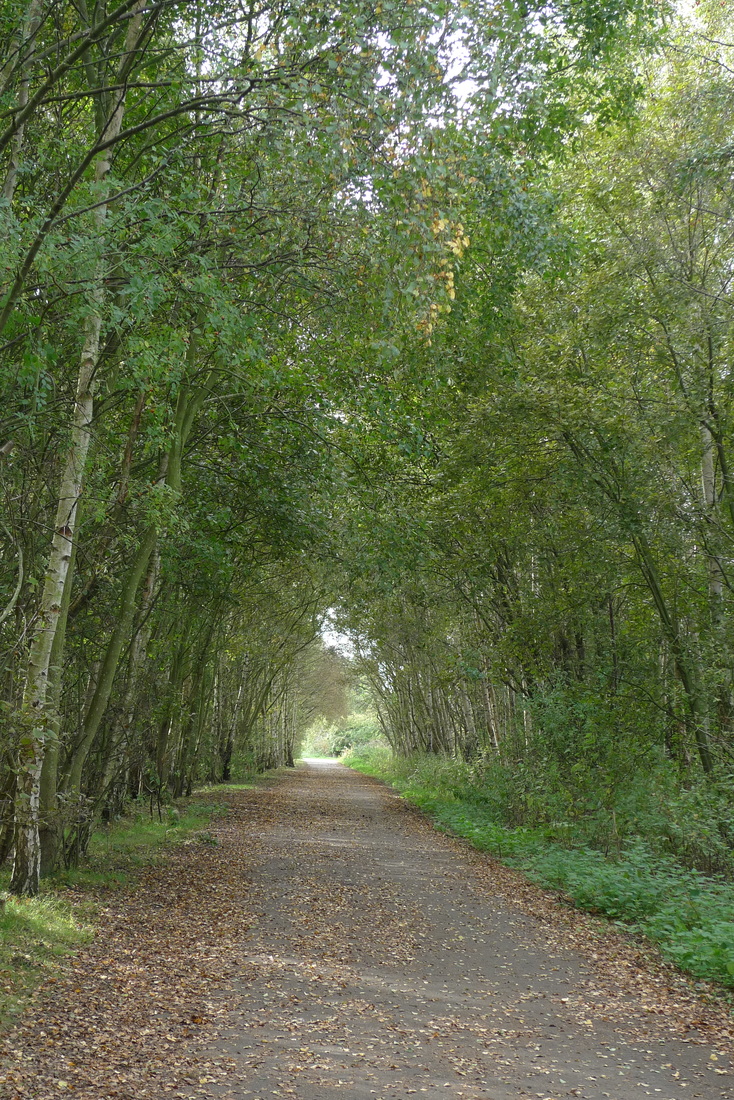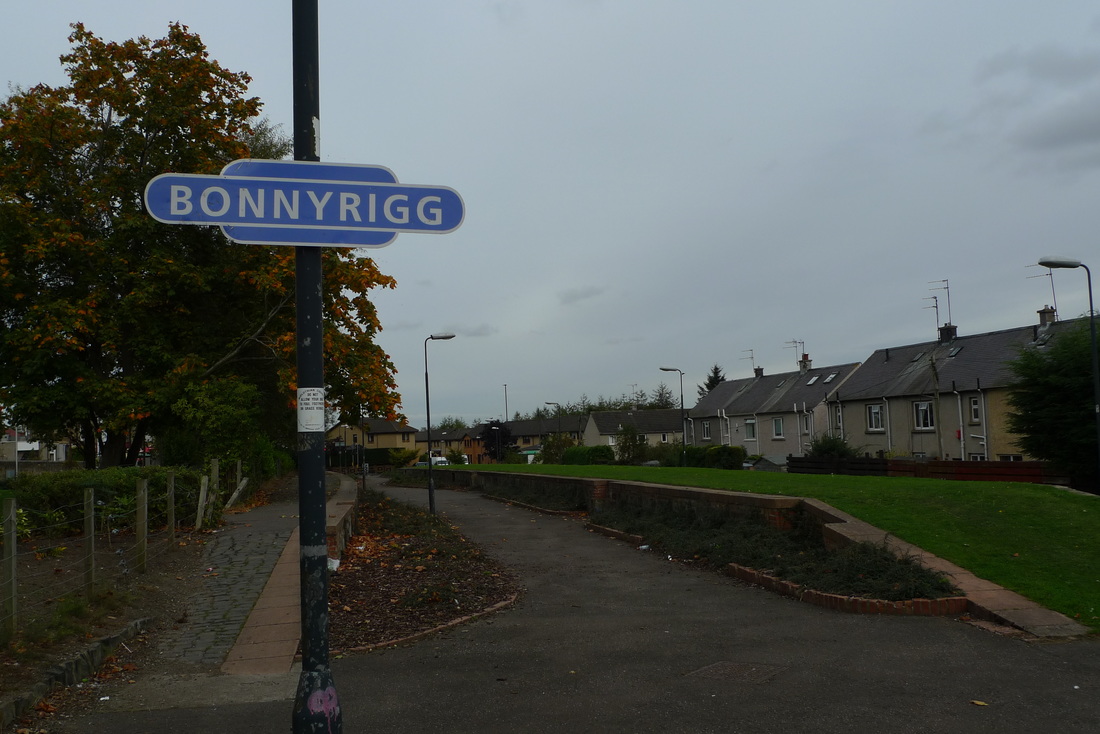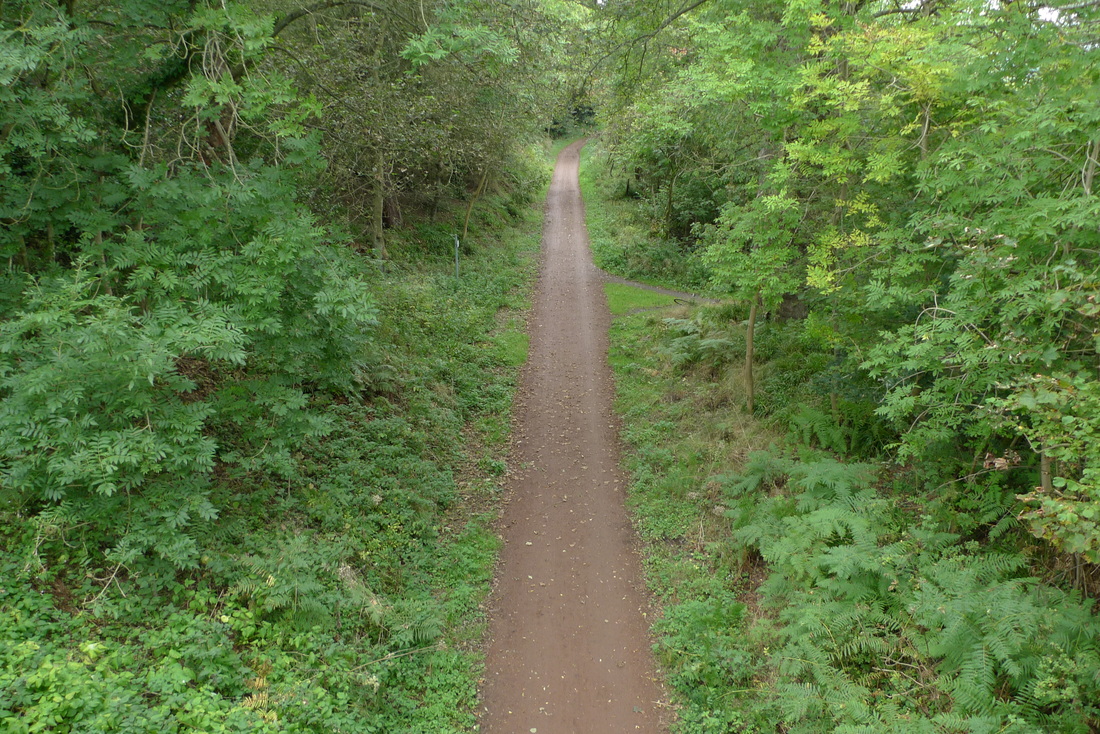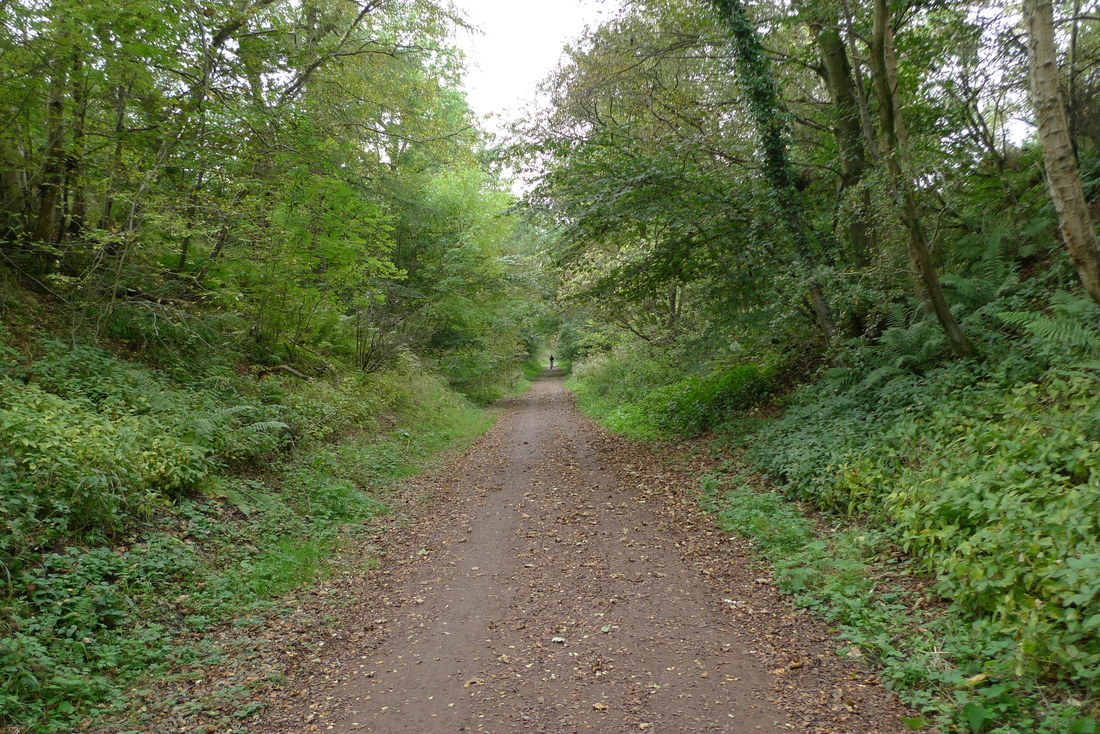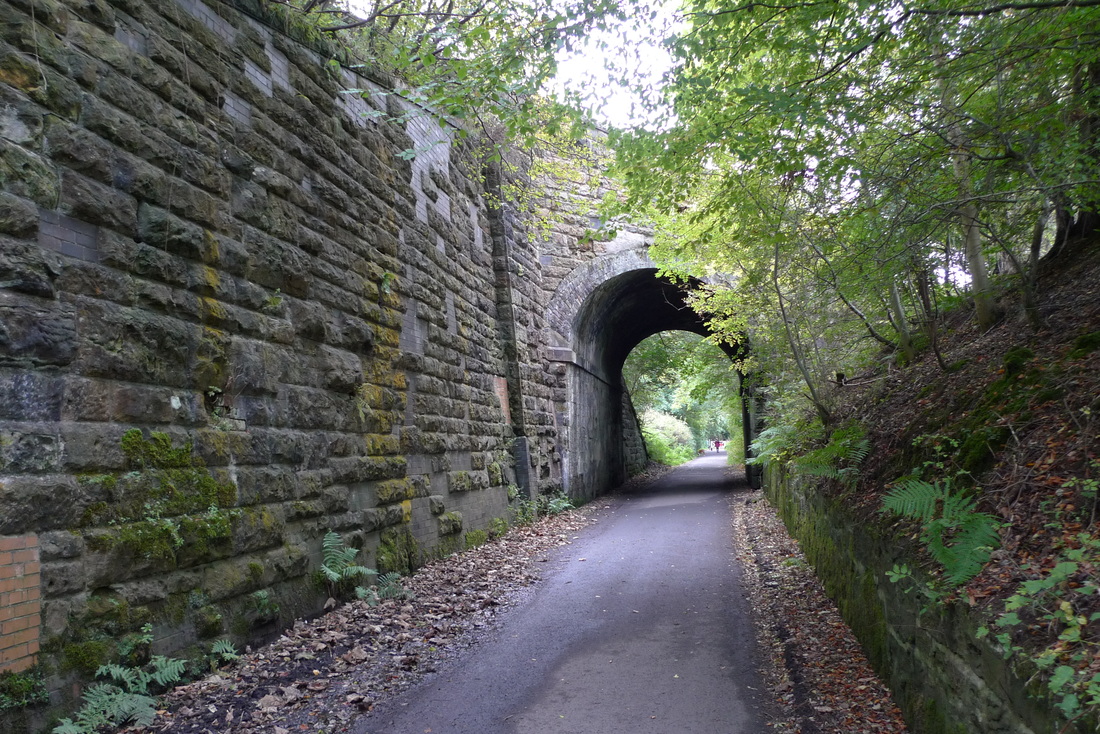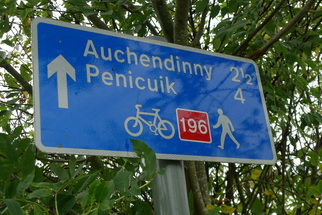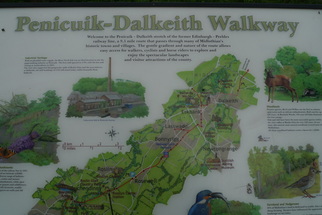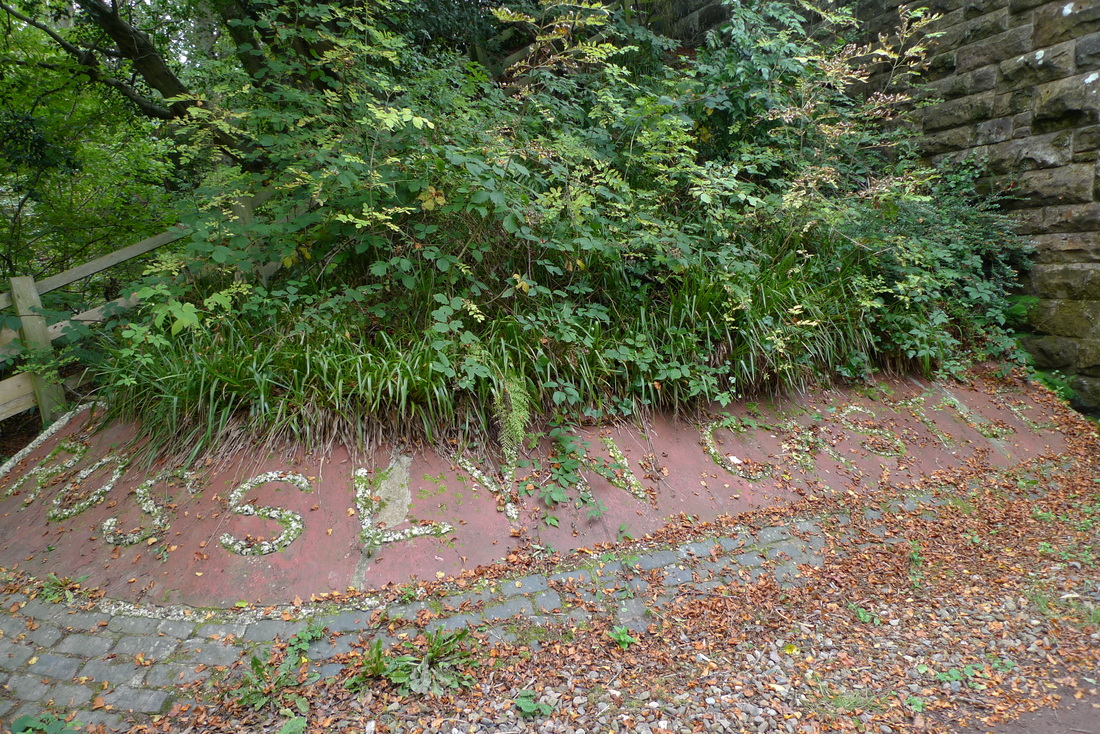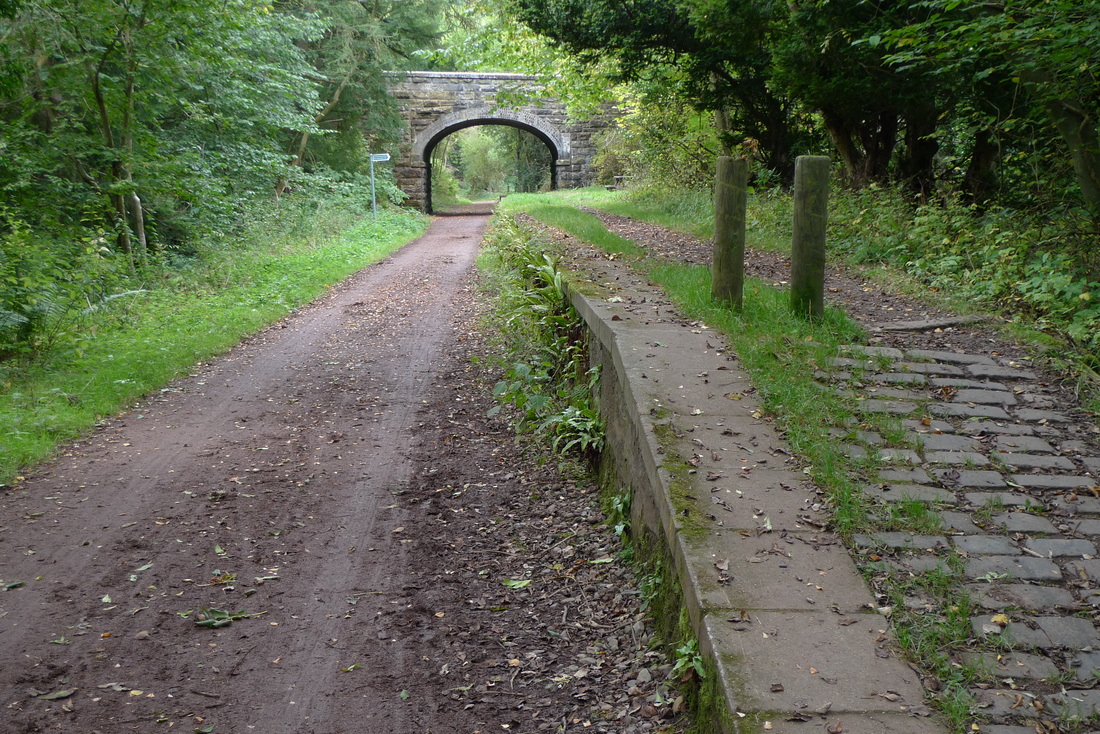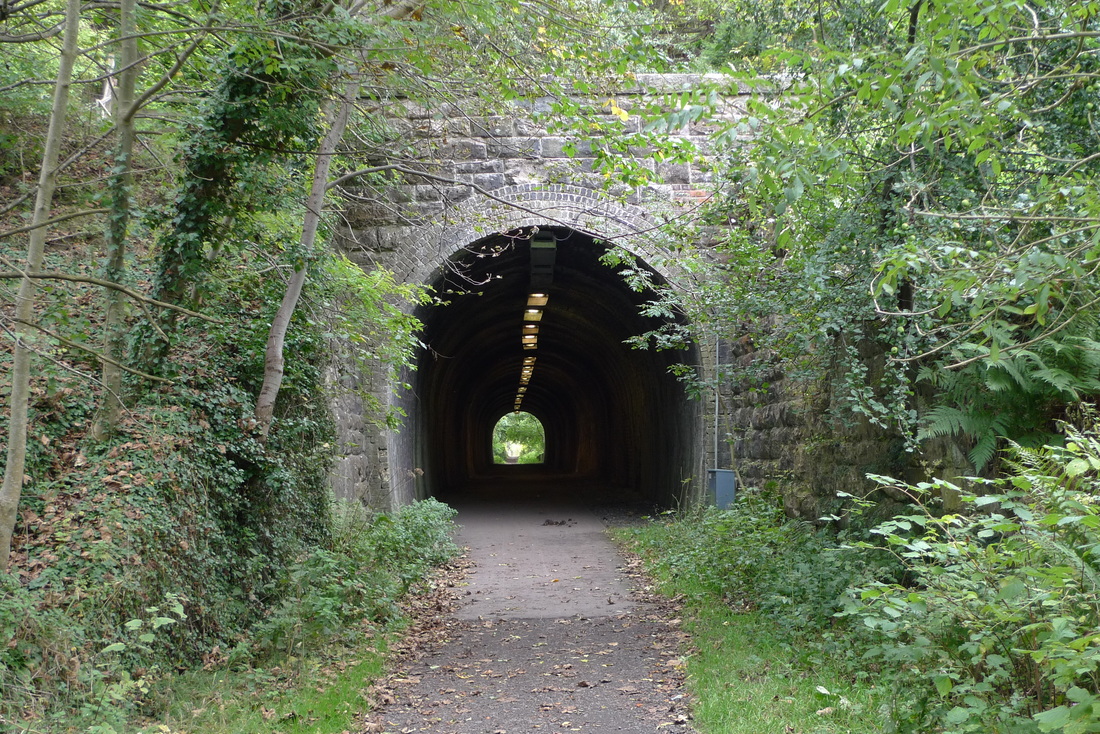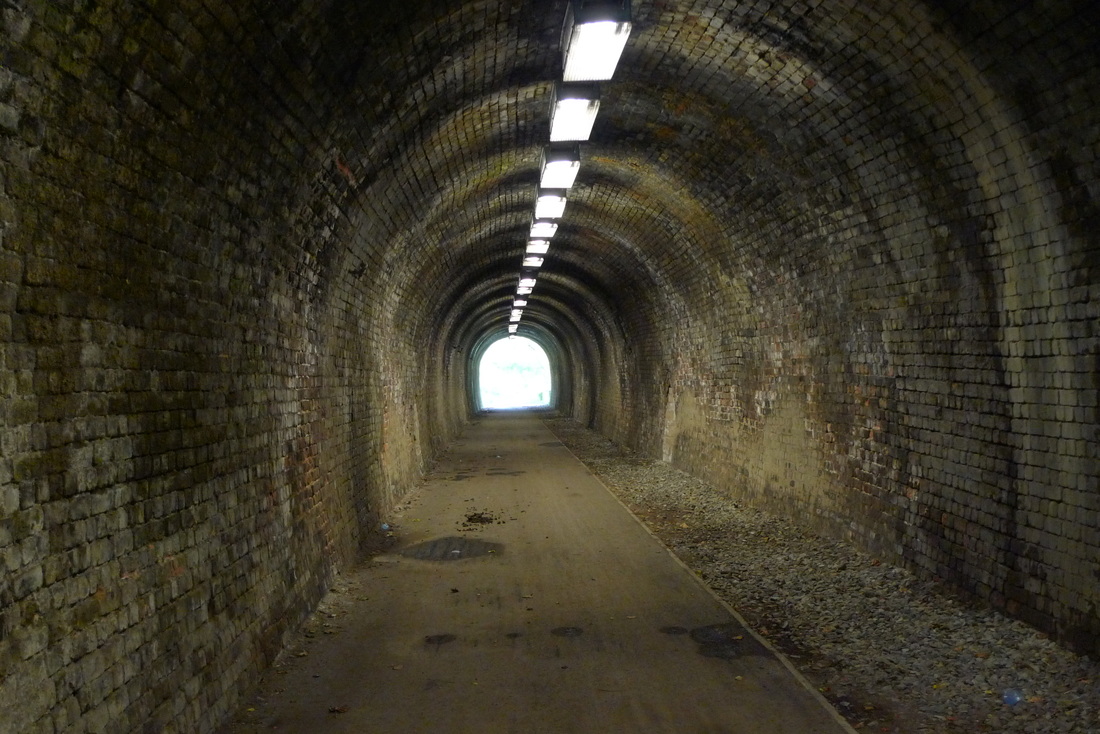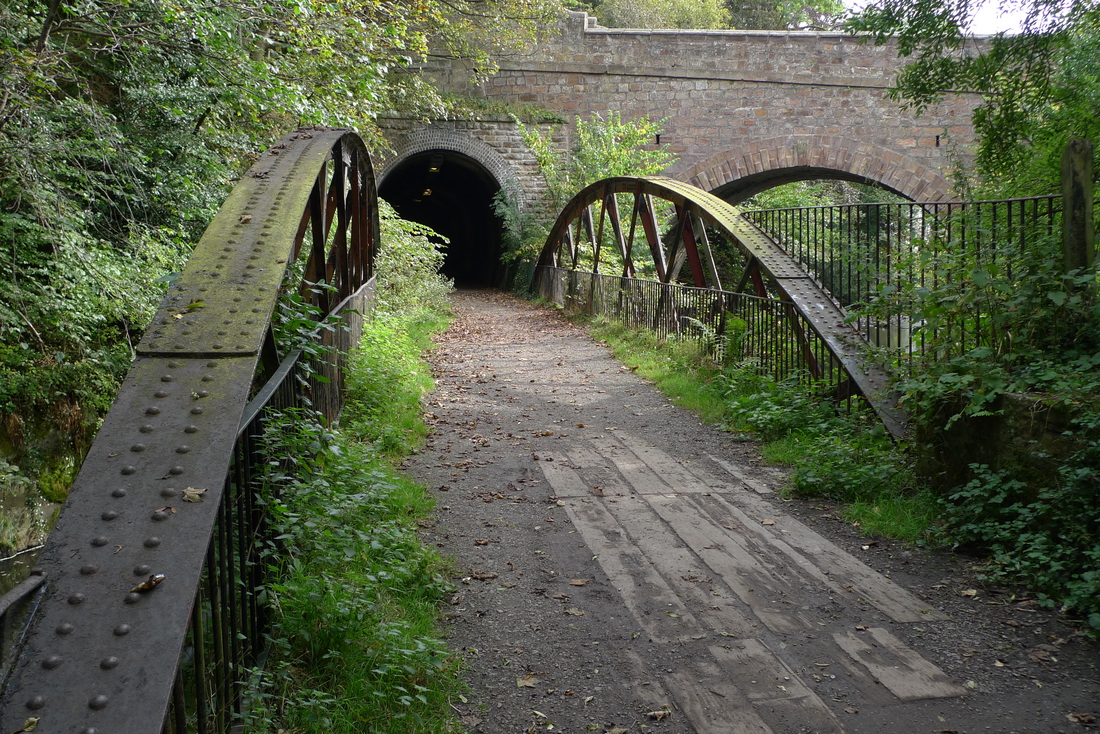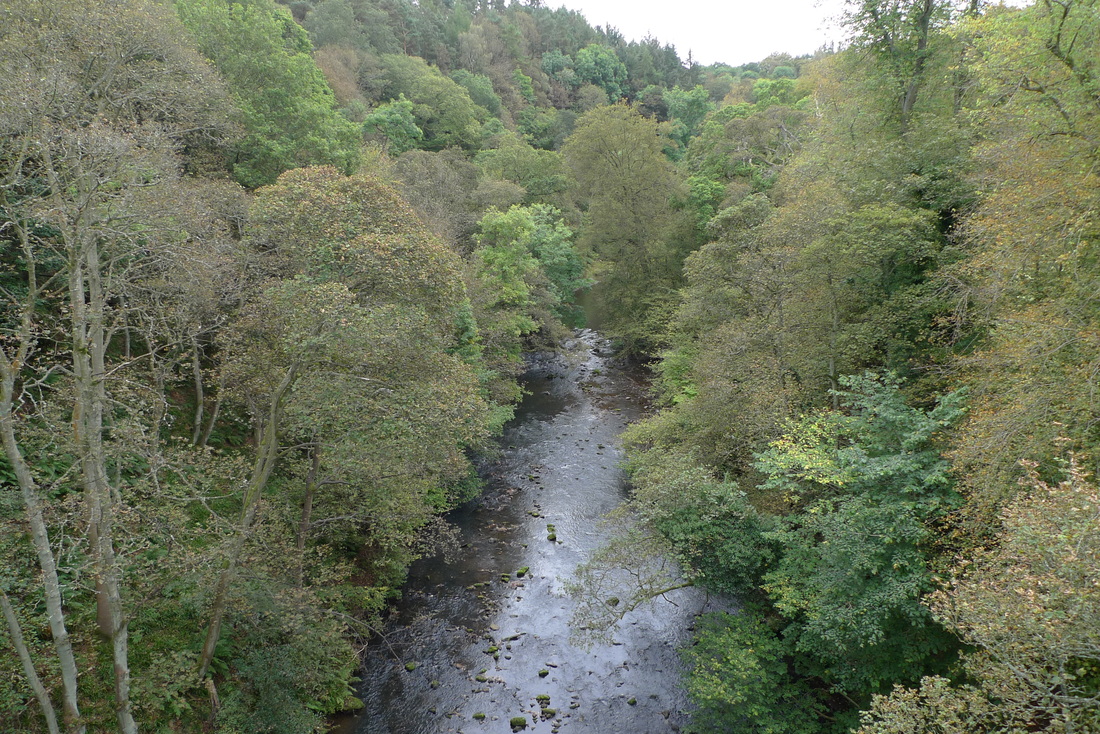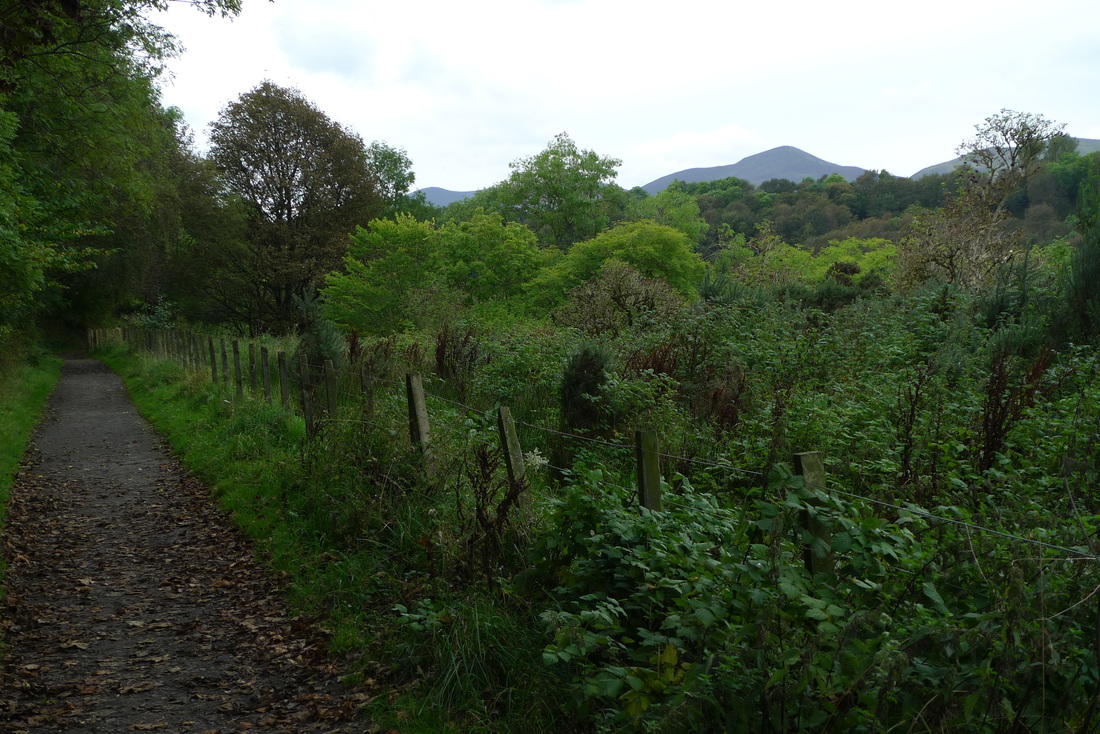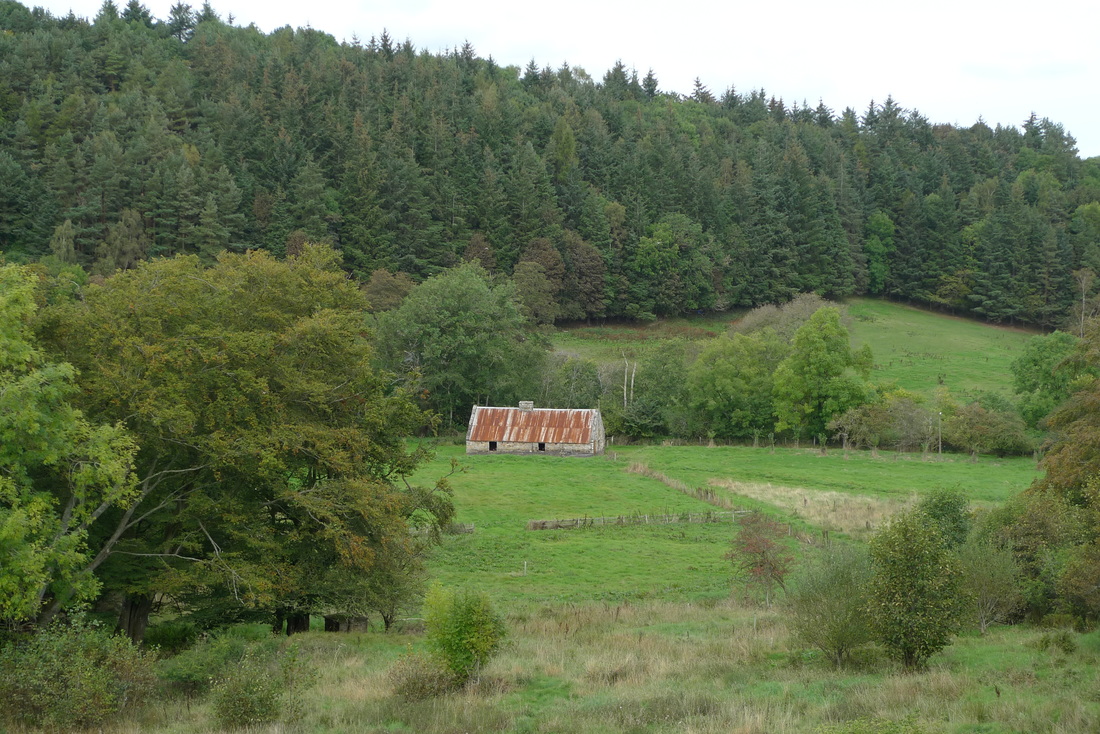|
The Colinton Tunnel is one of the most spectacular features of Edinburgh's cycle network. Visit it on this 8 mile traffic-free route following the Union Canal path and a disused railway line. The route ends in Balerno where you can visit the walled garden of Malleny House.
Fountainbridge The route begins on the Union Canal which can be found on Fountainbridge- hidden behind glass office buildings is something like a mini Amsterdam with the colourful canal houseboats and alfresco dinning . There is even a canal boat serving coffee.
-The canal is a popular place for locals. It can be busy with pedestrians and cyclists and is very narrow in places, so it is not a place to go very fast.
Despite being in a city the canal path has a surprising countryside feel with plenty of trees, ducks and swans. Slateford Aqueduct After about 2 miles you will come to the Slateford Aqueduct. Although an impressive piece of engineering this is probably the most annoying part of the canal for cyclists. The narrow cobbled path makes it pretty impossible to cycle over and the signage instructs you to push your bike. Some cyclists still give it a go, but there is so little space for passing safely that I recommend just pushing the bike and once at the other end you will be able to pedal again.
Colinton Dell
After the aqueduct it's just two minutes more cycling until you reach the turn-off. It is quite easy to shoot past it, but just look for the blue directional signage. There are three signs on a pole and one of them points to Balerno and Colinton.
This takes you up and onto a bridge that crosses the canal and then the A70 Lanark Road to join a path that was once a railway line. Passenger trains ran on this line until 1943, goods trains continuing until 1967. It follows the Water of Leith and heads into Colinton Dell.
This is a special part of the city and it is worth parking up the bike and doing a bit of walking along the many trails that take you through the woods and alongside the water.
Colinton Tunnel- 3.7 miles from Fountainbridge
One of the most exciting parts of the route is cycling through the railway tunnel at Colinton. This used to be a gloomy experience, but it has been transformed into one of the most beautiful parts of Edinburgh's cycle network, thanks to the mural painted on every surface of the tunnel.
The theme of the mural is local history and heritage. You will see an otter swimming, a train pulling into a station packed with interesting characters, a horse and carriage racing by and much more. The mural is nearing completion, but still requires donations and if you wish to give something there are details on the tunnel website.
Spylaw Park
After the tunnel you come to Spylaw Park where there is a particularly striking grand house. This was the mansion of James Gillespie who made his fortune as a snuff merchant. He built the house in 1773 next to his snuff-mill and today it contains private flats.
The park is ideal for a picnic with a huge grass area, plenty of benches and a children's play park. Or head through the park to get up to The Spylaw, a country pub with stylish interior and a beer garden. If coffee is more your thing then Java Moment (not open weekends) on Bridge Road does an excellent cup.
"I kept always two books in my pocket, one to read, one to write in." Robert Louis Stevenson. His statue in Colinton village depicts him with two books. Colinton village is worth a wander, particularly down Spylaw Street with its idyllic cottages leading down to a bridge where you are surrounded by the sound of the Water of Leith rushing below. On the other side of the bridge there is the gorgeous Colinton Parish Church. This is also where you will find the Robert Louis Stevenson statue. The famous author visited Colinton as a boy and the statue depicts him as a boy with his dog, a skye terrier called 'Coolin'. There is a poetry trail around the village with panels containing verse from his work.
Mills and Railways
All along this route there had been a thriving milling industry- saw mills, paper mills, barley and grain mills. The railway serviced these mills and led to a housing boom along the line as the train made it easy to travel to Edinburgh. Passenger usage was so robust that in 1914 a normal train consisted of 8 coaches and this was increased to 13 on Saturdays. After the First World War the railway started to go into decline, largely as a result of competition from buses. Monuments to the area's industrial past are rare and what you will mostly find is trees, gently flowing water and the chance to spot wildlife. If you are lucky you might see deer, heron, badger and kingfisher.
Juniper Green cake stop
About one mile from Colinton is Juniper Green. For cake or lunch leave the cycle path to go into the village where you will find Molly's on Lanark Road. The traybakes are legendary with their toppings of thick chocolate and delicious flavours like orange Aero. The lunches and breakfast are also good and they have some outdoor seating for sunny days. There is an attached delicatessen where you can pick up fresh fruit and other interesting foods for the journey ahead.
Currie Conservation Village
An elegant church, with a clock tower, appears suddenly- it is quite a striking vision after seeing only trees and and glimpses of the Water of Leith for the last couple of miles. This is Currie Kirk (1784) and the little patch of cute cottages surrounding it is part of the conservation village. It is worth getting off the bike and having an explore around here.
Balerno
Once you reach the end of the route, at Balerno, it is marked with a metal sculpture set into the pathway that signifies the twisting route of the Water of Leith. At this point you emerge onto Bridge Road. Turn left here to reach the centre of Balerno and for Malleny Garden. It can be a busy road, although there is a cycle lane.
Main Street in Balerno contains a couple of pubs, a hairdresser and a pharmacy. It is a pretty street the way that it curves uphill and is lined with attractive stone buildings and bright flower boxes.
Malleny Garden
The garden is sign posted from Bridge Road. You will see the large sign as you cycle towards the centre of Balerno. Malleny House is not open to the public, but the gardens are in the care of the National Trust.
The entrance (admission fee) to the garden is through a small gate in the wall that has a bird, like a phoenix, incorporated into the ironwork. This is the Gore Brown Henderson crest, former owners of Malleny House. On the other side of the gate there is a coat of arms, representing the Rosebery family, also former owners of the house.
The gardens are small, but have many interesting features, including clipped yew trees planted in the 17th century, Victorian glasshouses and the largest rose collection in Scotland.
An interesting fact is that spring arrives up to 10 days later here than it does in the centre of Edinburgh. This is because the garden is north-facing and has an altitude of 170m.
Looking for other ideas of cycling routes from Edinburgh?
Why not try the route to Musselburgh? It is also mostly traffic-free.
4 Comments
Until 1950 trains used to run between Biggar and Broughton and on to Peebles. This disused line is now a path that is more suited to walking, but you can cycle it. It's only around 5 miles, the scenery is incredible and there is a brewery at the end of the route.
You can find the path south of Biggar High School, adjacent to the caravan park. To reach Biggar itself you will find a route guide on my blog about cycling to Biggar. The start of the old railway path is a good surface and easy to cycle on, but it doesn't stay that way!
The path soon becomes overgrown to the point that you feel like you are cycling across a field on tracks left by a tractor. It becomes unrecognisable as a railway line. There are very few reminders that this was once traveresed by steam trains- the main infrastructure is the occasional small bridge with rusting ironwork.
I confess to being surprised by how incredible the scenery is on this path. I fell into the trap of assuming that north is the direction you need to go in Scotland to find the best scenery, but it is simply not true. The more that I travel in the south of Scotland the more I appreciate that it's just as beautiful here.
For the entire path there is a horizon of hills and I was lucky to have a day where the sunlight was golden and the sky blue and full of fluffy clouds. There are also hills on the right, some with incredible formations. It is a landscape sculpted over hundreds of millions of years from a time when these hills were once mountains as high as the Alps.
It must have been a dream to be an engine driver on this line and have this view from the cab.
The line began operating in the 1860s, but passenger volume never reached anticipated levels and it was closed in 1950. Freight traffic continued until 1966.
There was one small section that was completely impassable on my bike. It was too narrow and too muddy and I could not get any traction. I had to push my bike through nettles and got stung several times.
Arriving at Broughton there is a nice surprise- an old style railway signal.
The end of the route is adjacent to Broughton Ales, the first microbrewery in Scotland. It was established in 1979 and produces a varied range of beer, stout and lager. There is a shop where you can stock up on supplies.
I have written a review of the brewery's strong ale, Old Jock. The bottle label features Scottish flags and a bearded man wearing tartan standing in front of a backdrop of hills. A more 'Scottish' looking beer label you will be hard pushed to find. I love the bottle art of the cleverly named Hopopotamus pale ale. It features a hippo that has a keg of beer as a body!
Returning to Biggar
You can go back on the railway path, but if you found it tough to cycle you could use the B7016. It is a quiet country road and there are no nettles! Exploring Biggar My Biggar blog is packed with ideas of things to see and do in Biggar, including the museum and independent shops. Somewhere to Stay If you are spending the night in Biggar read my review of the Elphinstone Hotel.
An easy to access 7 mile traffic-free cycle route transports you to the pretty town of Dollar and the spectacularly located Castle Campbell.
Hop on the train to Alloa Convenient rail access makes this an easy day trip from central Scotland. Direct trains from Glasgow to Alloa take around 55 minutes. From Edinburgh it takes about 1 hour and 10 minutes with a brief change of trains at Stirling. The final 12 minutes of the journey between Stirling and Alloa is very scenic. Stirling Castle and the Wallace Monument loom into view and there is a panorama of the Ochil Hills. This outlook onto the hills is what makes this cycle path special. Route 767 is signed from Alloa station, so you can quickly leave behind the large car park, huge supermarket and uninspiring surroundings.
The Devon Valley Railway closed to passengers in 1964 and now you can cycle where there were once train tracks. It must have been a treat sitting in a carriage with these views of the hills. It is just as good on a bicycle and during my visit the hills had blobs and lines of mist that added to their mystical beauty.
A photographer had his tripod setup alongside the path to capture the scene- there is something about hills with mist that stirs your emotions. Later I spotted a robin hopping from branch to branch and low flying blackbirds crossed from one end of the path to the other. A friendly horse strolled up to the fence and I gave him a pat.
Railway Relics
There are some remnants of the railway to look out for. Bridges are the most obvious, but there is also a gradient post with the black writing still very clearly announcing "1 in 436." And at Dollar the cycle route sweeps alongside the remains of the gently curving platform, now with patches of moss.
Possibly the most impressive relic is at Glenfoot, near Tillicoultry, where the pillars are all that remain of a dismantled bridge. The old track bed, raised above the surrounding fields, follows on from the old bridge with a backdrop of forest and steeply rising green hills. It is magnificent and a poignant reminder of a once extensive rural rail network.
A Moment in Nature
Autumn is a perfect time to experience this route because it is thick with trees that turn golden. The air is fresh and earthy from the fallen leaves that crunch when your tyres run over them. At one point a shower of leaves fell and some hit off my head. It was a magical moment in nature. I happened to be there at that exact time when these leaves detached from the tree. The route provides access to Stirling Mills Outlet Shopping Village where there are retail chains and somewhere to get a coffee. Despite a large number of cycle racks it is a place geared to car drivers where they can park up and then walk around a pedestrianised "village" of retail units, designed to mimic a high street. I found it boring and lacking in atmosphere, so I would recommend pushing on to Dollar, which is much more pretty and has a real high street.
Dollar is characterised by neat gardens, cottages and Victorian villas. The most distinctive feature in the town is the burn that runs down the middle of two streets. It is tree-lined and crossed by stone bridges.
There is a small clock tower, a memorial to a doctor, William Spence. It has a plaque that pays tribute to 'his skill and kindness of heart.' Coffee and Cake The High Street is well stocked with a deli, baker, bridal shop, bathroom shop, antique and gift shop. I recommend Cafe Des Fleurs for a coffee and snack. I had a really good, strong cappuccino and a moist lemon drizle cake. Next time I would love to try the 'special hot chocolate' that has a tantalising description in the menu- 'with a layer of delicious melting confectionery.' The interior is vintage style with mismatched furniture and side tables made from old travelling trunks.
To the Castle
The castle is signed from the town, but be prepared for the ridiculously steep road. This road will test the toughest of cyclists and I had to walk the last part of it.
Having seen a great many of Scotland's castles I feel that each castle needs to have something unique about it to make it memorable for me. With Castle Campbell it is the location above Dollar Glen that is the standout feature. From the approach road the view of the fortress, peaking from the tree tops is a moment you will always remember.
The Campbell family once owned a large number of castles and estates in Scotland, choosing the method of strategic marriages to acquire this wealth. This castle, once named Castle Gloom, was their main stronghold in the lowland region. It dates from the 1400s.
There is a lot of fun to be had exploring the staircases, tower house and gardens. It is not a large castle and will not take very long to visit every nook and cranny.
From up here you can see as far as the River Forth, the thick woods of Dollar Glen in the foreground. On the other side of the tower it is completely different with the Ochil Hills looking quite barren in comparison.
There is a slit window in the castle's toilet closet that allows you to hear a nearby waterfall and birdsong, a clear reminder of a peaceful location that is at odds with the castle's owners expectation of being attacked.
I loved the gardens where there is a lawn with picnic benches, gorgeous flowers and buzzing insects. This is a place to spend some time relaxing.
Outside the castle entrance there are walking trails into Dollar Glen. I took a steep staircase into the depths of this beautiful world of trees, waterfalls and wildflowers. Spending longer in this glen is a reason for me to return here one day.
How to get here Take a train to Alloa (details are at the beginning of this blog). Route 767 is signed from the train station. Google maps is not correct for the beginning of the route as it does not have the bridge over the railway, so my advice is took for the Route 767 signs around the station and just follow these. The cycle path is mostly tarmac and totally flat. It will not take long to cover the 7 miles to Dollar. It is a further mile to reach Castle Campbell by way of a very, very steep road.
Alloa is home to William Brothers Brewing Company, so why not try to sample one of their beers after your ride? One of my favourites is Fraoch Heather ale and you can read my review of this.
Enjoy cycling old railway lines? Why not try the Edinburgh to Penicuick route? Read my blog about the Edinburgh to Penicuick cycle route
There are miles and miles of old railway lines in Britain that are now walking and cycling routes. Jullian Holland explores 100 of these lines and gives practical advice about walking or cycling these routes. Disused railway lines are heaven for cycling because they are generally flat and always traffic-free. This book is a good place to start planning your adventures along these "lost railways."
The book is a handy size, small enough for you to take with you when travelling around. The contents page is easy to navigate with a map of Britain showing the locations of the lines. There are 15 routes in Scotland. Each route has a map, taken from a classic 1960s atlas, that provides a vintage feel to the book. For cyclists this book is great for providing new ideas for places to go cycling and disused railway lines are perfect because they are traffic-free.
Some of the pages have photographs to show what the railway lines look like today or in the past when it was still operational. Most of these pictures are striking and will inspire you to make a journey to the line.
There is practical information, down the left-hand column, about how much of the line is open to walkers and cyclists and which part of the National Cycle Network it is on. The text describes the history of the railway line and what you can expect to see today. There is also more detailed information about how you can get to the line and make use of it as a walker or cyclist.
Jullian Holland has written many books about Britain's railways and you can expect his usual high quality with this one. This book is not just for train lovers and the focus is on providing walkers and cyclists with practical information to access beautiful areas of countryside that were once part of the rail network.
Click on the image below to buy this book from Amazon Andy Murray, Monty Python and Ken Loach. This cycle route has it all! The cycle path between Dunblane and Doune makes it easy to see both the stunning interior of Dunblane Cathedral and have a tour of the distillery that featured in Angel's Share, a film about whisky.
The route takes you alongside the river, Allan Water. Its banks are crowded with trees, making this a green and peaceful spot. There is a distinctive narrow humpback bridge to cross and this gives a great view of the fast flowing water.
The route proceeds through housing estates with large properties, reflecting the wealth of the area. Then a muddy lane with potholes-a-plenty where I disturbed some pheasants rustling noisily in the bushes- they made a panicked and clumsy escape.
Further ahead the path was blocked by pupils from Dunblane High School. "Bike!" One of the girls shouted. "Make way people!" Then a teacher shouted "Move to the right!". But they all moved to the left. The teacher looked at me and shrugged, "I say right and they go left!" There was still a group of boys that I had to pass and they were completely unaware, so it was time for the girl to shout again, "Move! Murray!" This time they heard and moved to allow me to pass. I thanked them and they all said, "no problem." After this I reached the disused railway path, a flat and straight route, flanked by trees and bushes.
This line had linked Dunblane to Callender until closure in 1965. There are several bridges along the route, which are about the only physical remnants of the railway.
The path provides good views when it gets closer to Doune. I found a bench to sit in the sun and eat my tuna roll from a Dunblane bakery, songbirds creating a lunchtime concert.
Doune Castle featured in Monty Python and the Holy Grail. There is an entry fee, but you can look at the outside for free.
Doune has a narrow main street with small cottages. There is a particularly striking red house, adorned with window boxes.
My favourite building in Doune is a white house on George Street with quirky architectural features. There are archways, narrow windows, triangular bay windows and a turret like a witches hat. The house is called Pudden Wynd.
This house is passed on the way to Deanston Distillery, which is only 1.3 miles from Doune. This distillery building is more industrial and functional than the poster boy distilleries that adorn coffee table books, postcard racks and tourist brochures. There are no pagodas or gleaming white-painted warehouses, but it has a pleasant location next to the River Teith where heron's can be seen fishing.
If you are thinking that the taller building is perhaps reminiscent of an old mill you are correct. Deanston was originally a cotton mill. It operated from 1785 until its closure in 1965. A new use was found for the site as a whisky distillery.
The great thing about the Deanston guided tour is that you can take photographs which many other distilleries prohibit.
I have been on several distillery tours, so I tend to look for things that are different, things that might be unique to a particular distillery. At Deanston they include something that I had not seen before on a distillery tour- the room where they fill the whisky barrels. I was quite surprised to see that the device they use was like a petrol pump and putting whisky into a barrel was just like filling up a car.
There were also containers full of the wooden stoppers that are used to plug tha barrels shut. I learned that the stoppers are made of poplar.
I also discovered that Deanston generates its own electricity from water power, the only distillery to do so. The surplus electricity is sold back to the National Grid.
A visit to a distillery is an assault on your senses. There is noisy machinery, heat and humidity and unusual smells. In particular, the washbacks, the large containers that contain fermenting liquid, is very fruity, like ripe bananas. In the warehouse there is a whisky barrel signed by the cast and crew of the film Angel's Share. This is a Scottish film directed by Ken Loach with a mixture of comedy and drama. Whisky features heavily in the film and some scenes were made at Deanston.
All distillery tours end with a tasting. This is quite a basic affair compared to some other distilleries I have visited. At Deanston you drink your dram standing up in the shop, whereas some other distilleries have dedicated tasting rooms with leather armchairs.
Deanston is not a smoky whisky. It is smooth, sweet and fruity. I purchased a miniature which was wrapped in tissue with a classy sticker featuring a picture of the distillery buildings. There is a water wheel in the picture, a nice way to remember the cotton mill that was originally here. The first part of this blog is about Dunblane and can be read here.
Distances and Directions
This is a ten mile return trip from Dunblane. Being a short cycle means that there is plenty of time to visit Dunblane and its Cathedral and take a tour of Deanston Distillery. Dunblane takes around an hour to reach by train from Glasgow or Edinburgh. Most of the cycle route is on a dedicated path, but once you reach Doune there will be some road cycling. To reach Deaston on leaving Doune you have to turn left onto the A84, which can be a busy road, but you are only it for a few minutes. The traffic-free cycle route from Dunblane to Doune is not yet on Google Maps, so I have not shown this on the map, but have added the route from Doune to Deanstone Distillery.
"Why do railway paths have a nack of being located in the most stunning scenery?" This was the question that popped into my head whilst cycling on the path between Bonnyrigg and Penicuik. It is a corridor of beauty with river, glen and impressive railway architecture.
You can cycle from Edinburgh to Penicuik and back again on mostly traffic-free, marked cycle routes. It is a full day out, about 38 miles return, although you can use the train to shorten the route. The ride can be broken down into three sections:
All you have to do is follow the blue cycle signage:
Edinburgh to Musselburgh- 5 miles
This route is described in a previous blog post. It is an easy, traffic-free, tarmac path for most of it. You can miss out this section by taking the 6 minute train journey from Edinburgh to Musselburgh. Musselburgh to Dalkeith- 5 miles The start of this route is marked with this gateway stamped with inspiring words- "freedom", "discover", "fresh"- about the exciting world that awaits you on the other side.
This is a disused railway path all the way with a flat tarmac surface. There is a very impressive bridge, with iron struts, that the path passes beneath:
If you cycle here in the autumn there is an abundance of brambles that you can snack on:
The path will be crispy with leaves, the trees stretching upwards and their branches touching to create a green tunnel.
This section could be bypassed by taking the train to Eskbank, a station on the new Borders Railway which opened in September 2015. It is about 1.5 miles from Eskbank to Bonnyrigg, where you can pick up the best part of the cycle route from Bonnyrigg to Penicuik.
Dalkeith to Penicuik- 9 miles The section through Dalkeith to Bonnyrigg is more urban and feels like you are being led mostly through newly built schools. You pass through housing estates with perfect, neat, little roads. No wonder cycle paths are routed through places like this- there is nobody around, so there is no traffic. At Bonnyrigg you can cycle alongside the surviving station platform. Someone has thoughtfully installed a traditional-style blue station sign to remind us what was once here.
The path soon heads into the countryside:
Rosslyn Castle station, which closed in 1951, has an incredible survivor from the railway era. The station name is written in small pebbles. It is great to see something so characteristic of its time still on show.
From Rosslyn Castle station there are walking paths that lead to Rosslyn Chapel, famous for its appearance in The Da Vinci Code bestselling book.
The platform at Rosslyn Castle also survives in very good condition:
At the bridge ahead I could see smoke. It smelt like coal burning. Was there a steam train about to appear? No, someone was burning something in a nearby garden, but it created a wonderful illusion.
The area provides a rich haven for wildlife, such as badgers, voles and roe deer. All that I managed to see was a grey squirrel with an acorn in his mouth. He stopped his rustling around to watch me. The path is popular with horse riders and local dog walkers. A brown collie started eating some horse manure and the owner shouted "Rex! Leave it" I didn't think that anybody really called dogs Rex. Collies do love horse manure and eat it for the nutrients that it contains. In the autumn there is the scent of crunchy fallen leaves and I love the sound they make when my tyres ride over them. The route has some of the best railway architecture I have seen on a disused train line. It includes two tunnels with lights. One of the tunnels, at Auchindinny, is immediatley followed by an impressive iron bridge with big round rivets on show.
Most spectacular of all is the Firth Viaduct. It has ten arches and soars 66 feet over the River North Esk. The view from the bridge down to the river valley is spectacular:
The source of the North Esk is the Pentland hills and the route provides great views of these hills:
Part of the line travels above a valley with views of fields and forests. I really like this barn with the rust red roof:
The section from Bonnyrigg to Penicuik is the highlight of this ride. The scenery is spectacular and the variety of railway leftovers, including viaducts, tunnels and platforms, makes it such an exciting cycle route. As far as disused railway paths go this is one of the best I have been on.
|
Categories
All
Archives
July 2024
|

